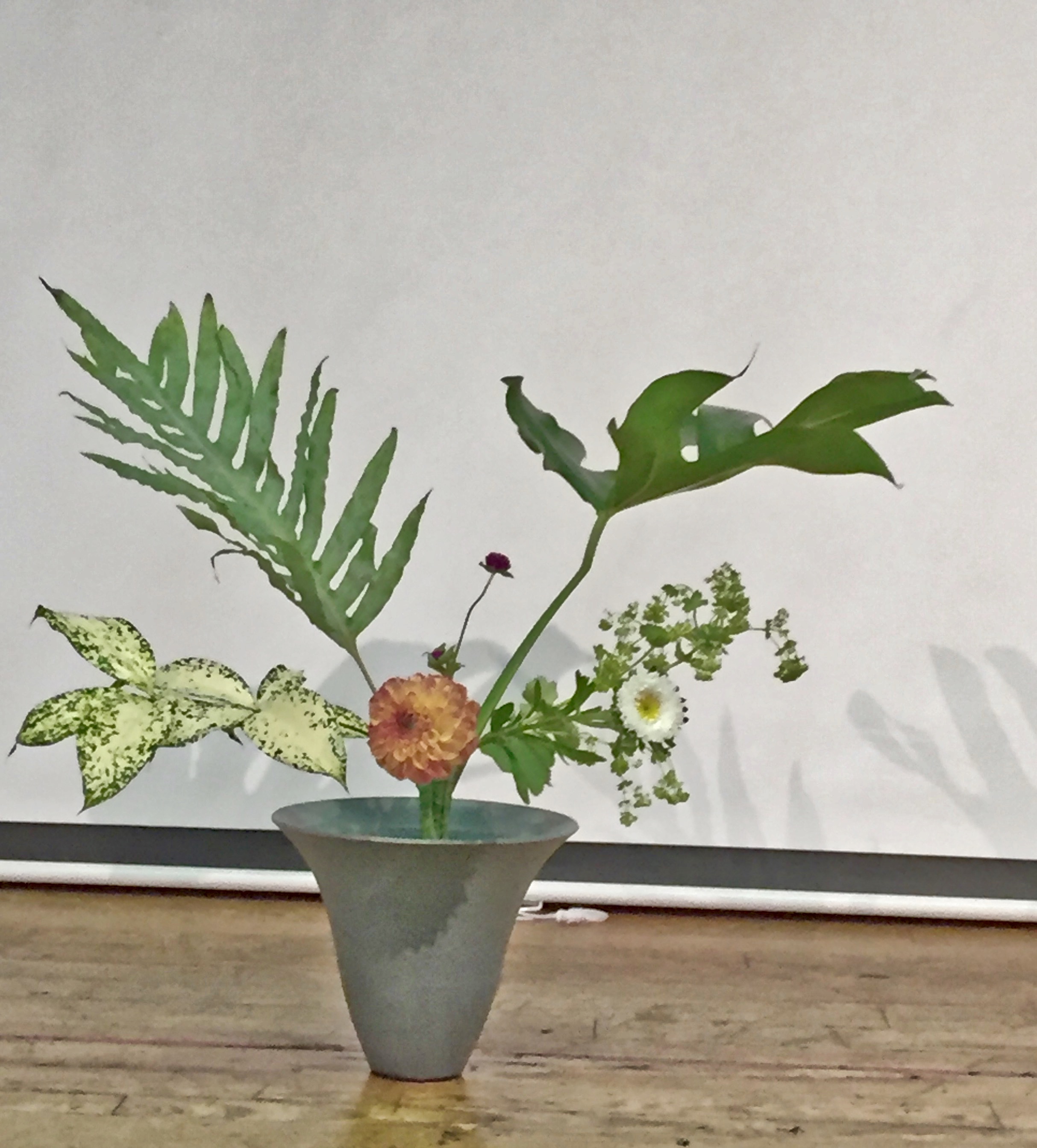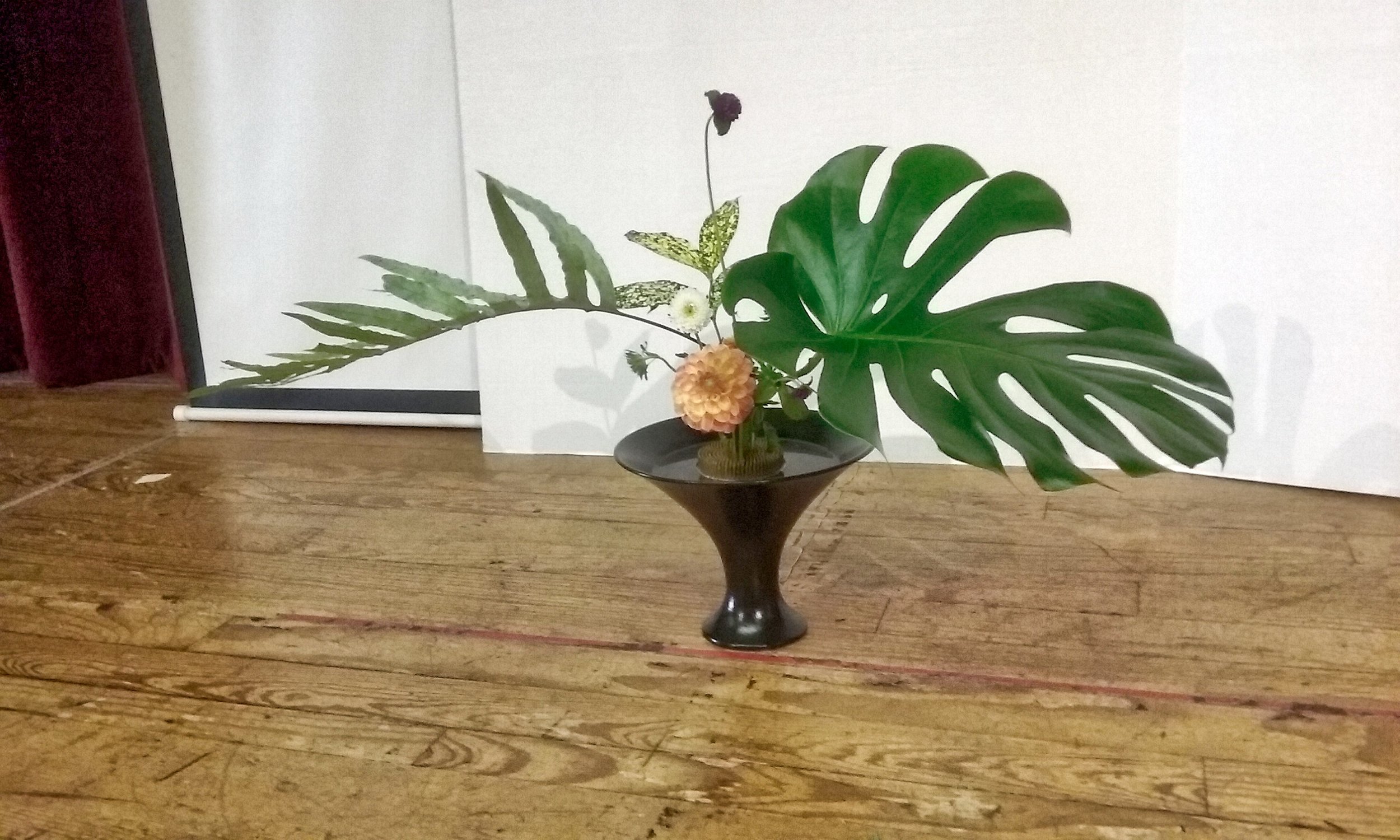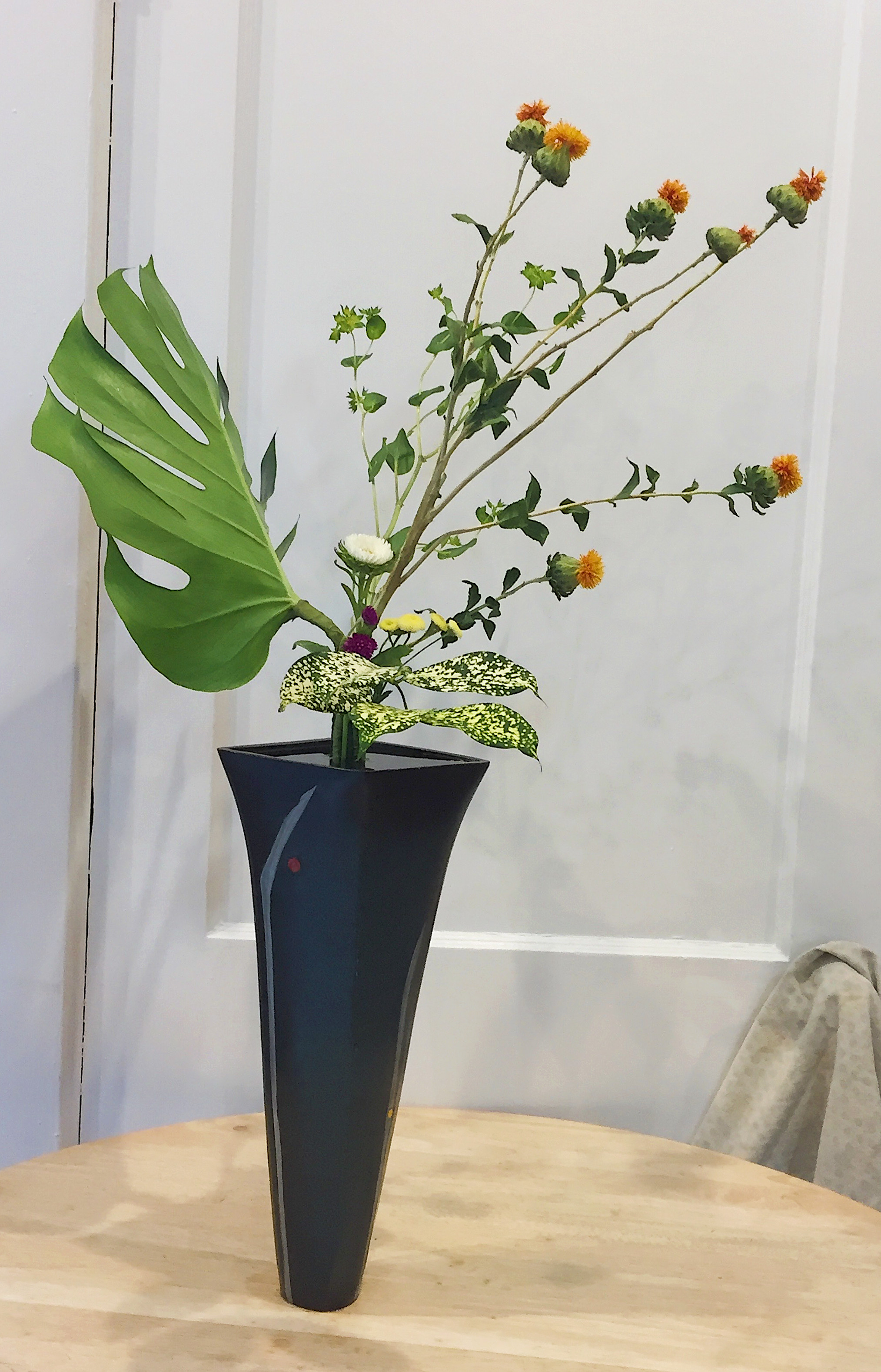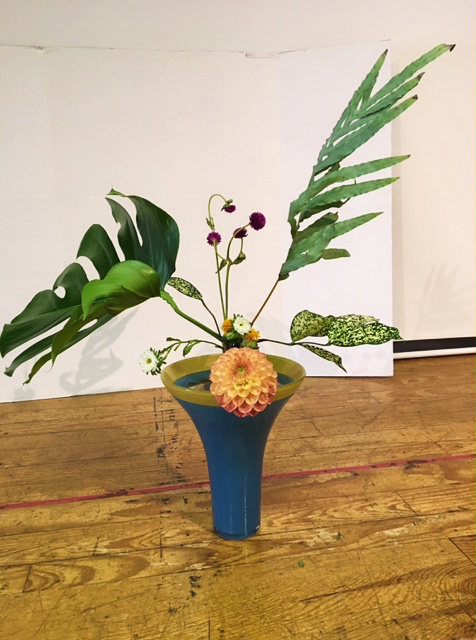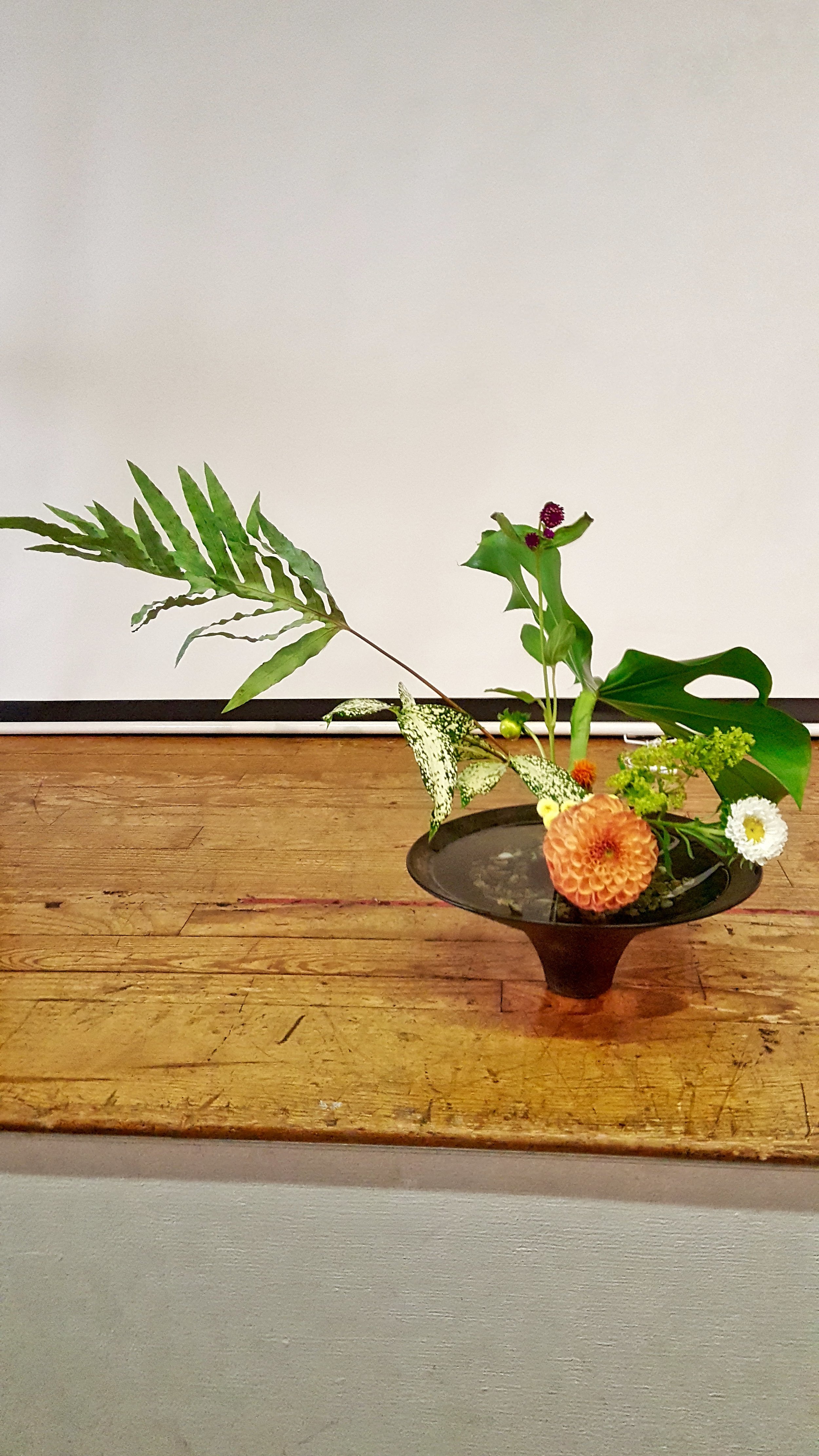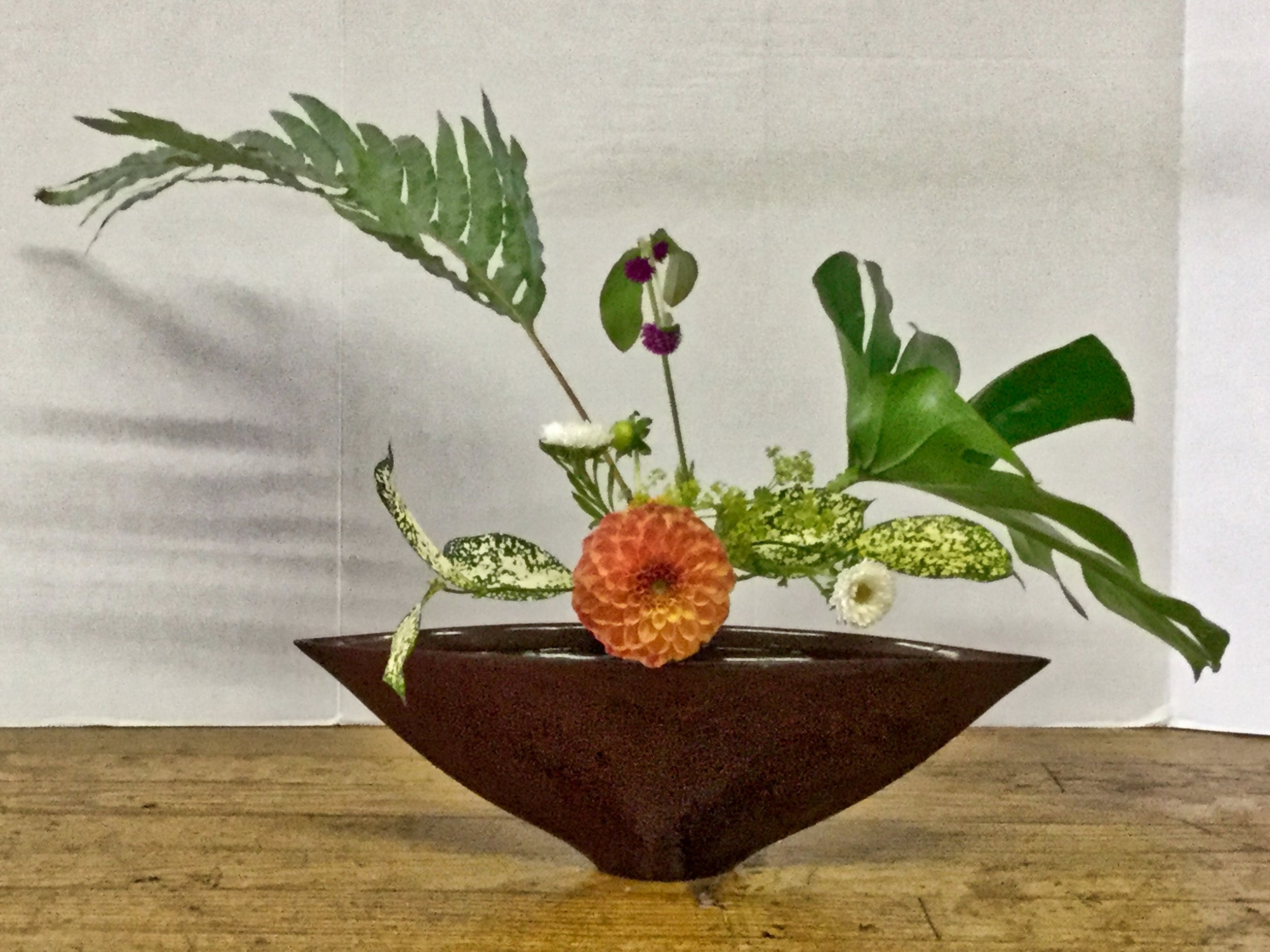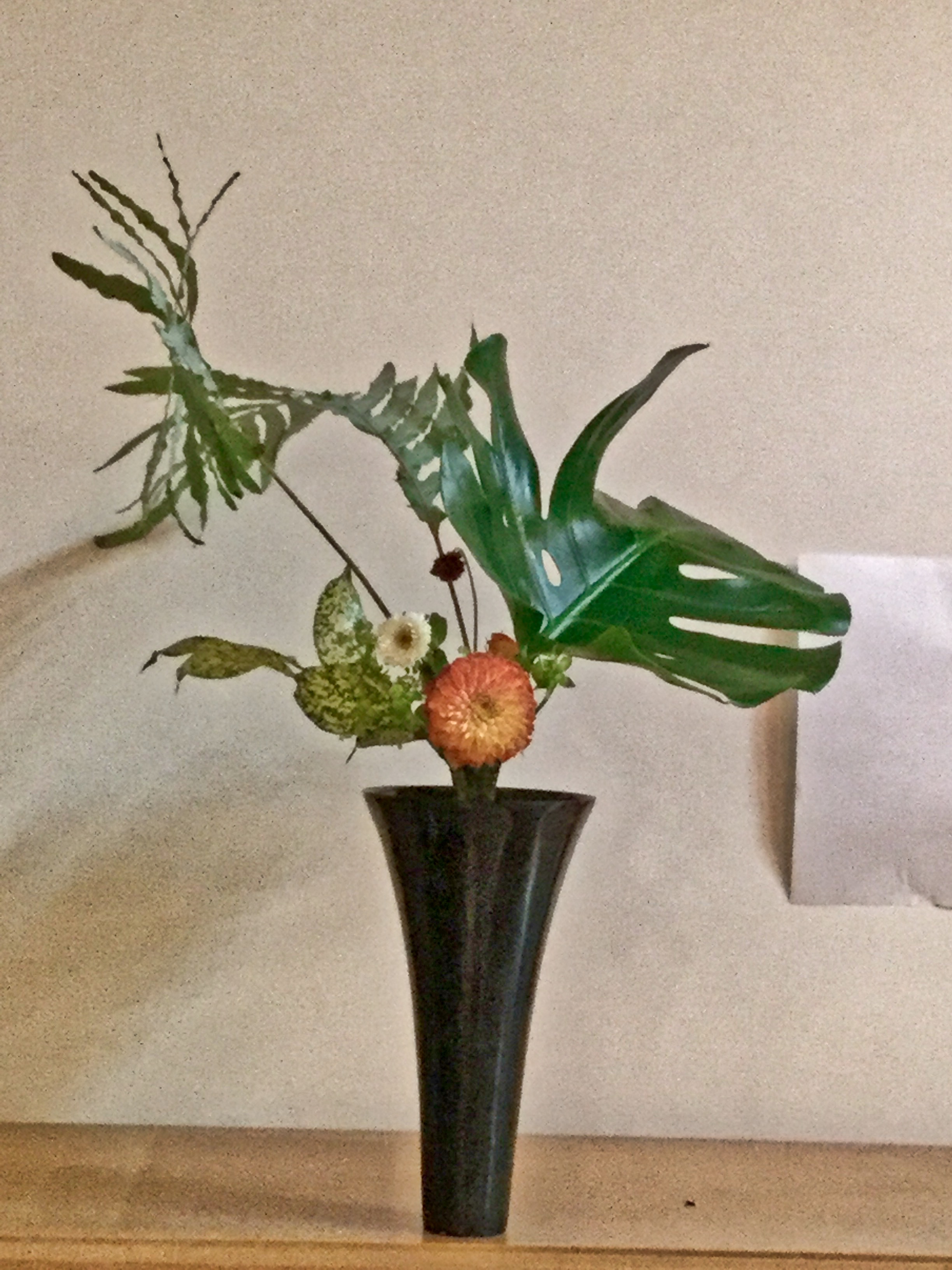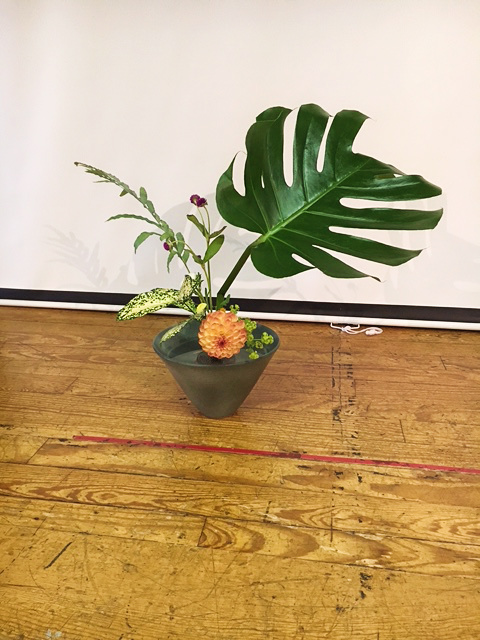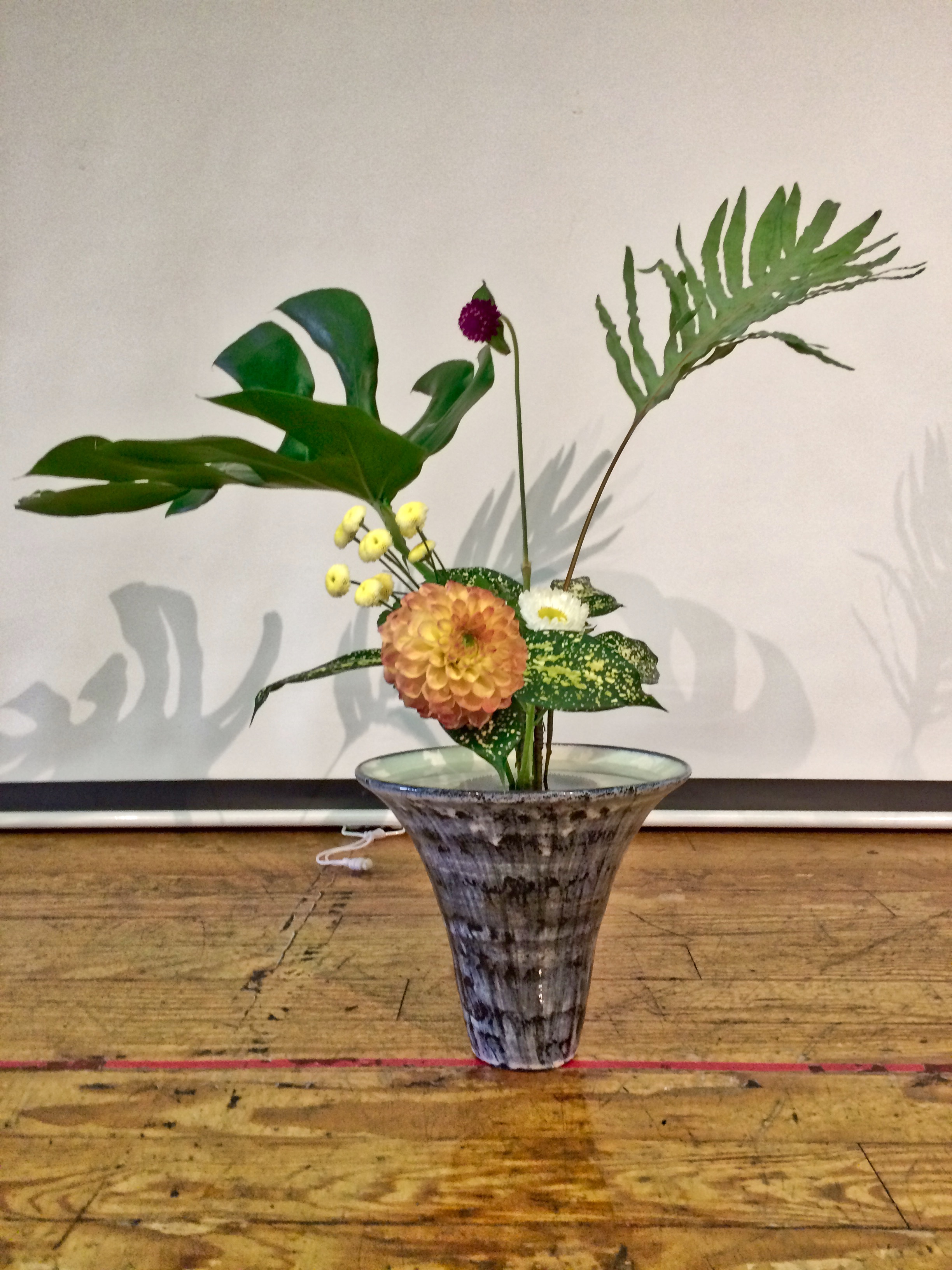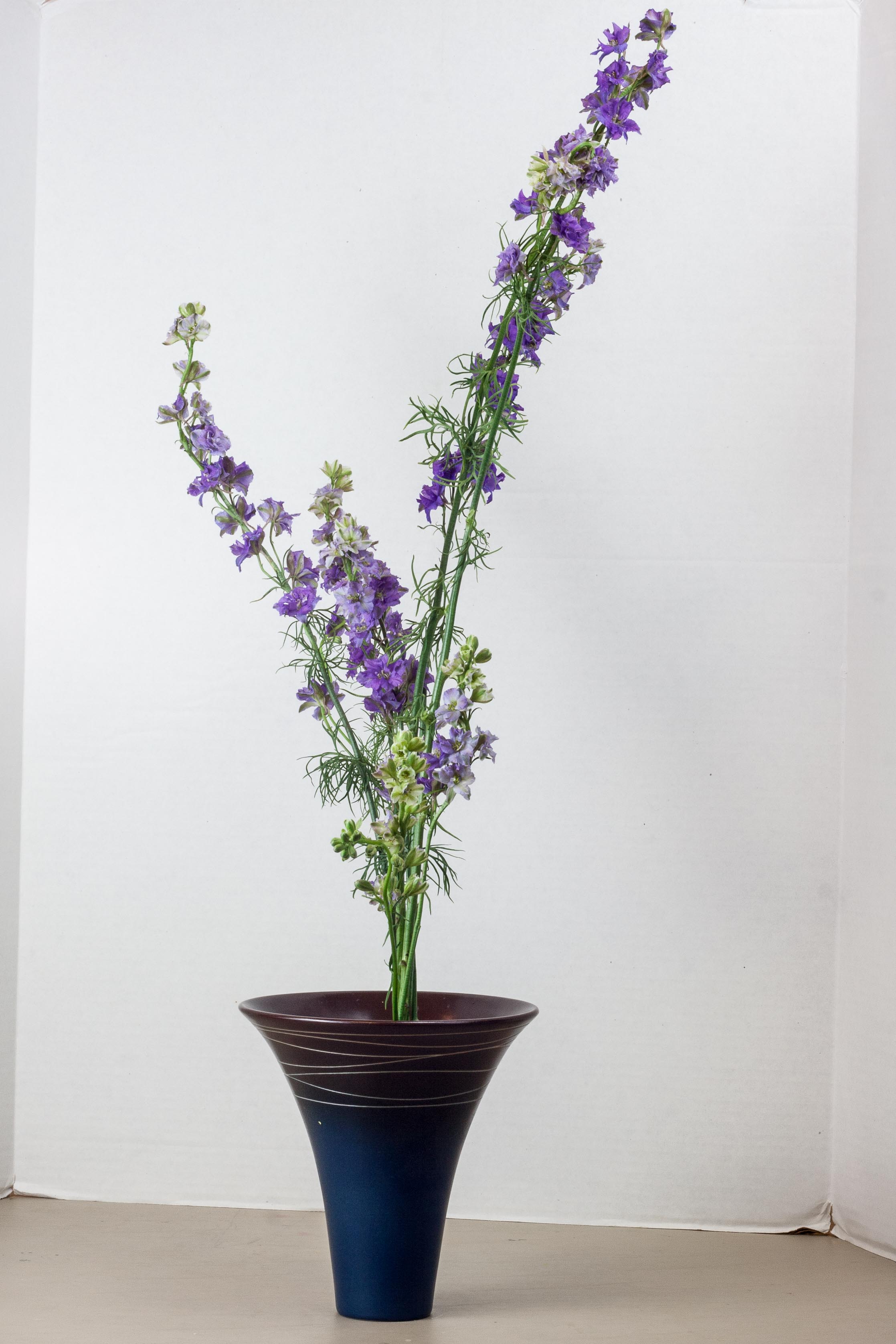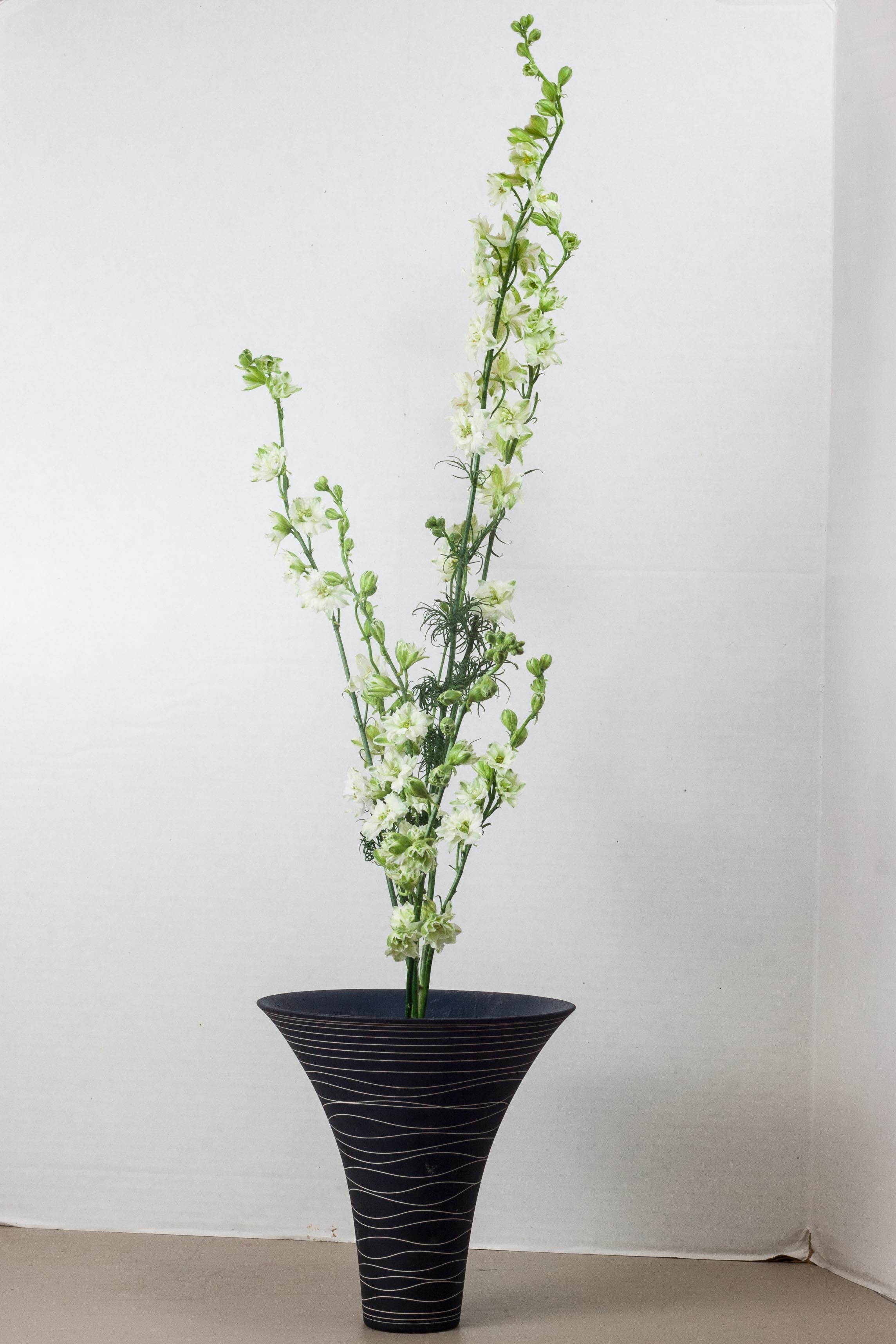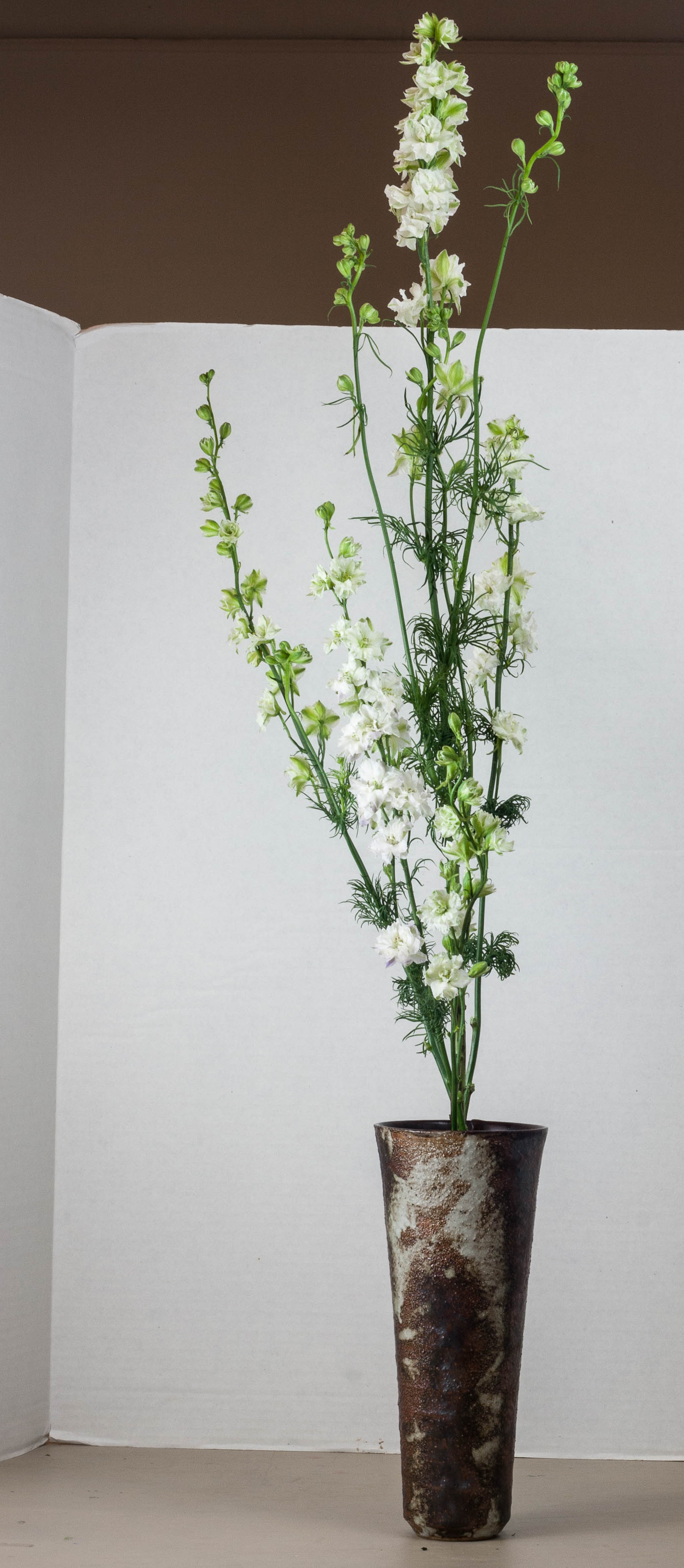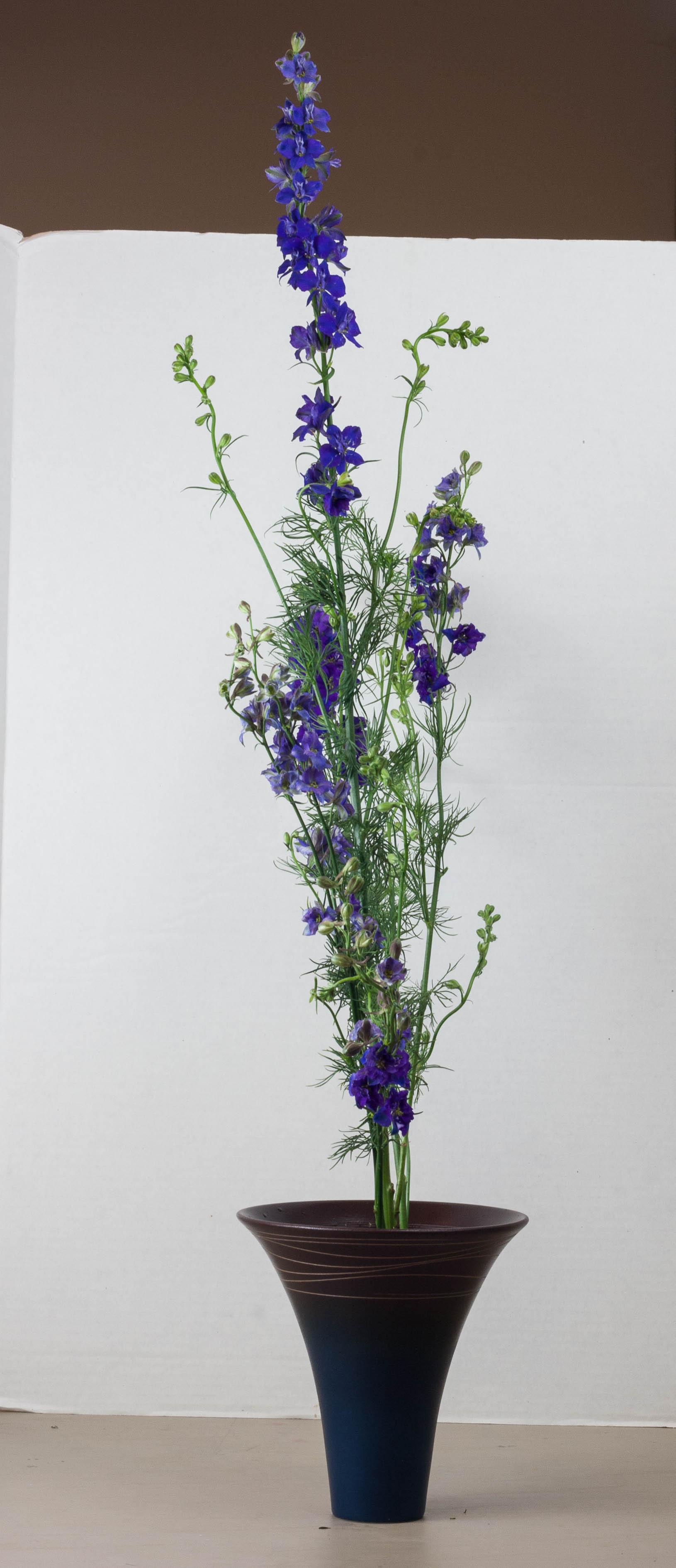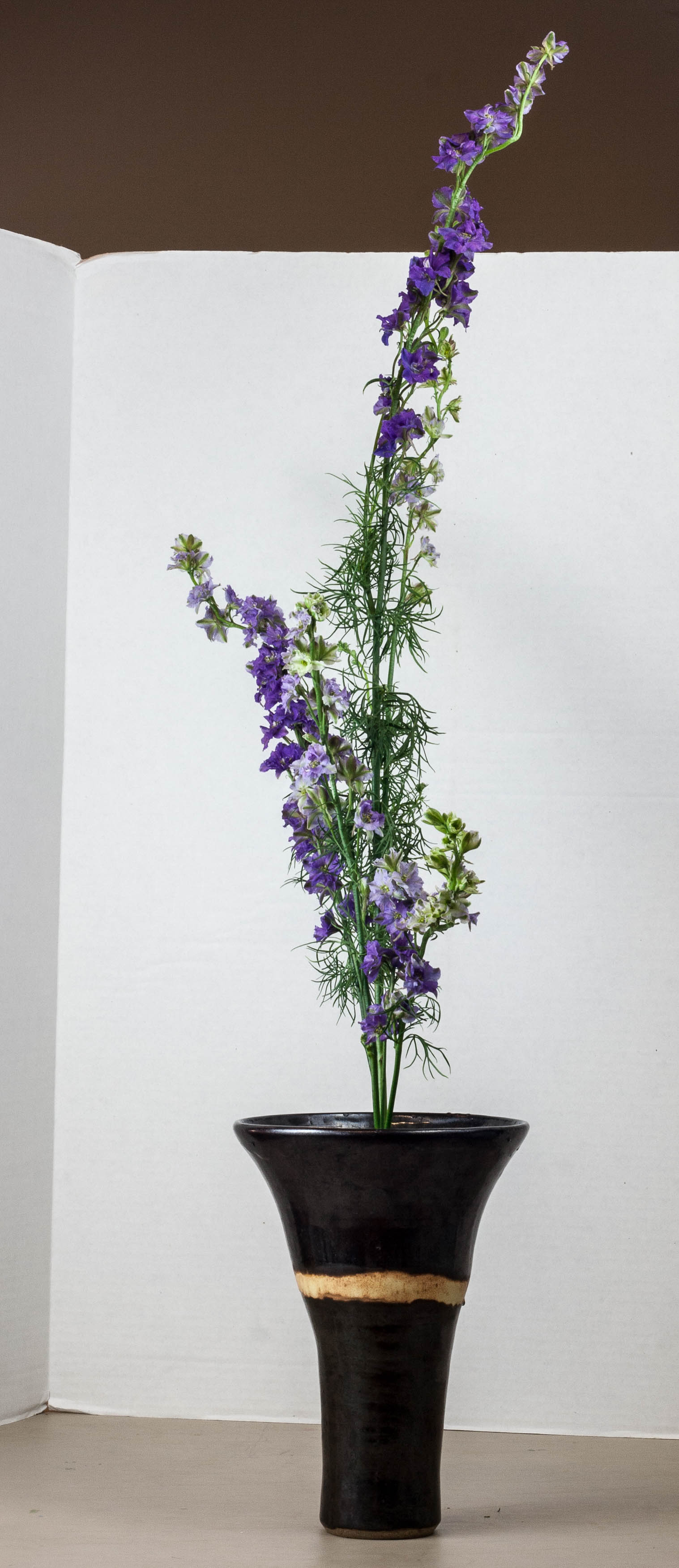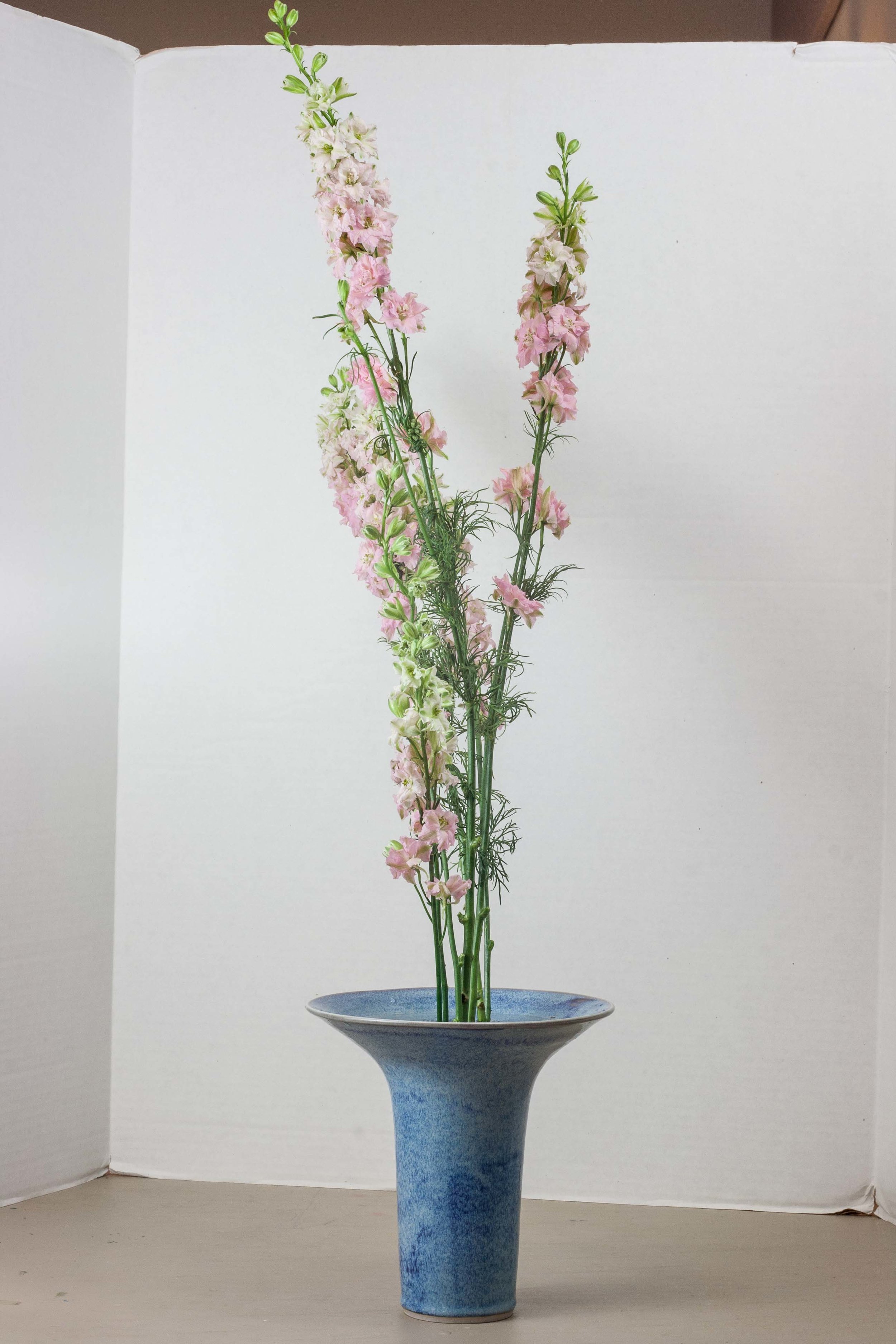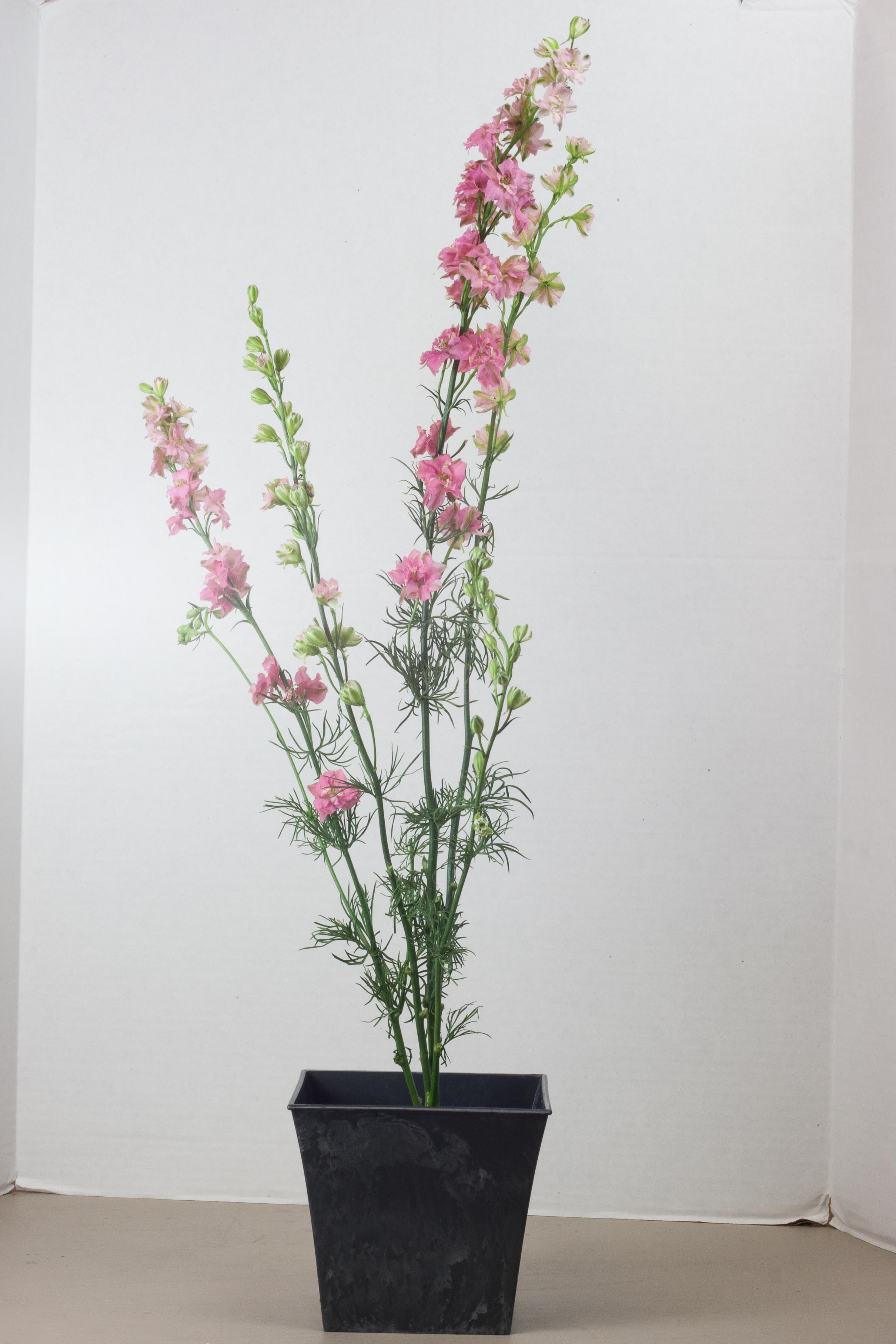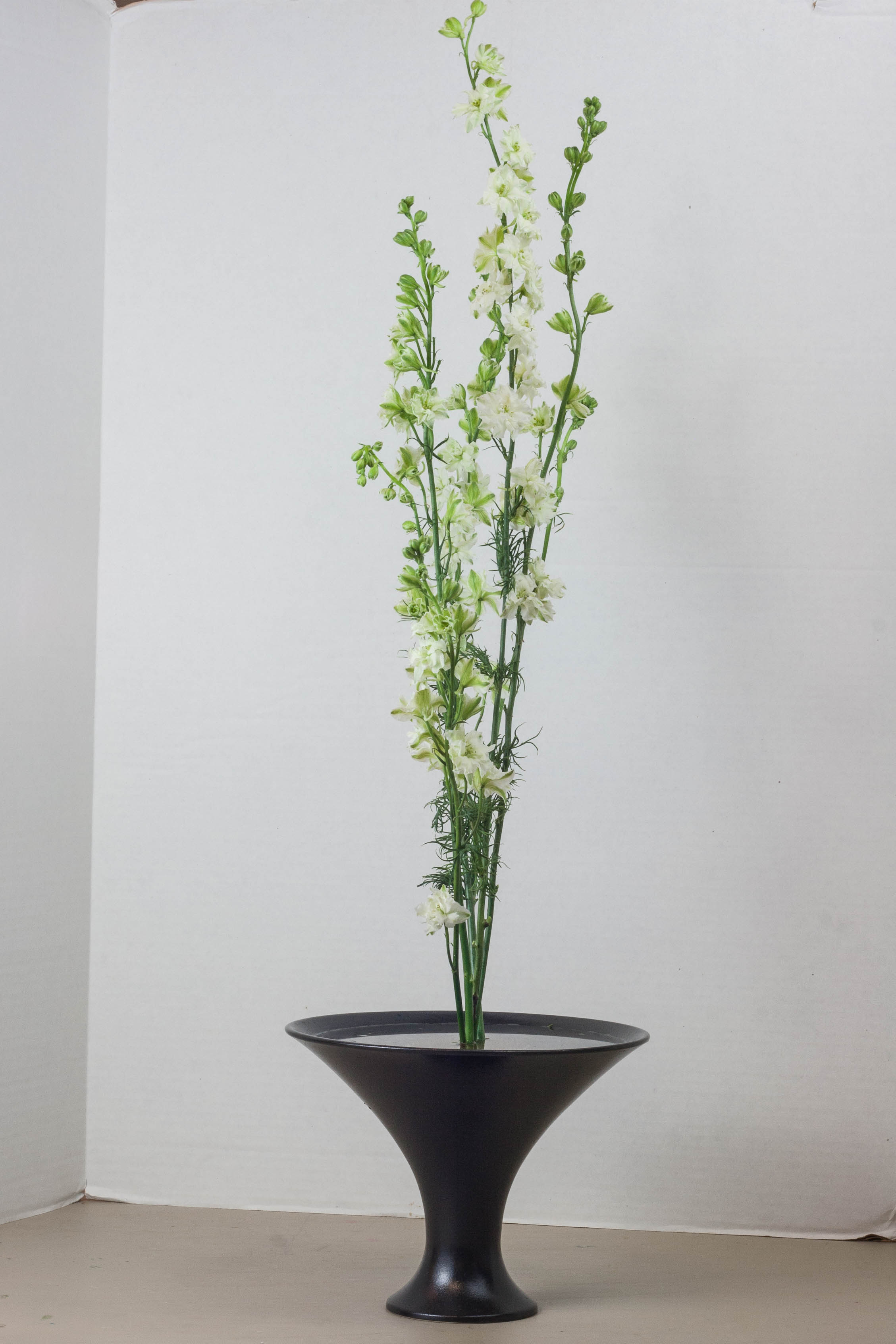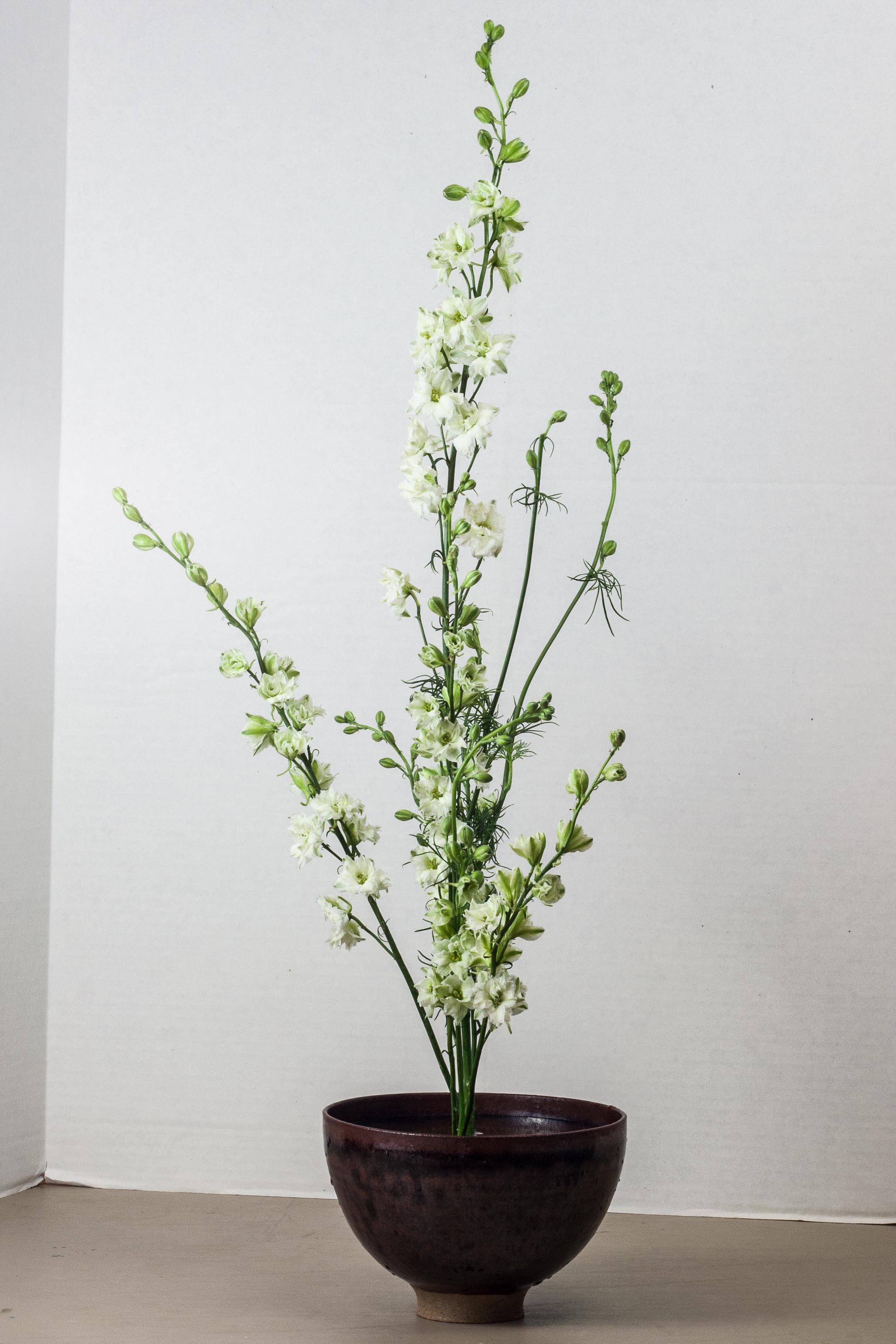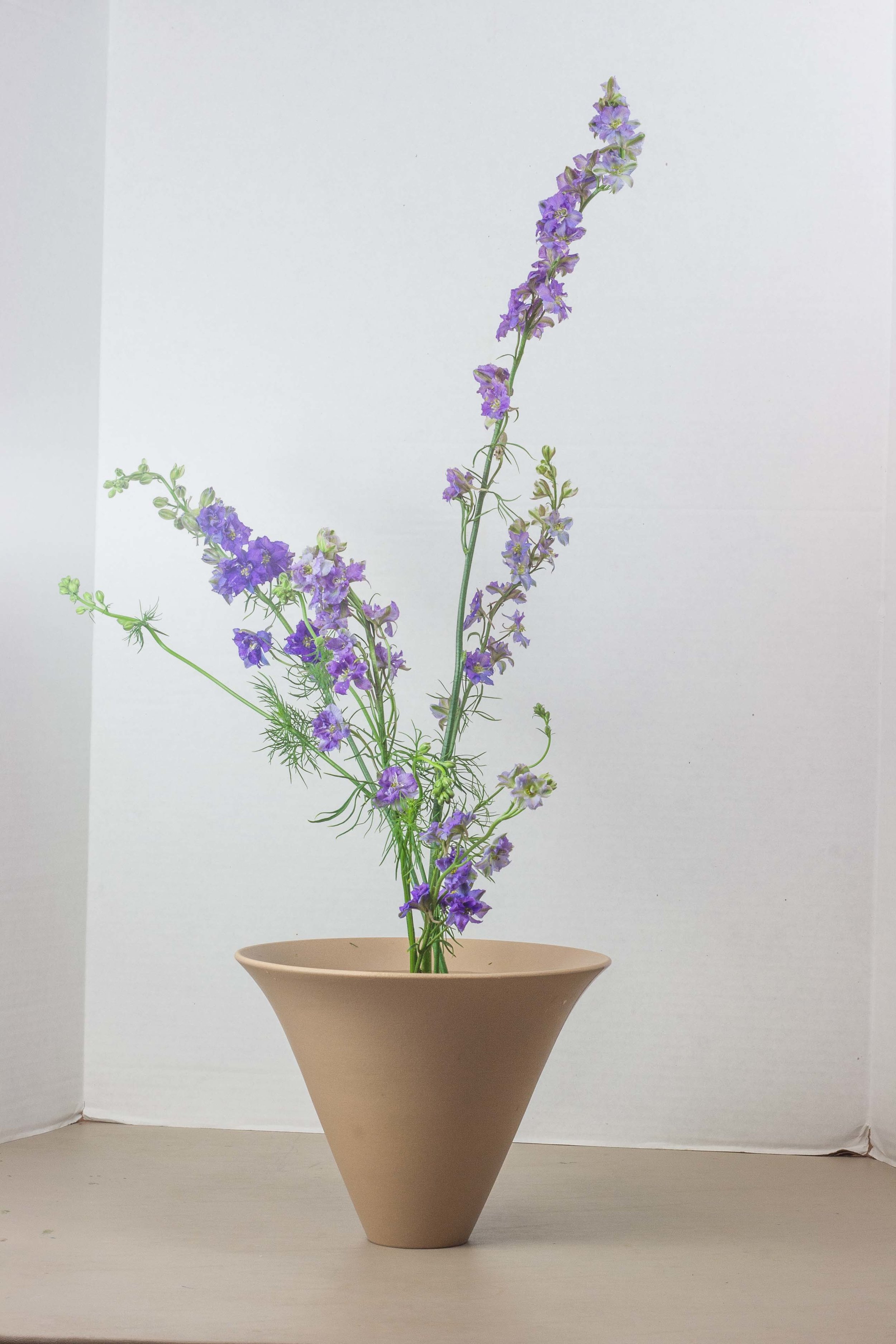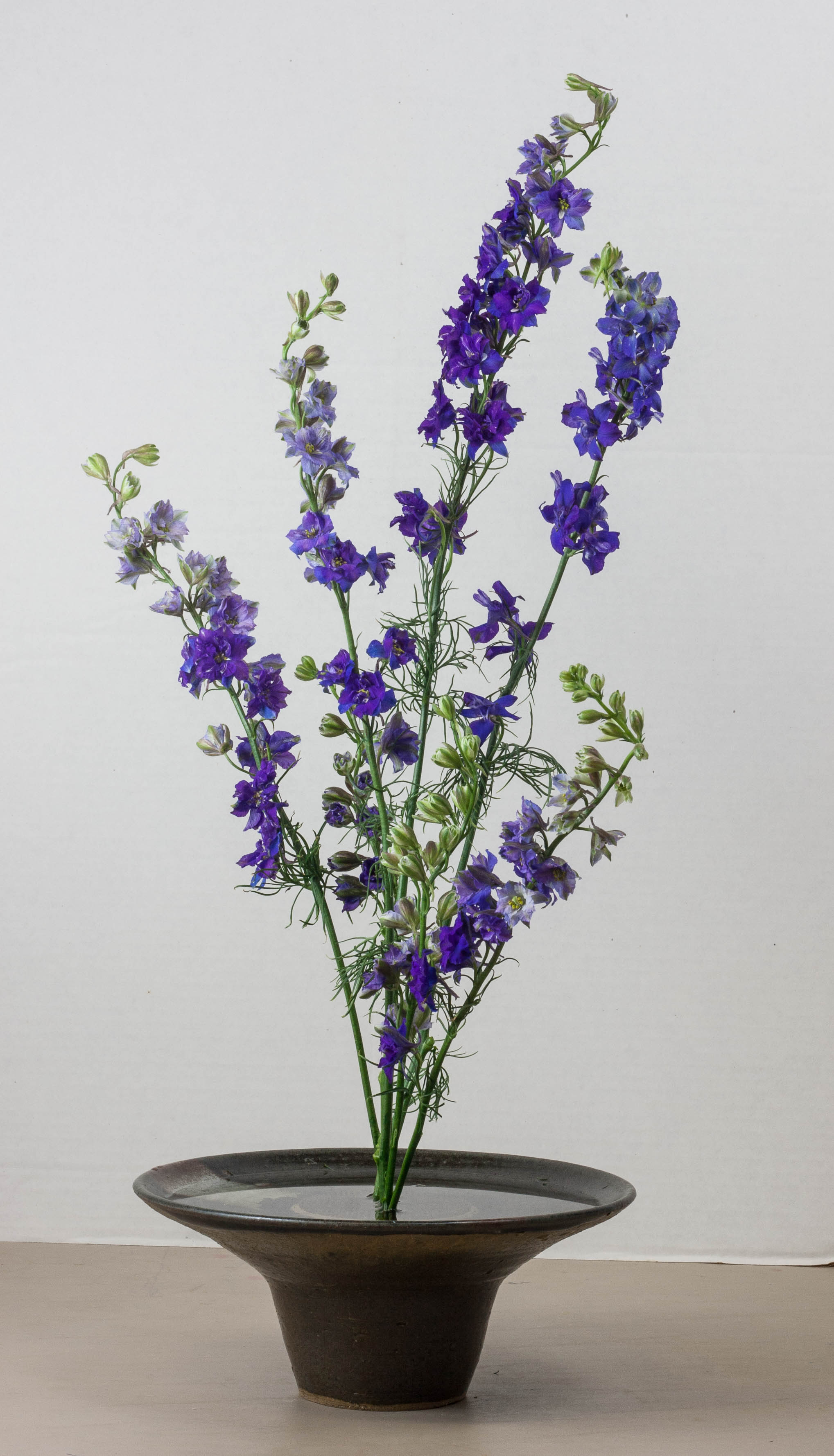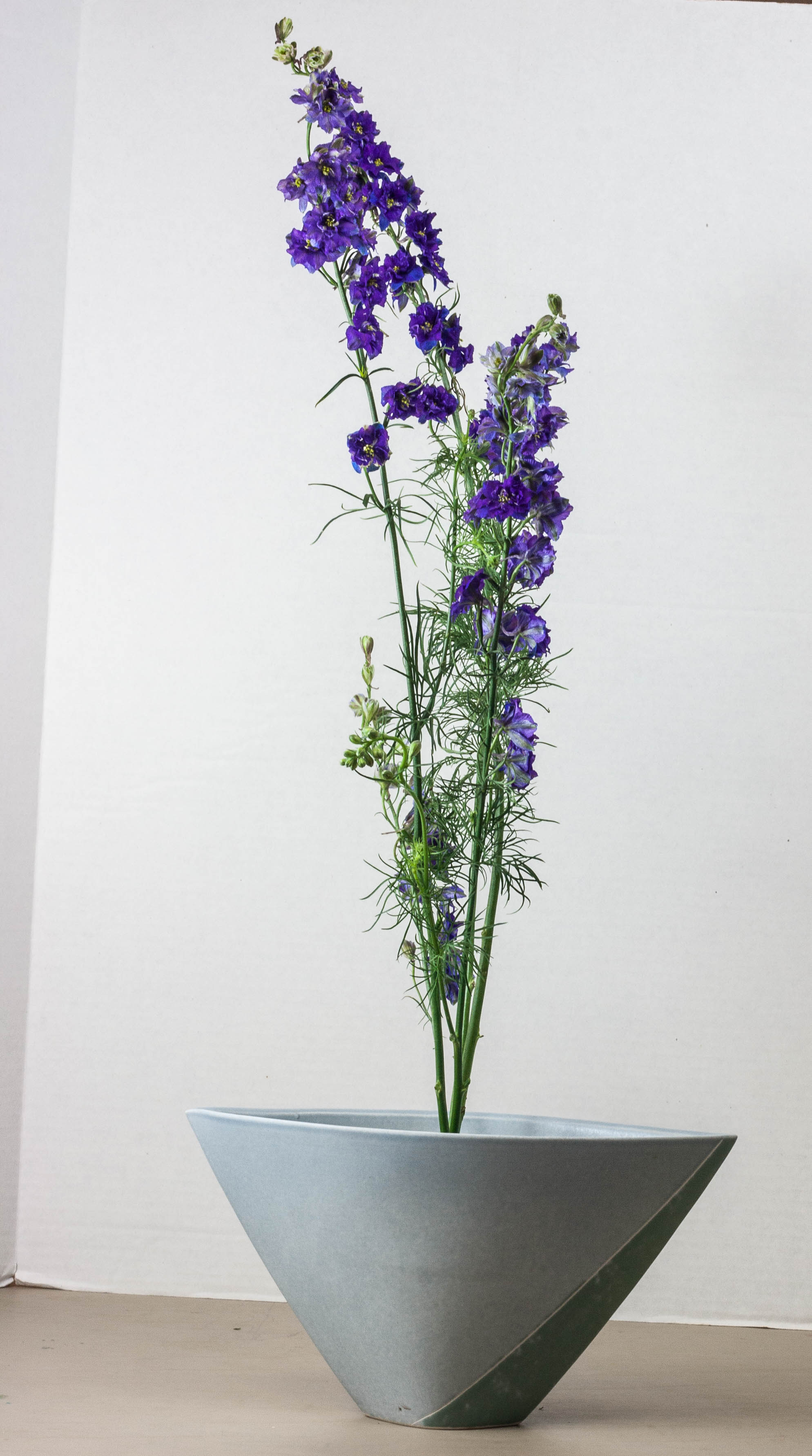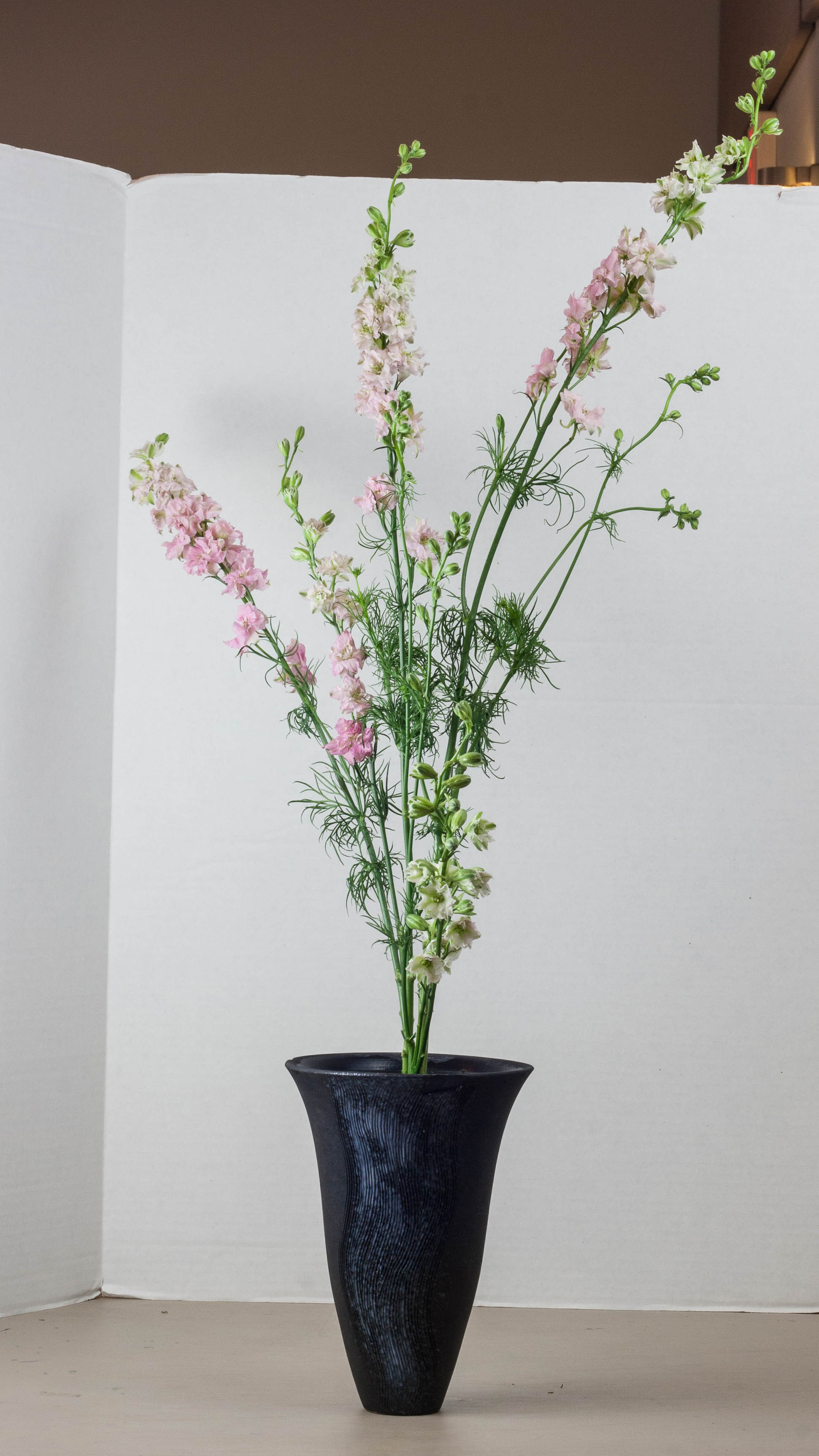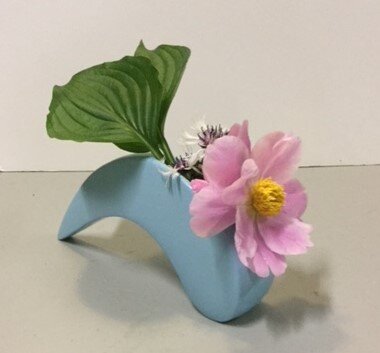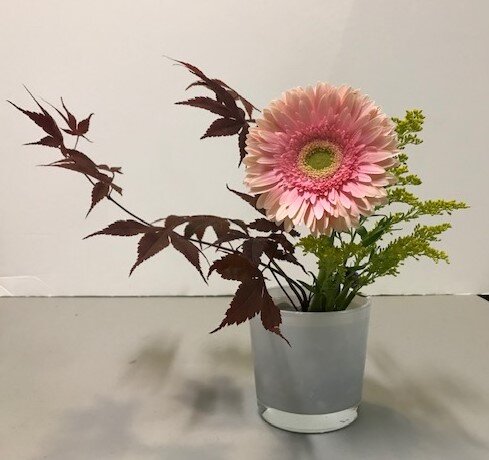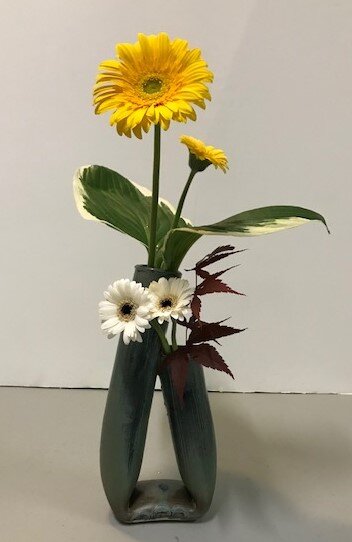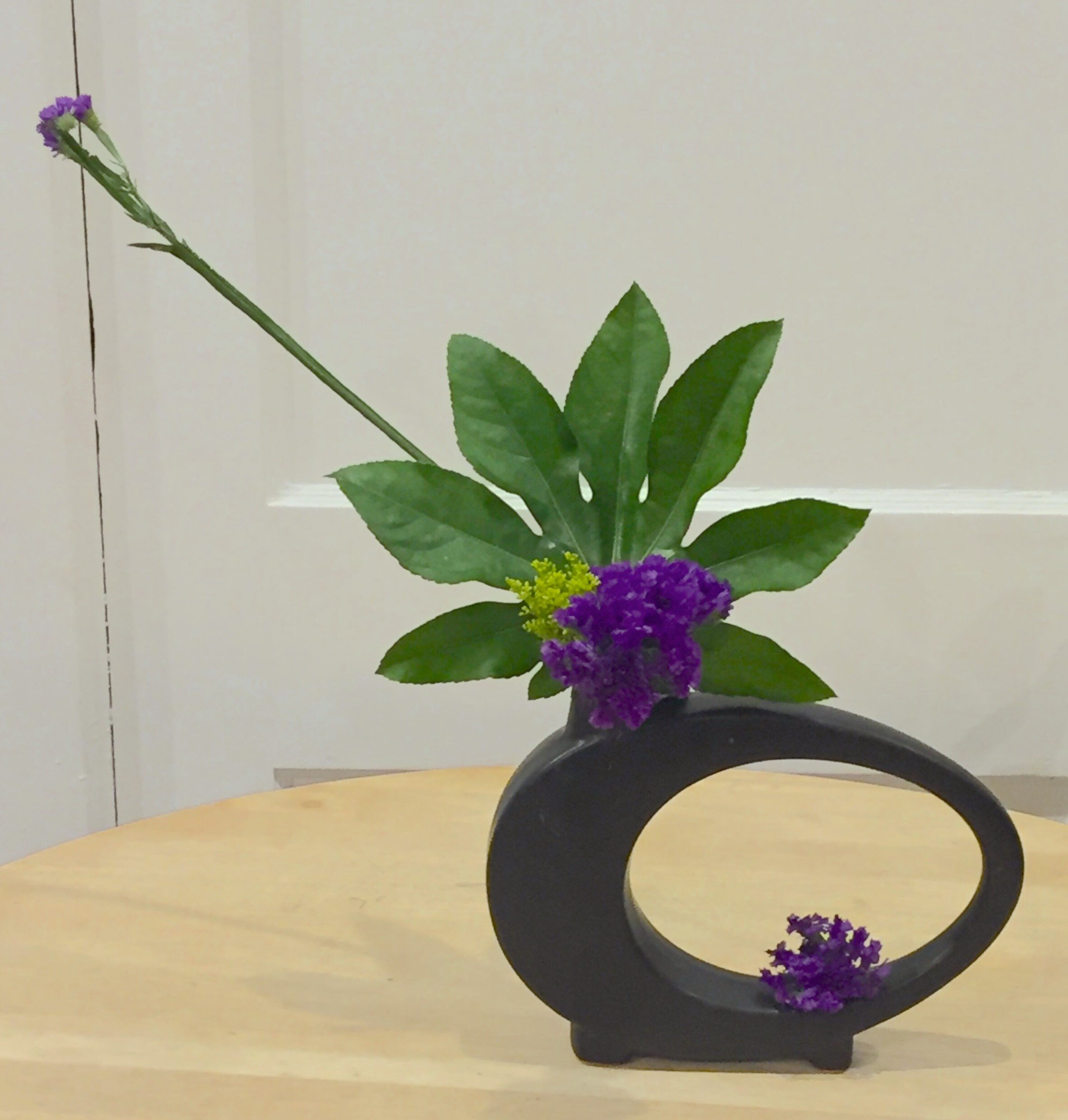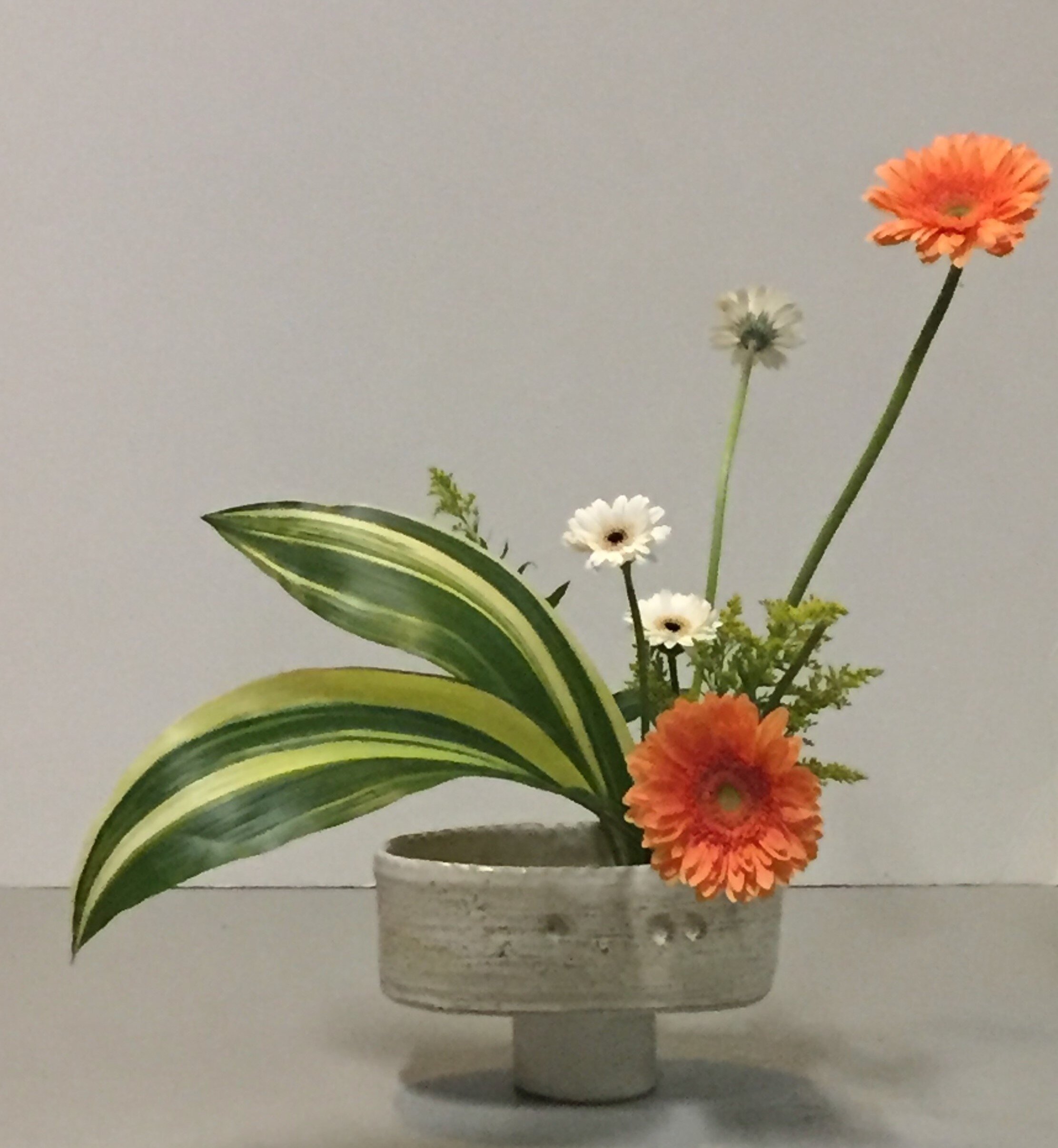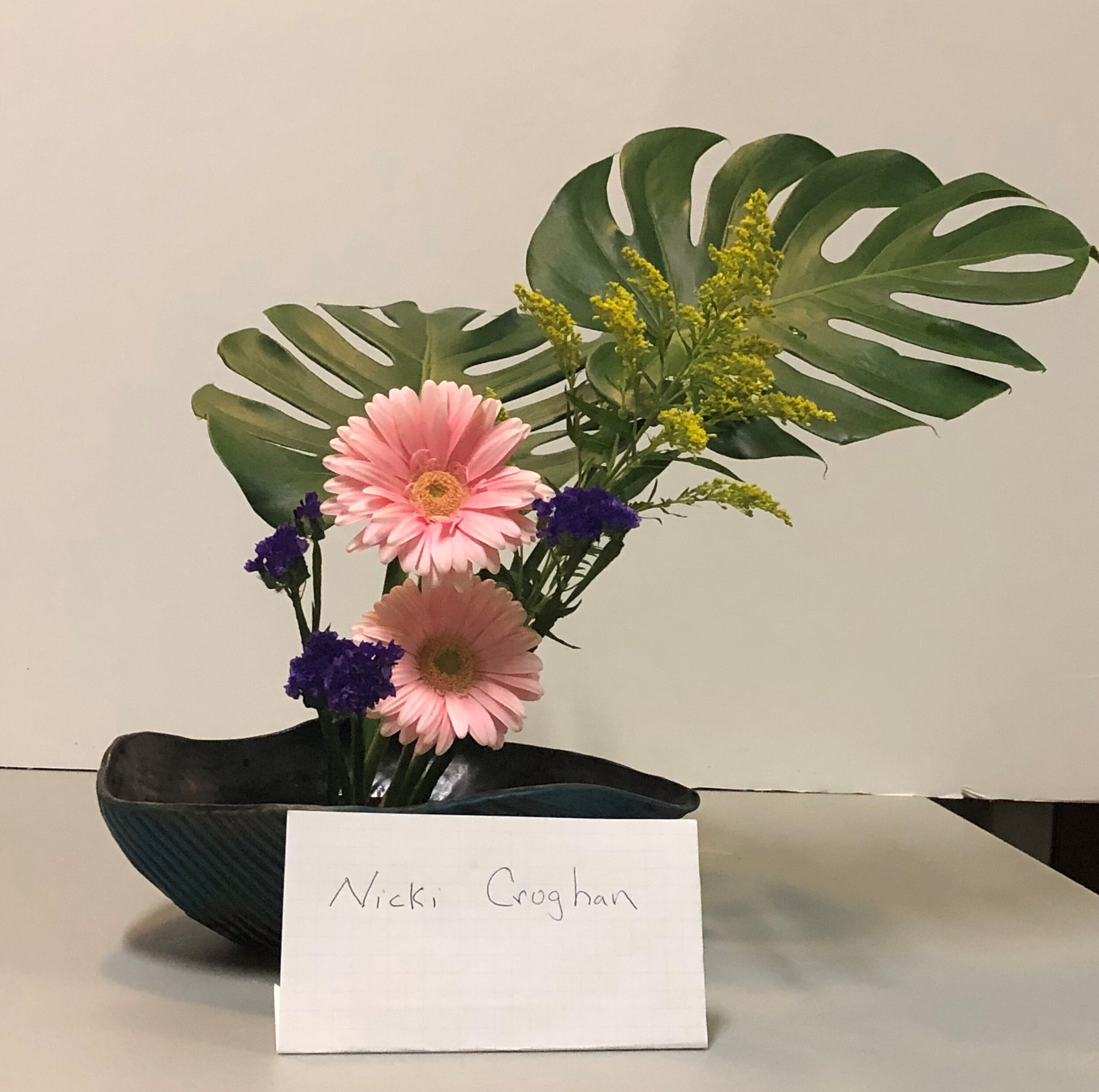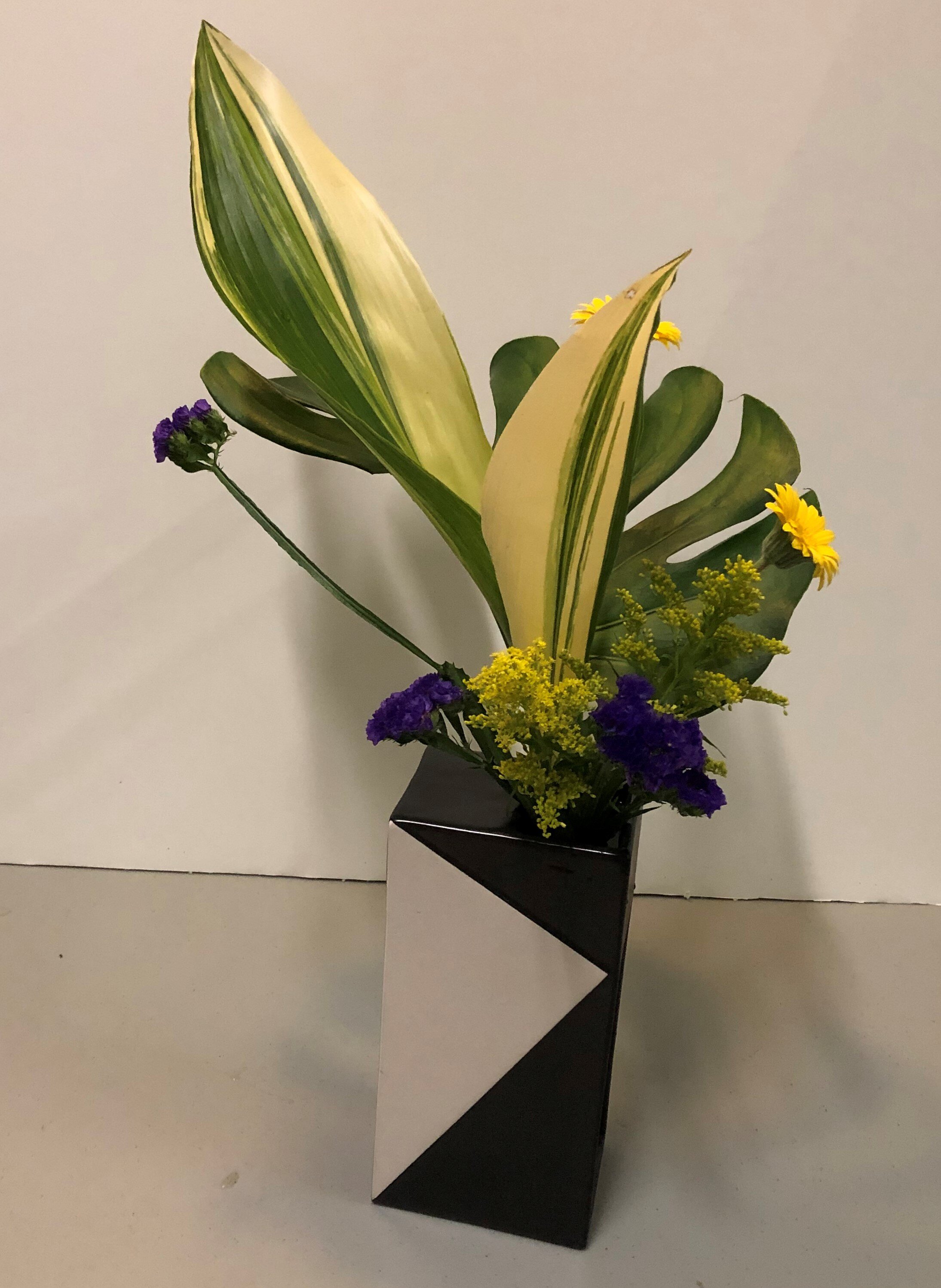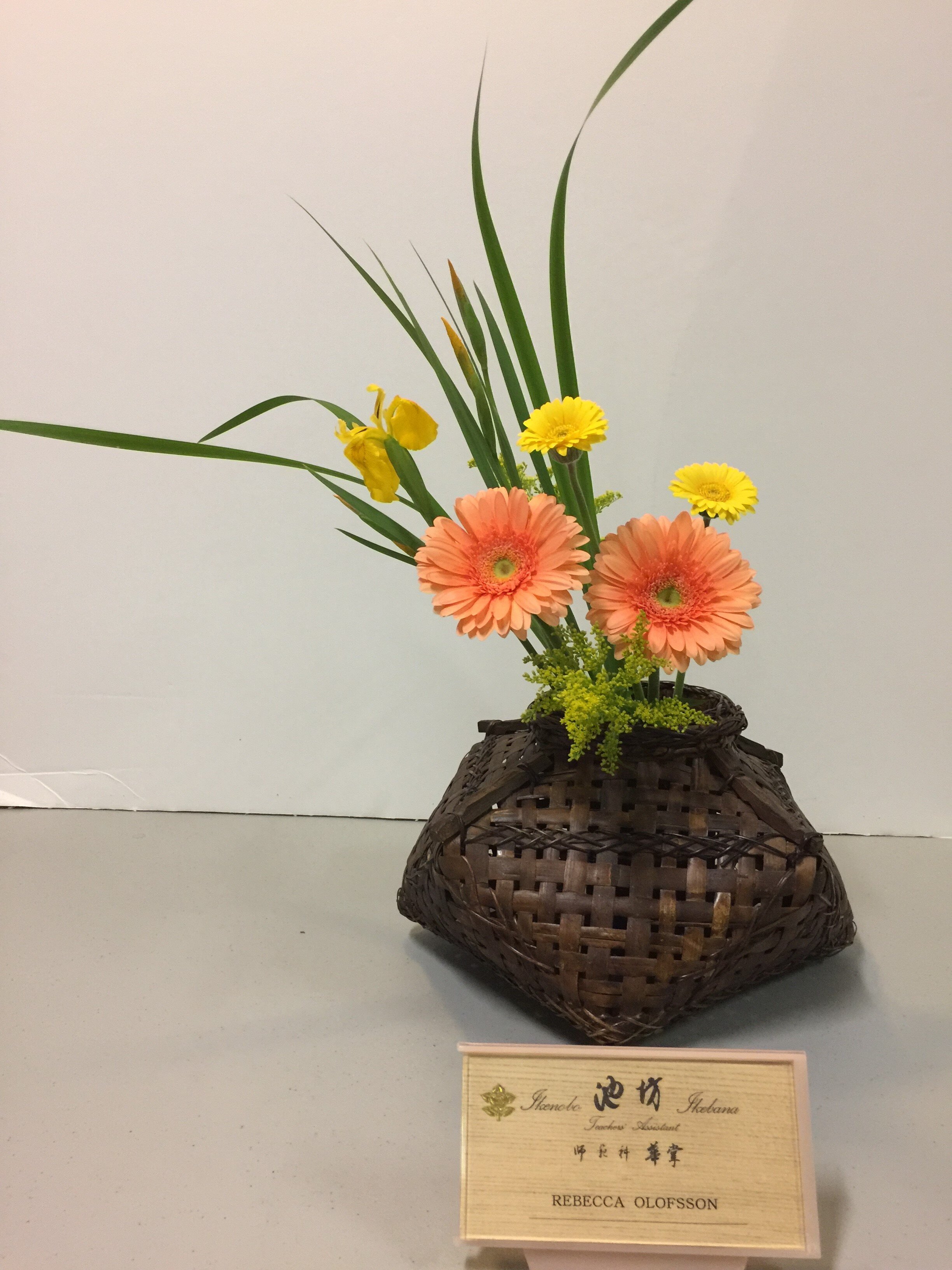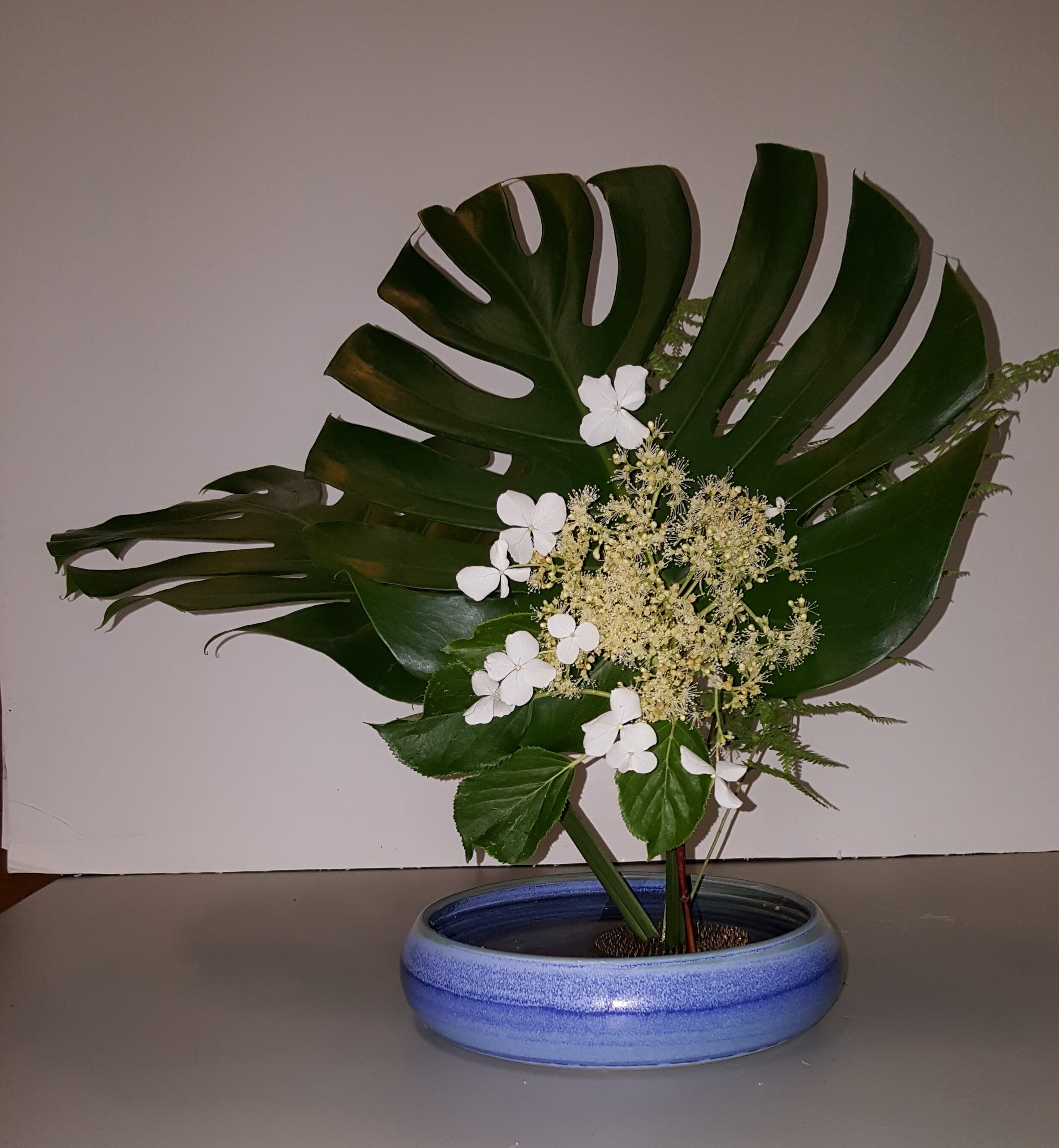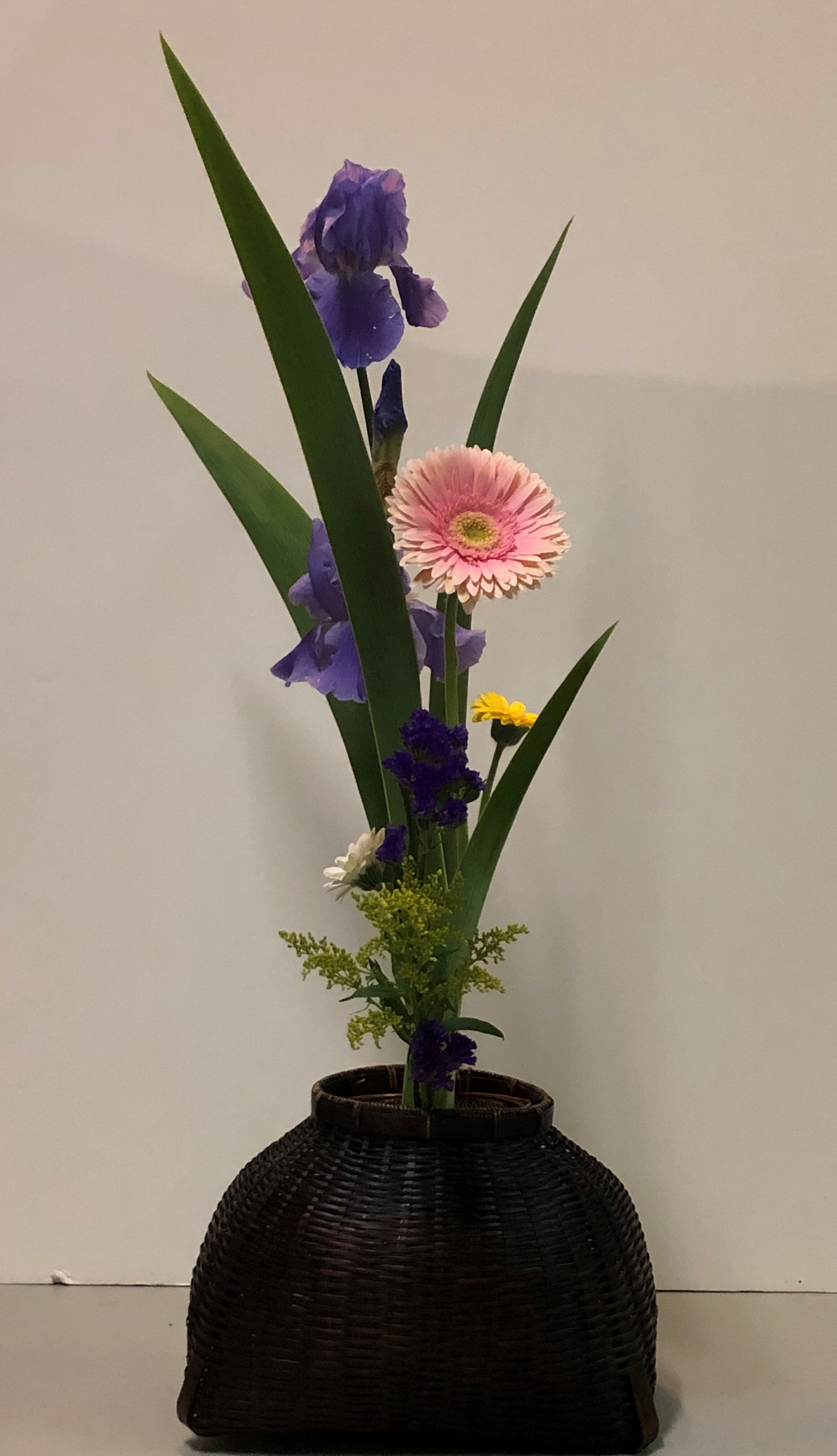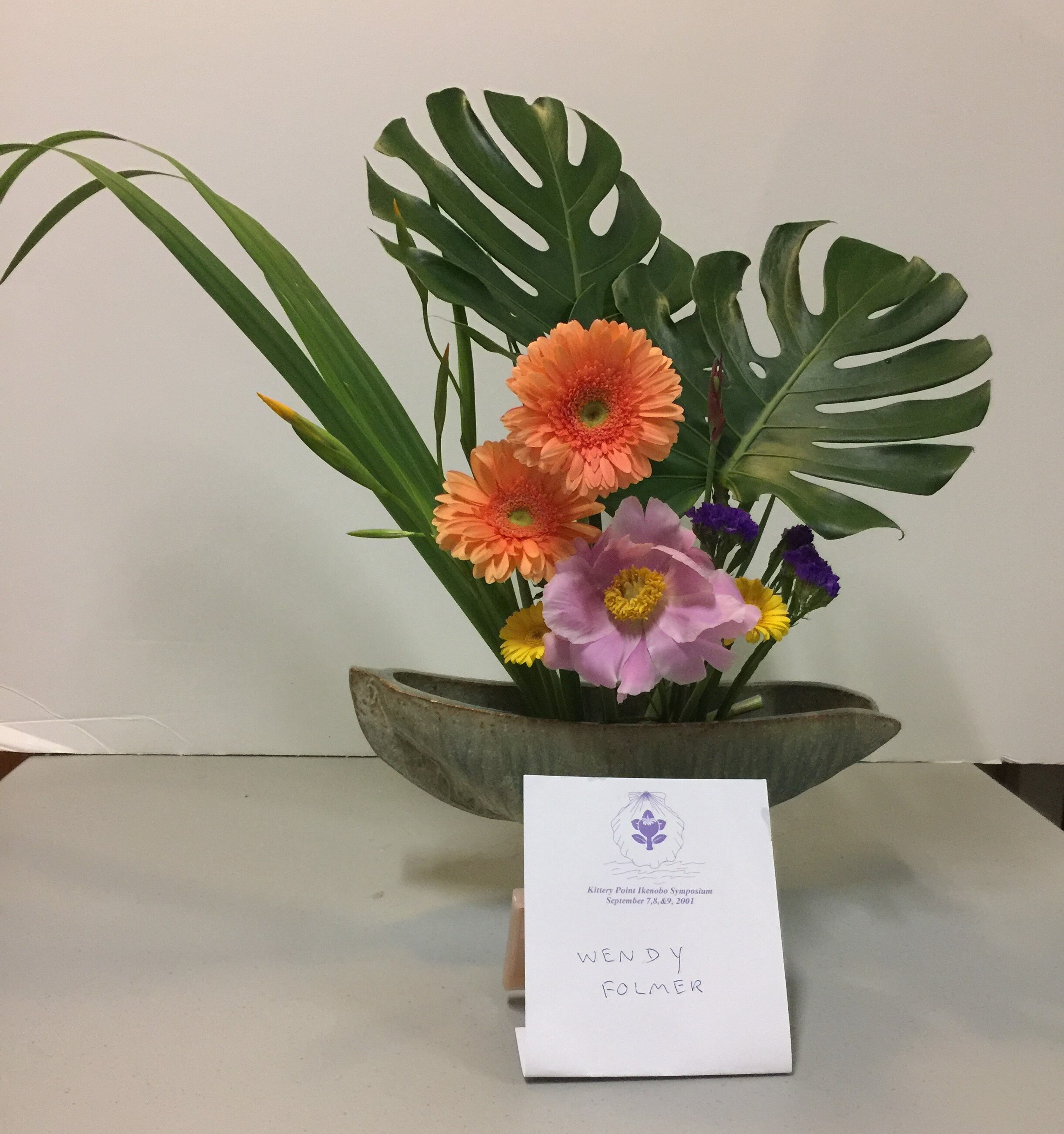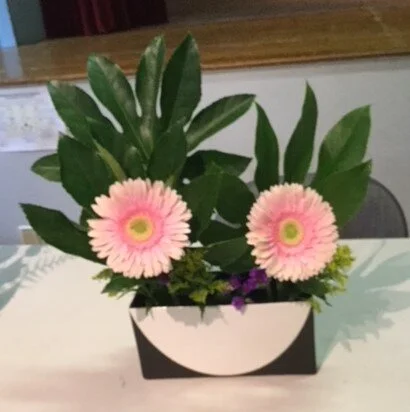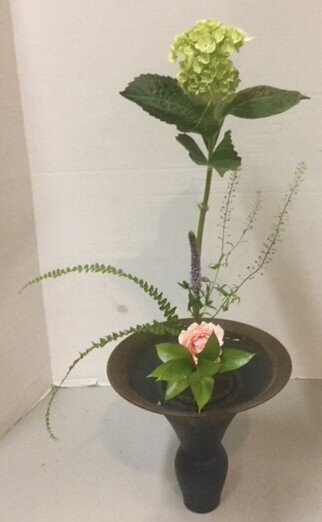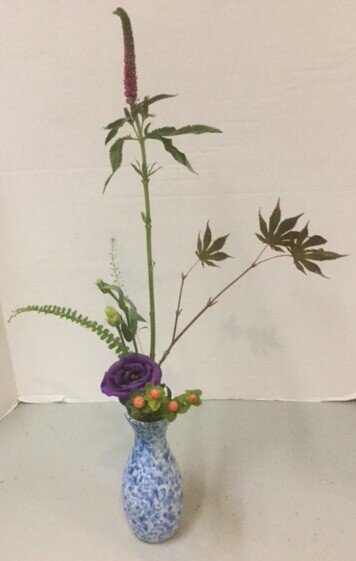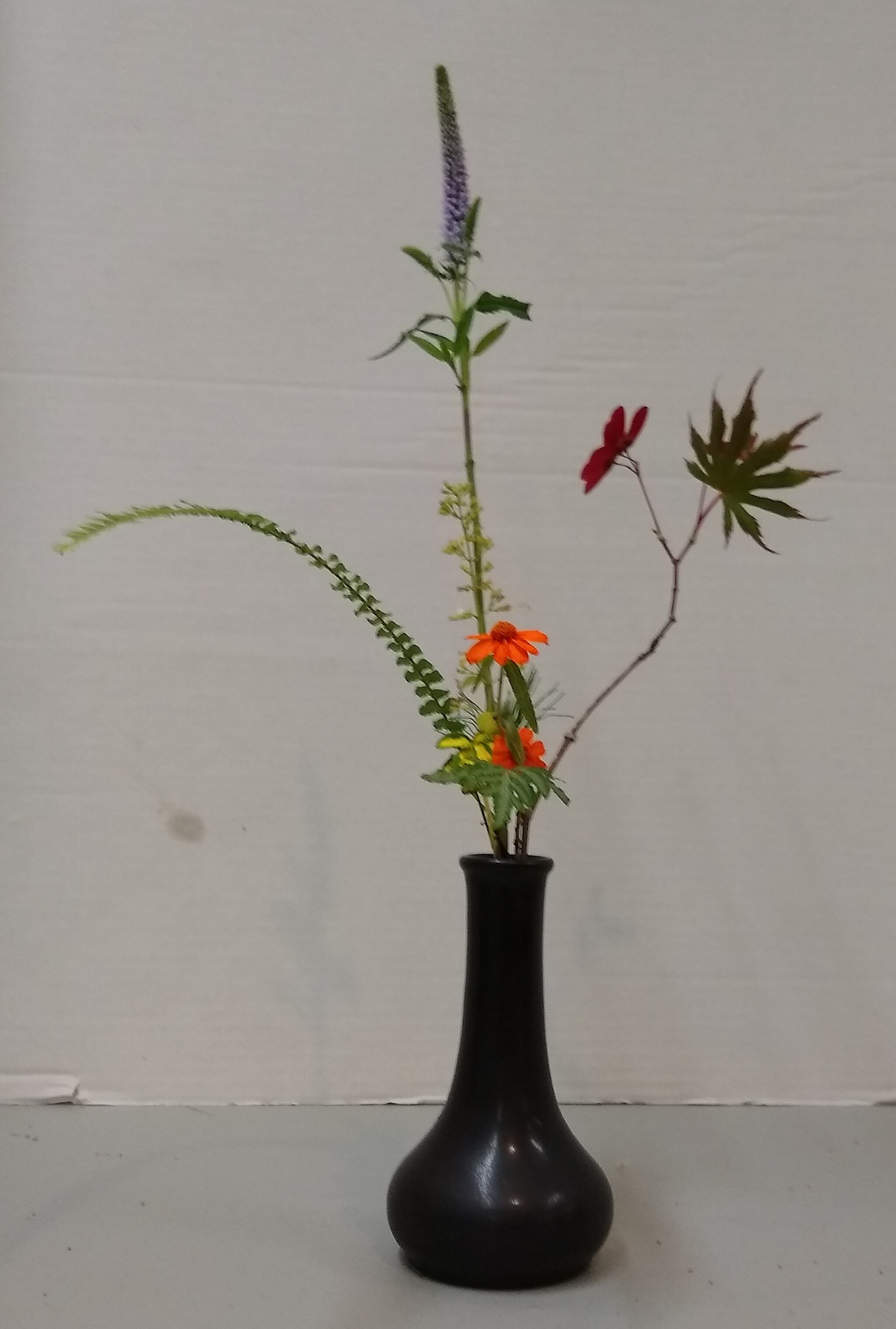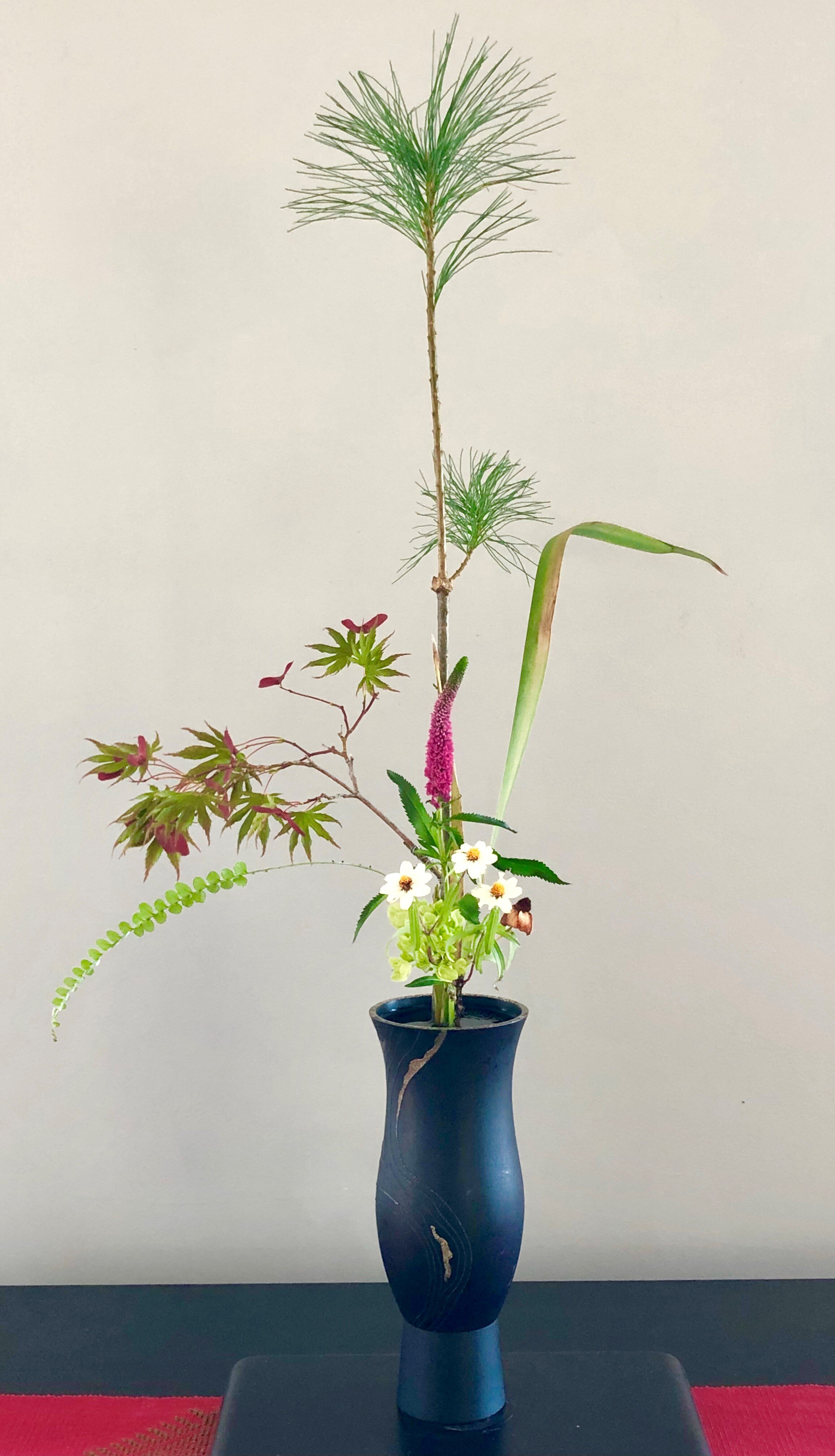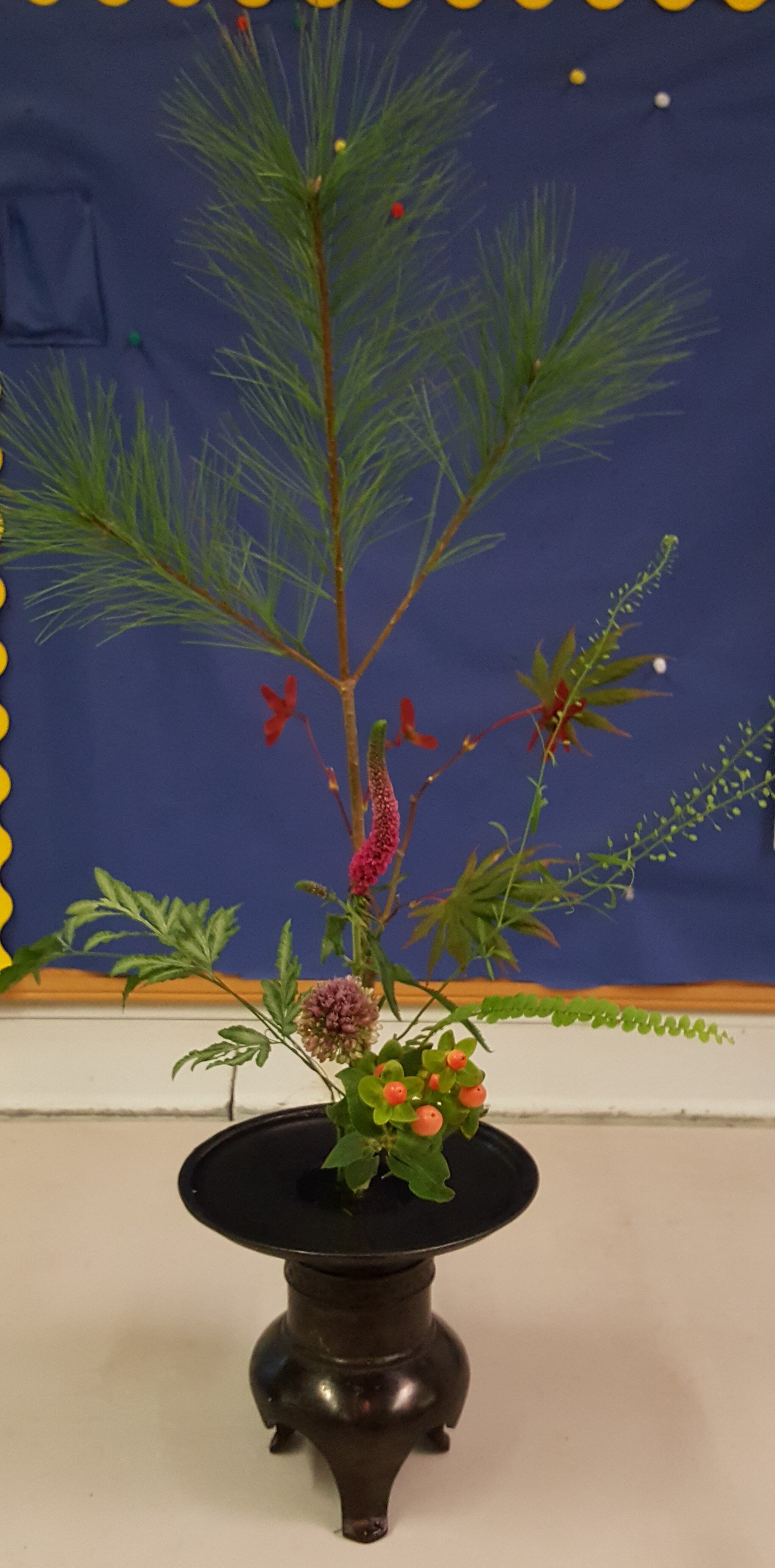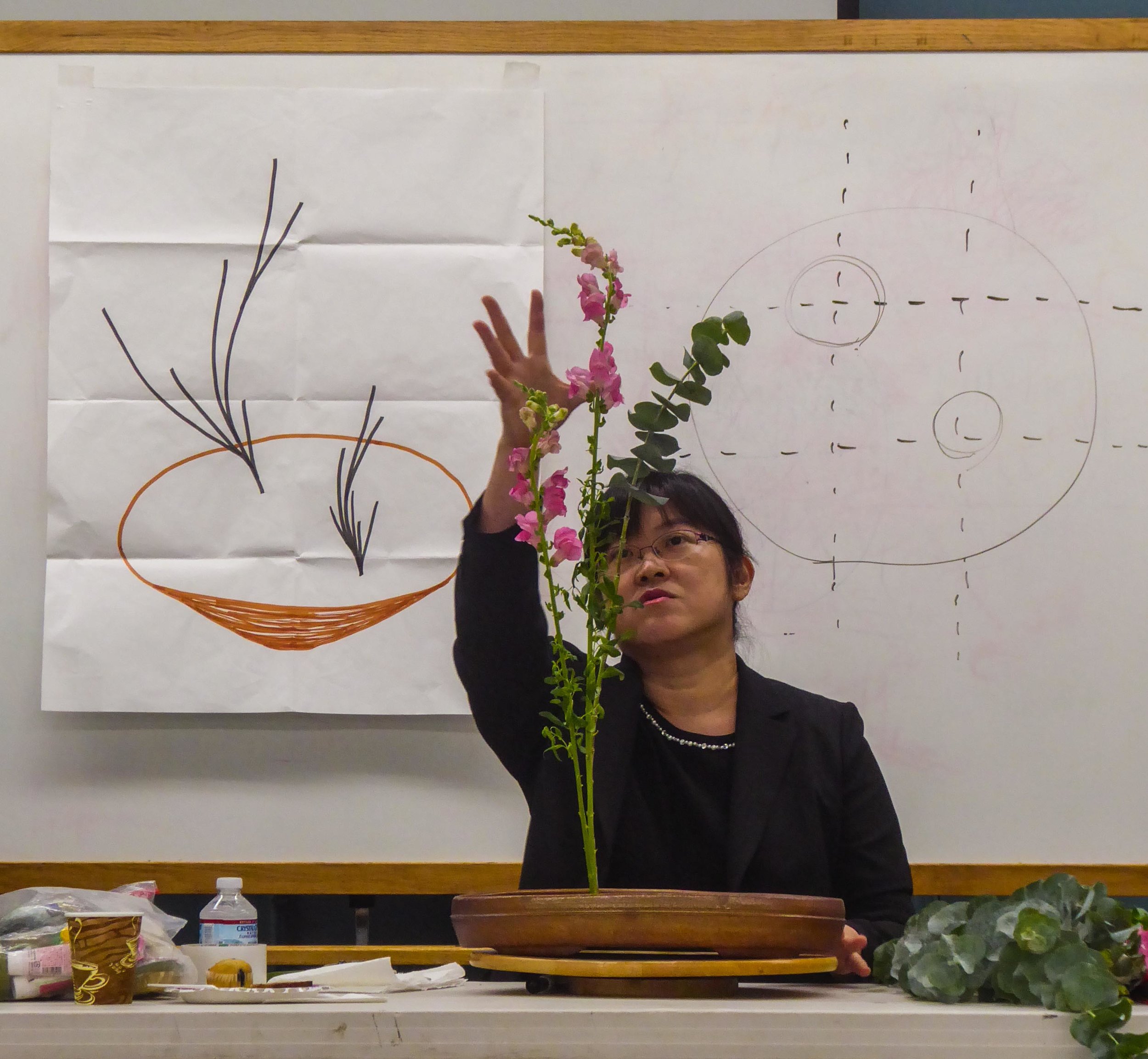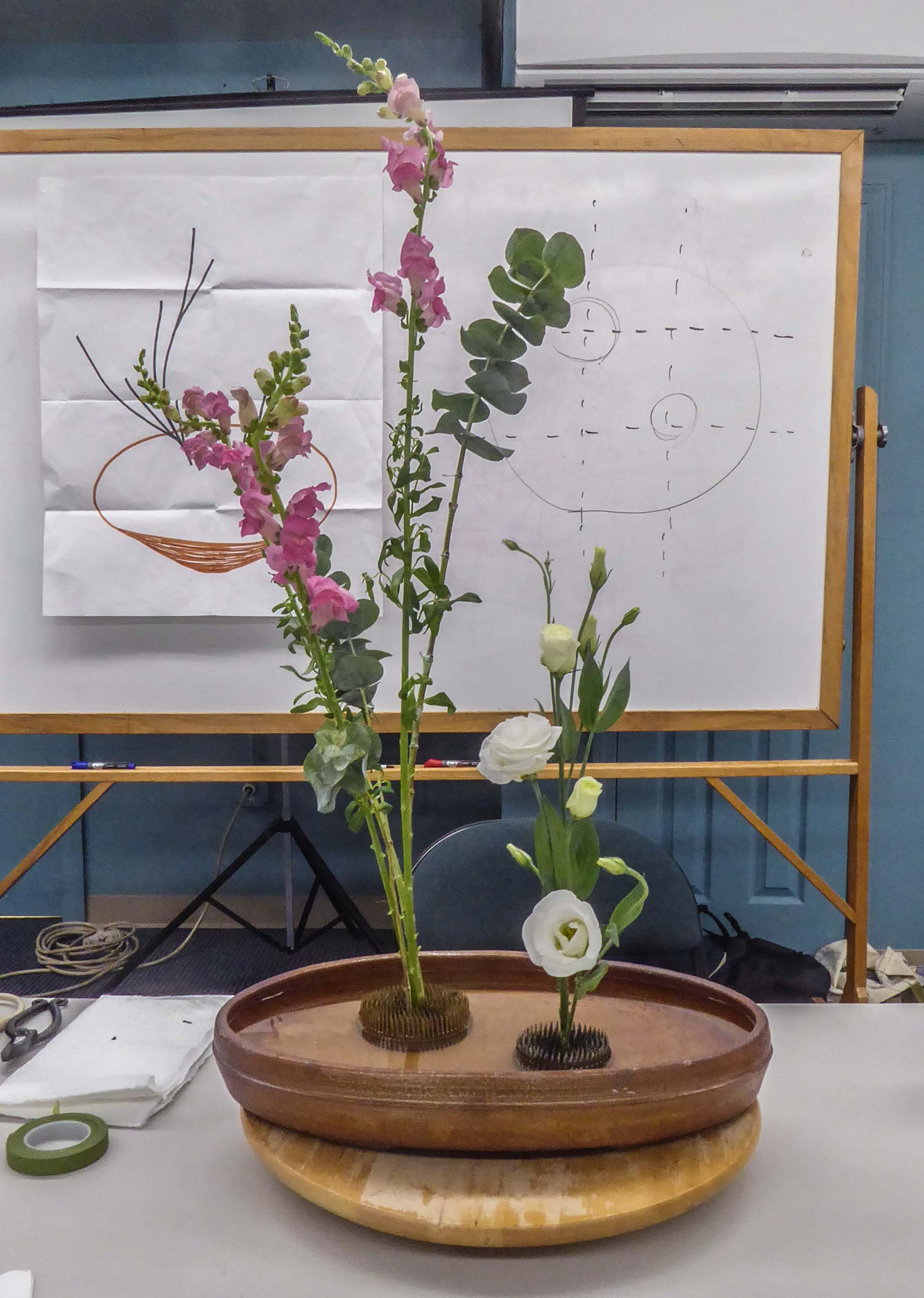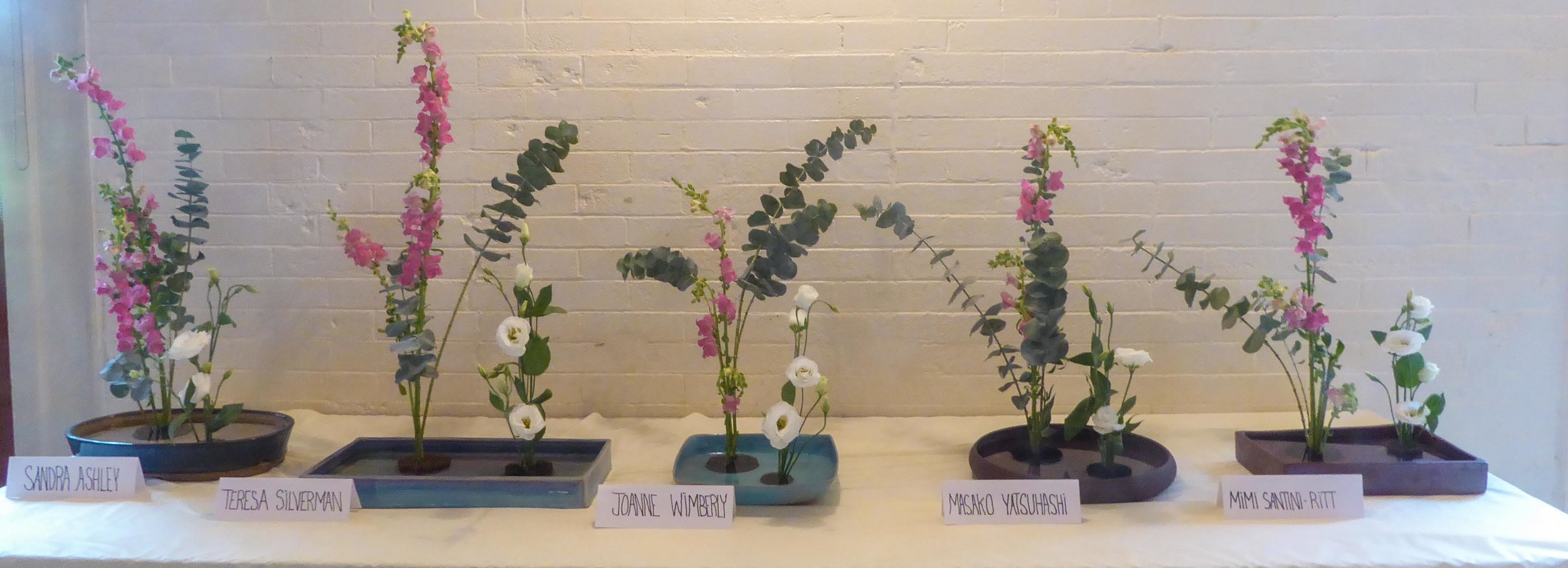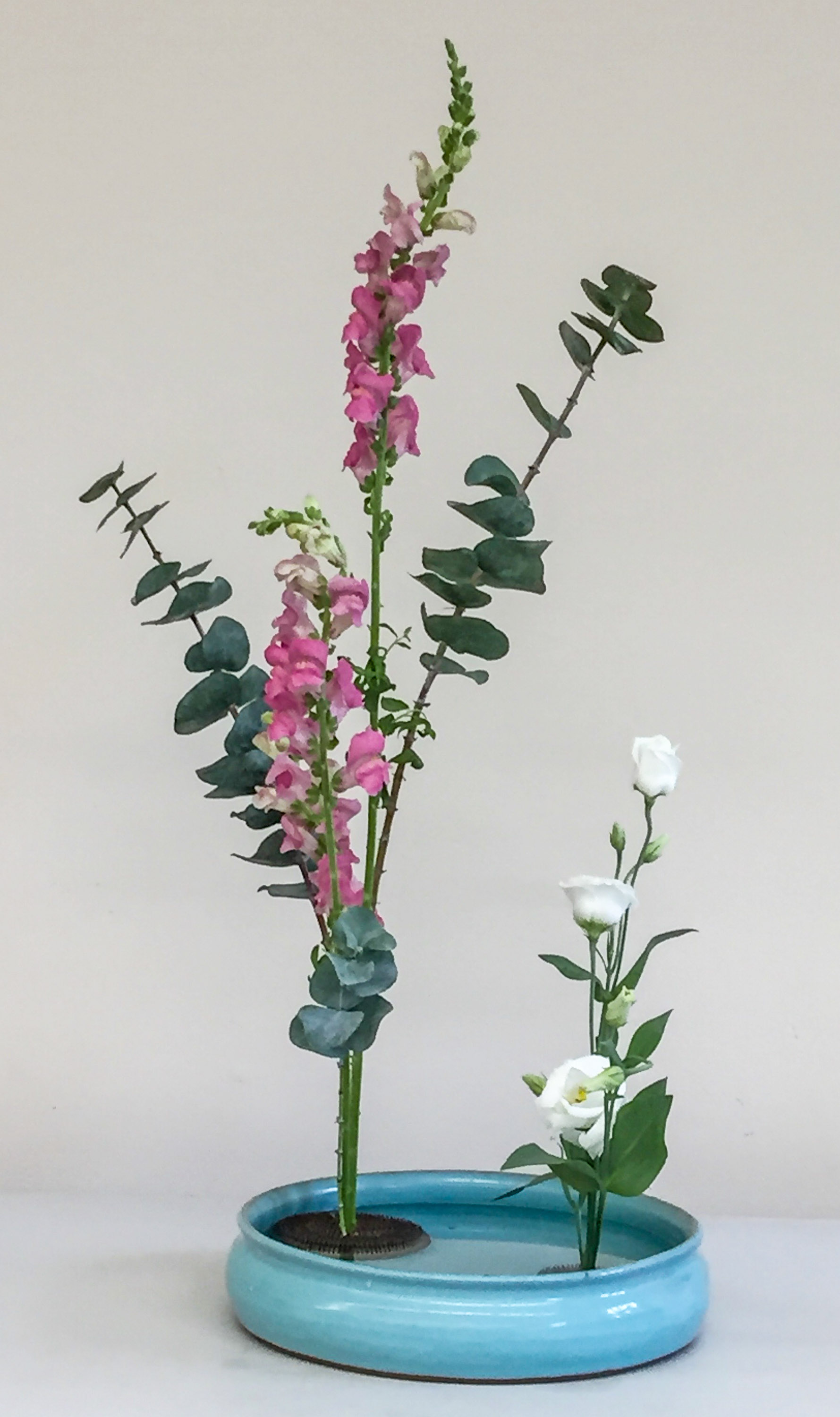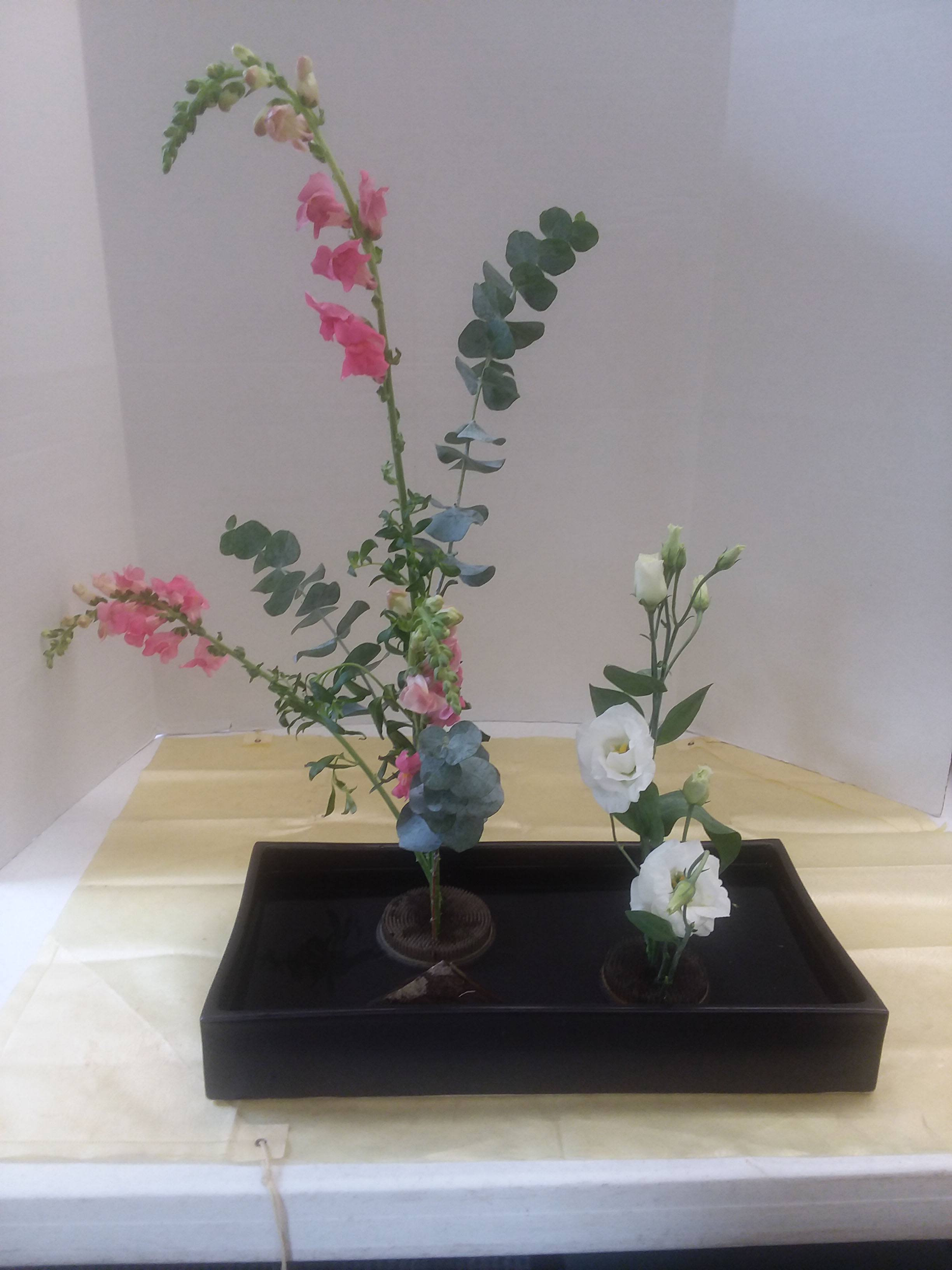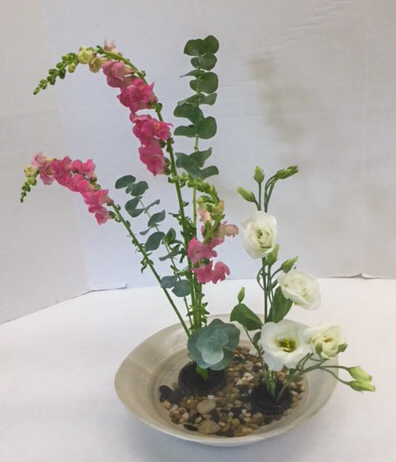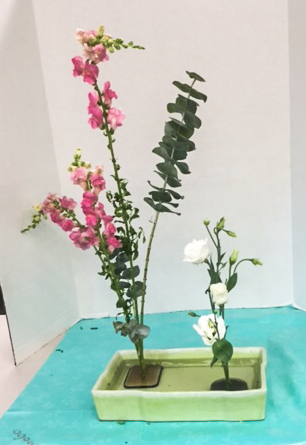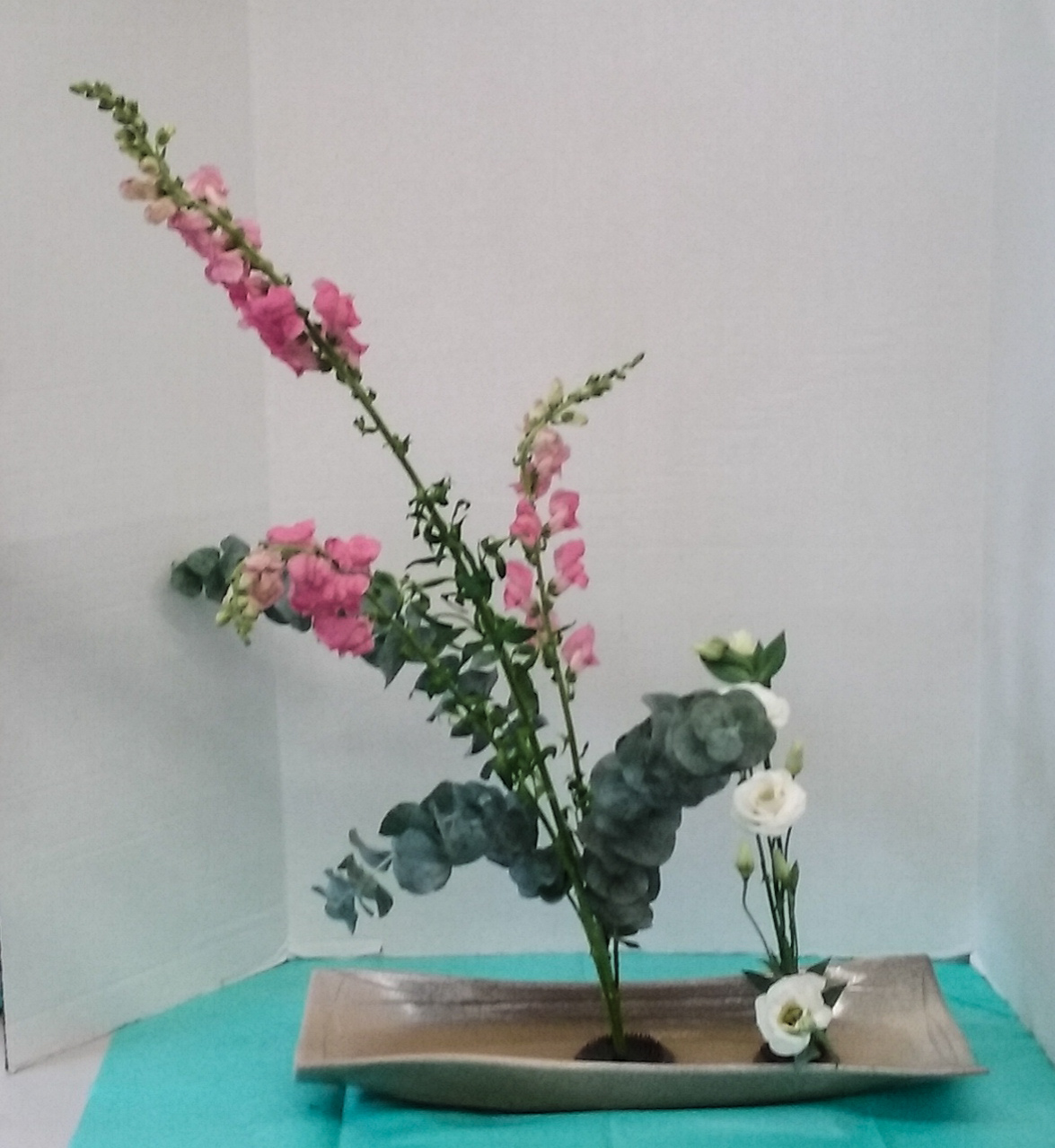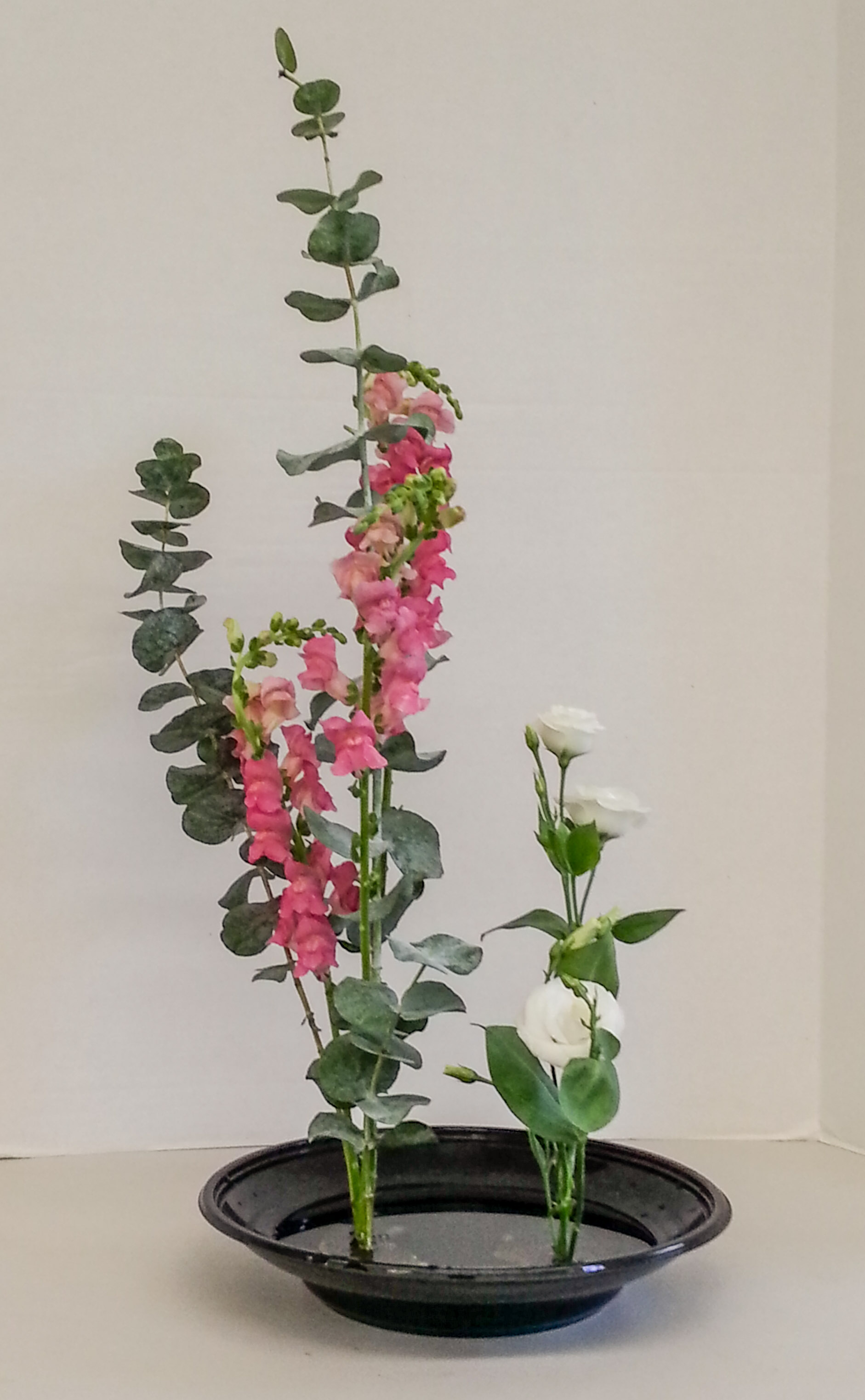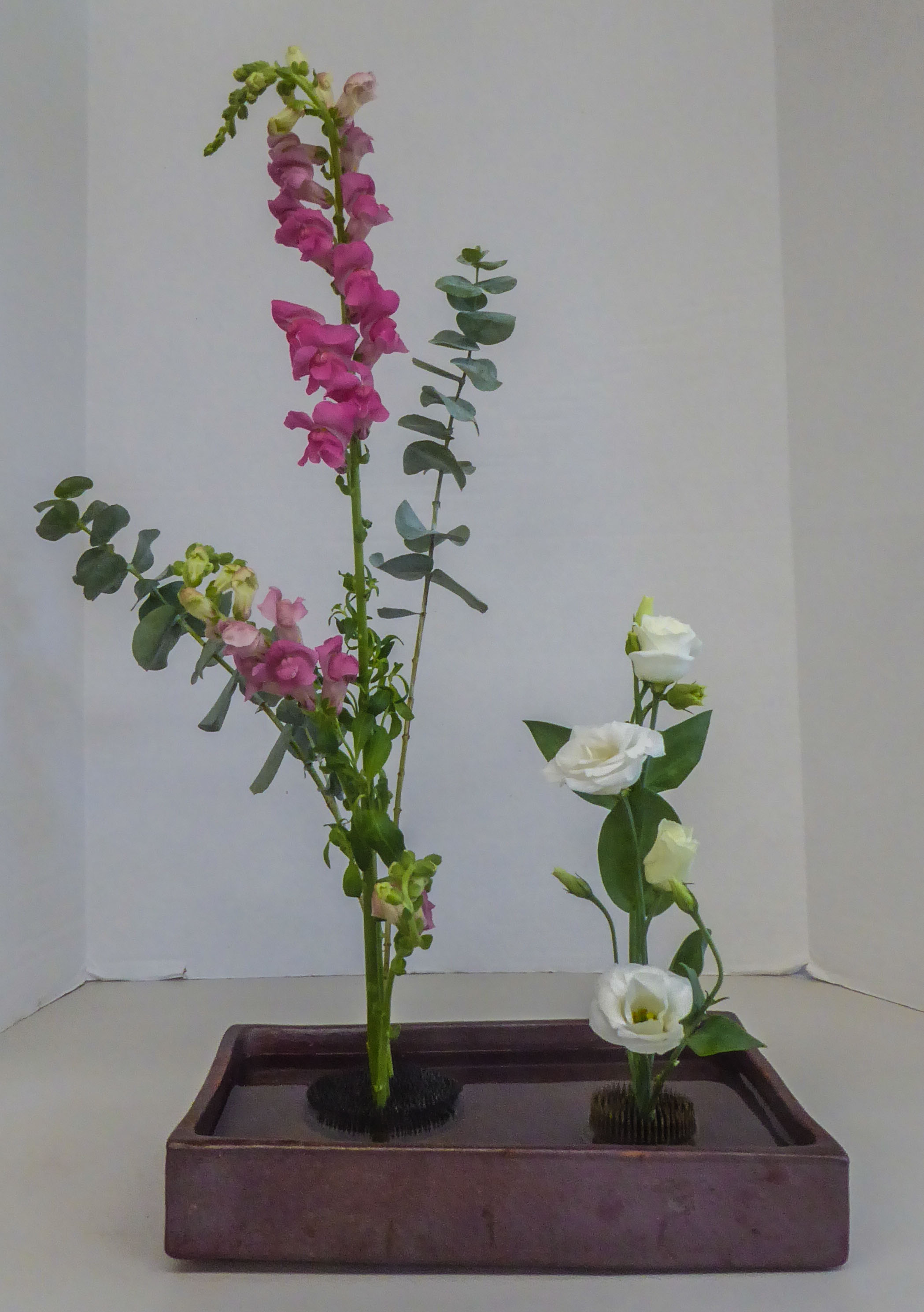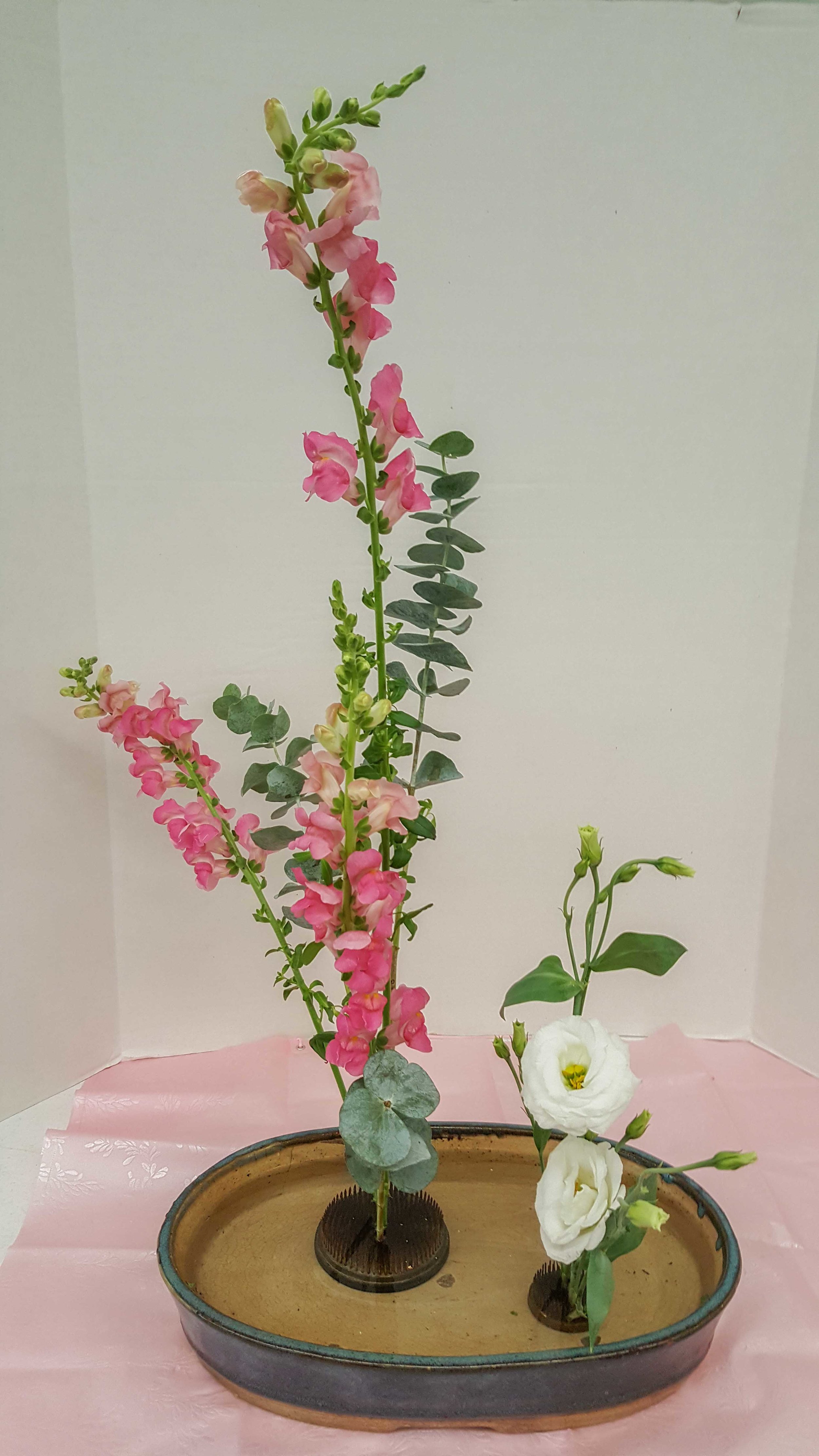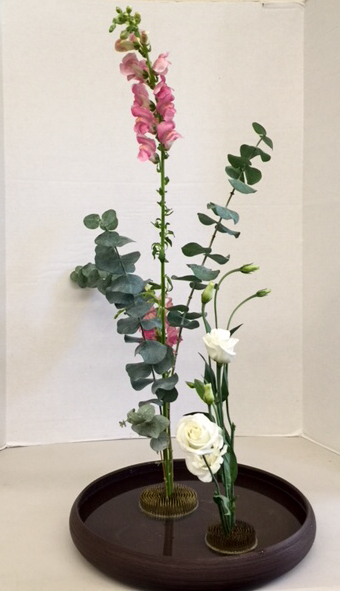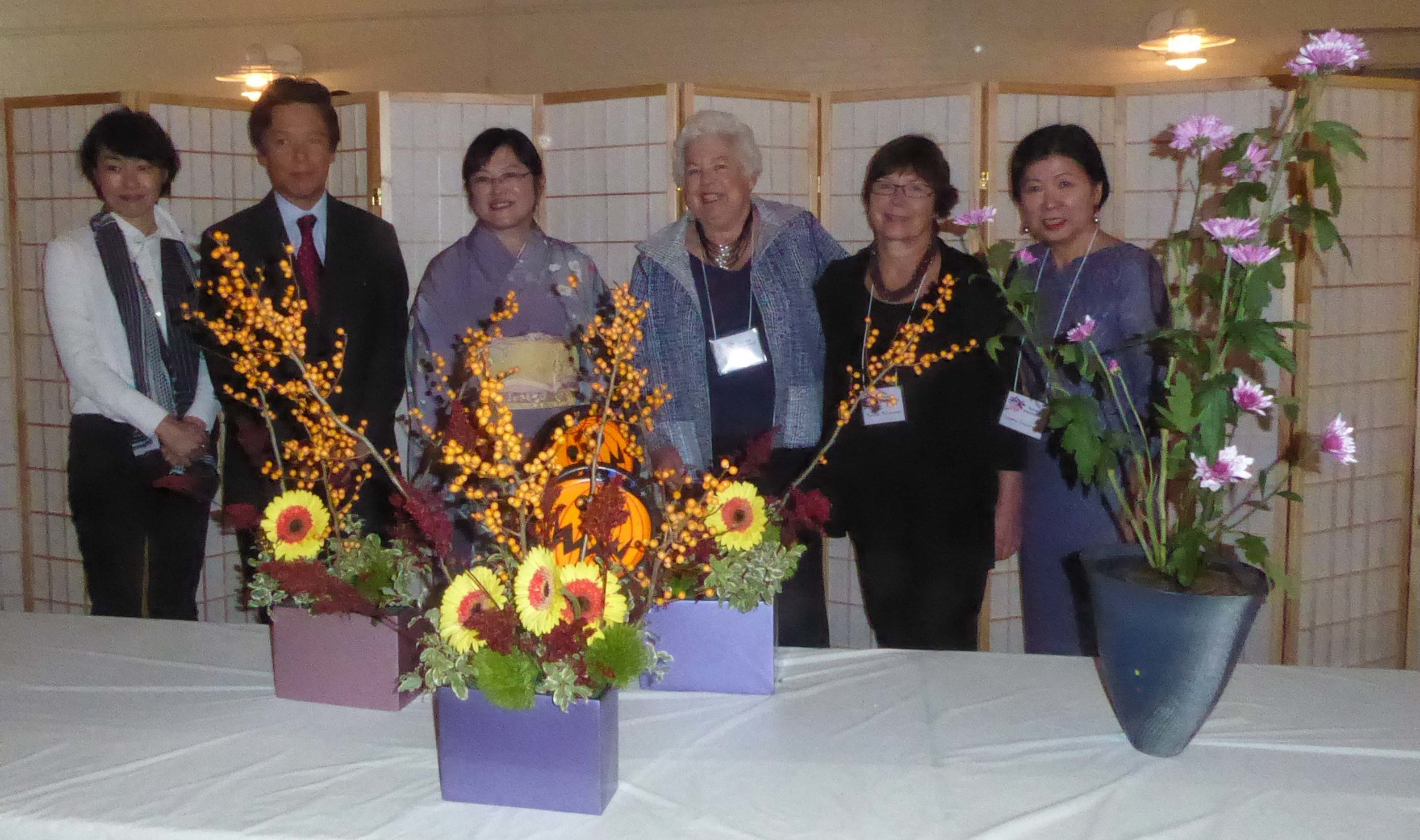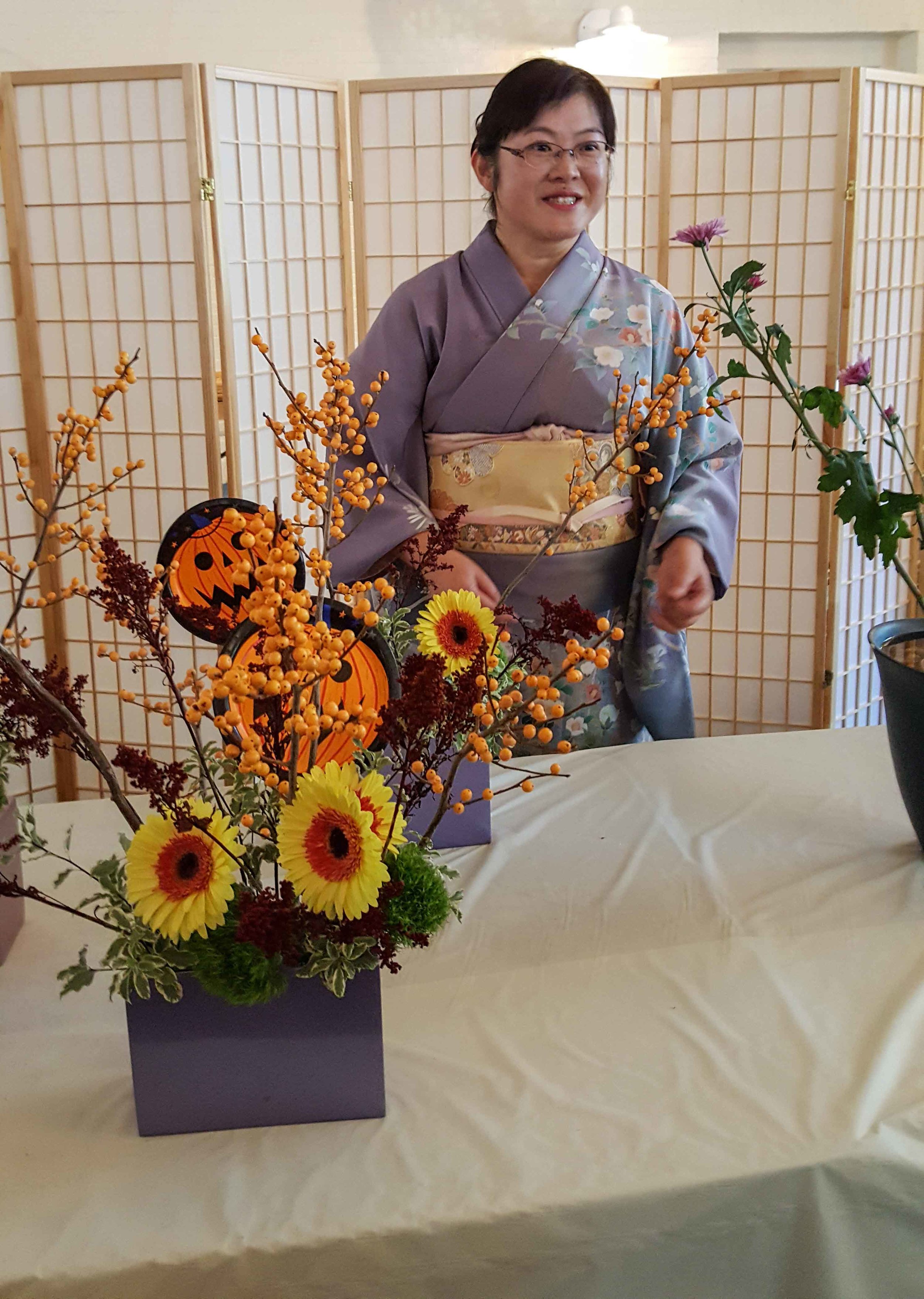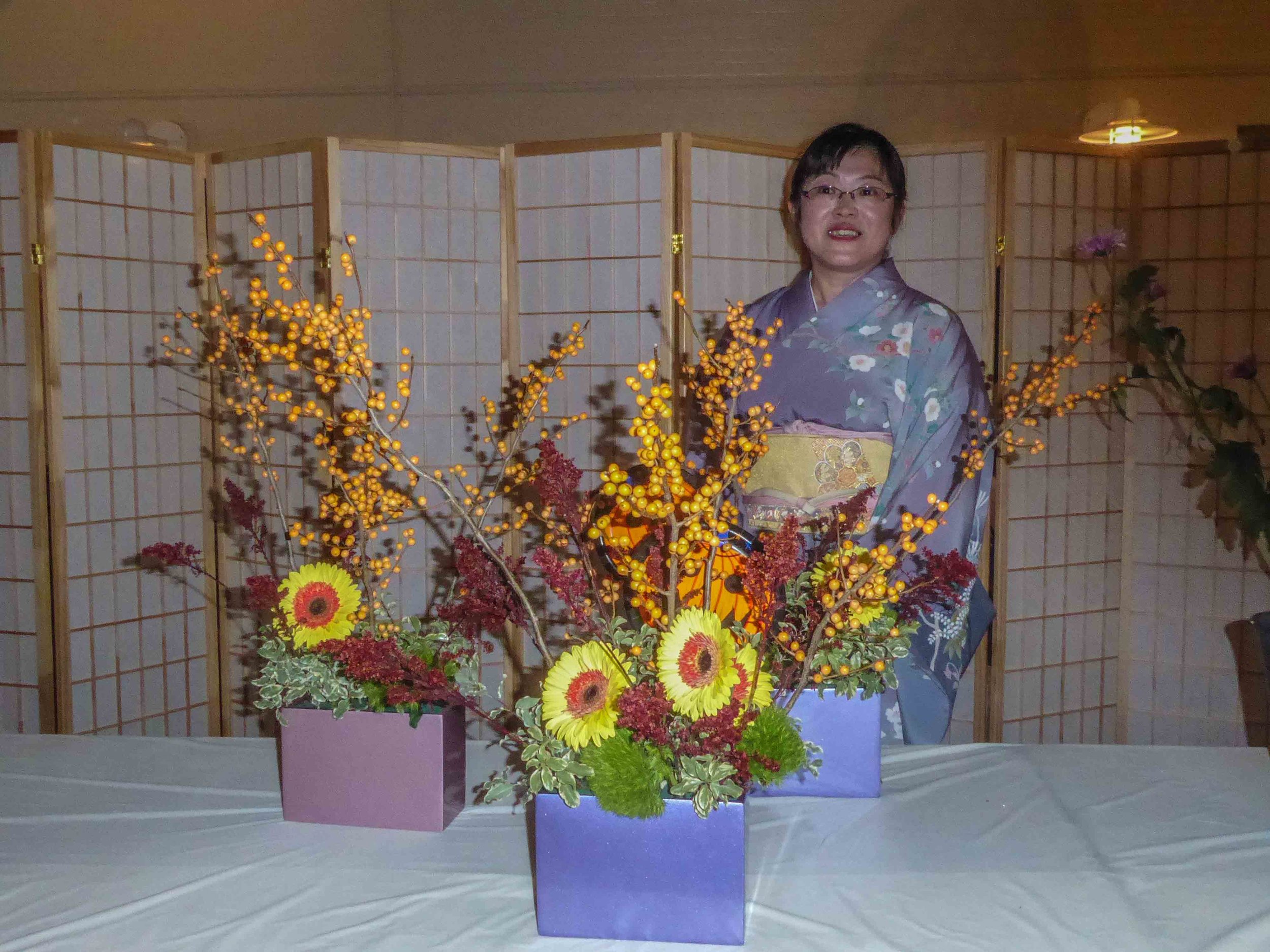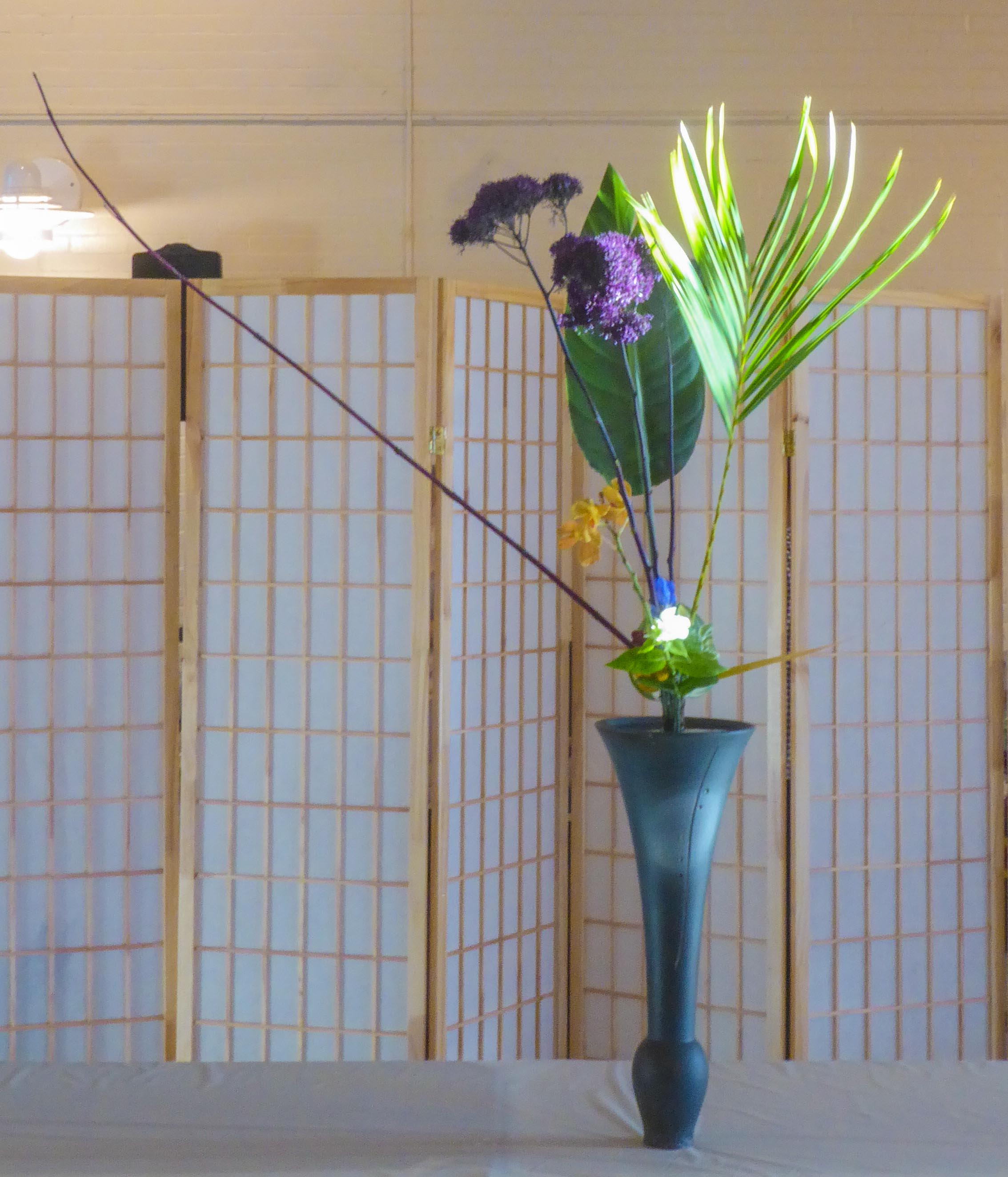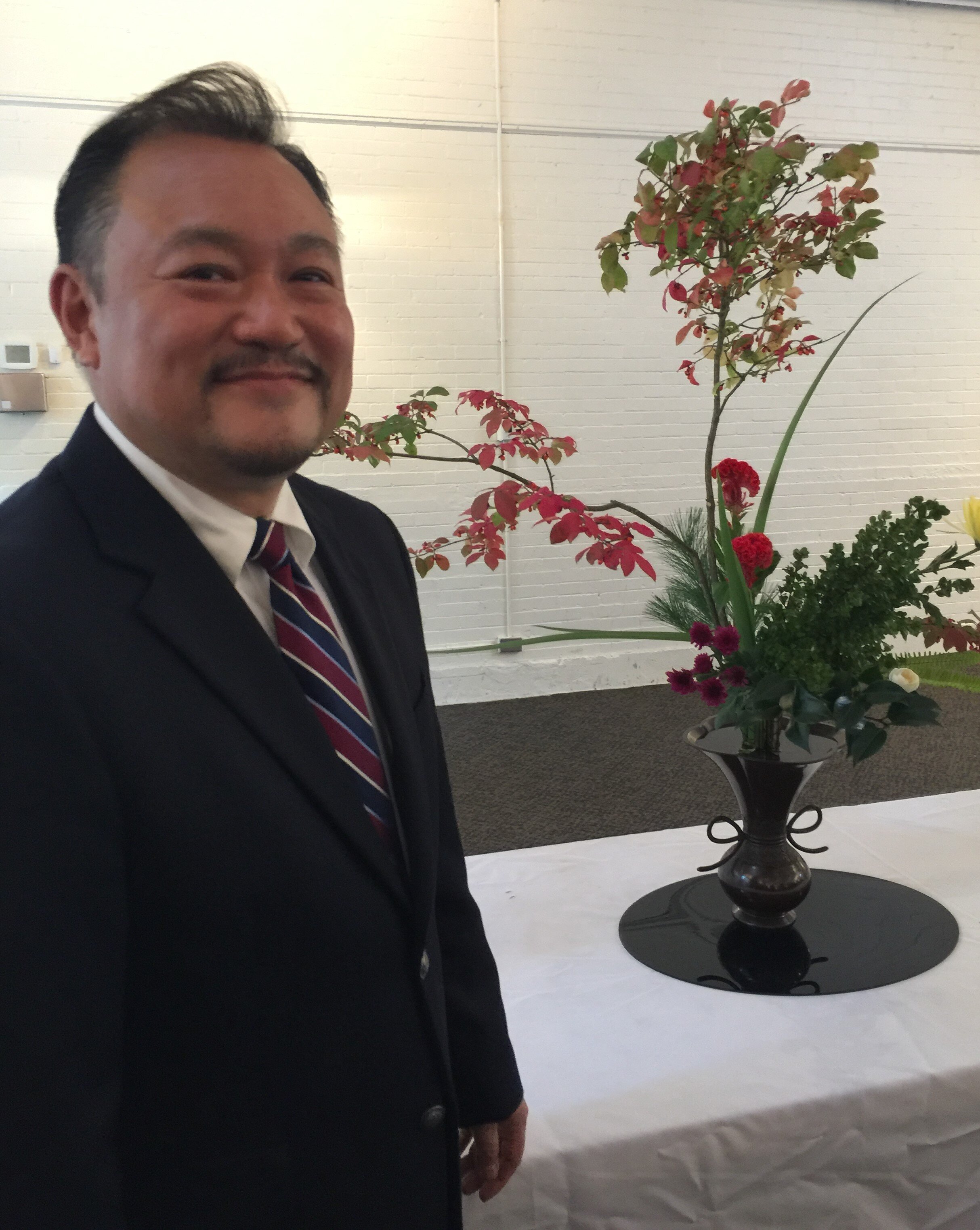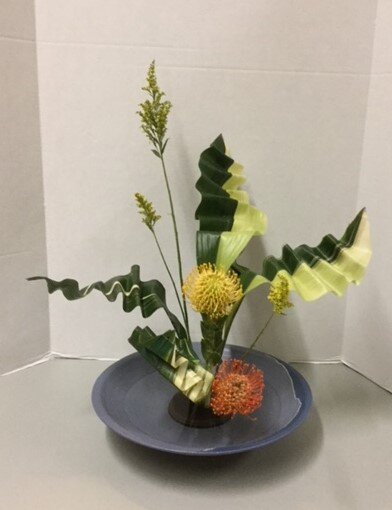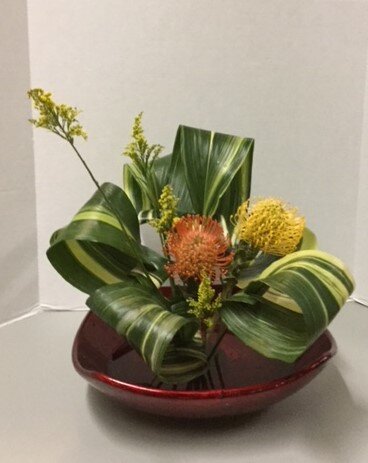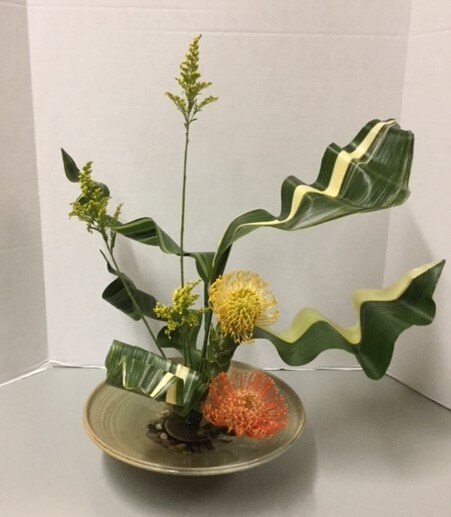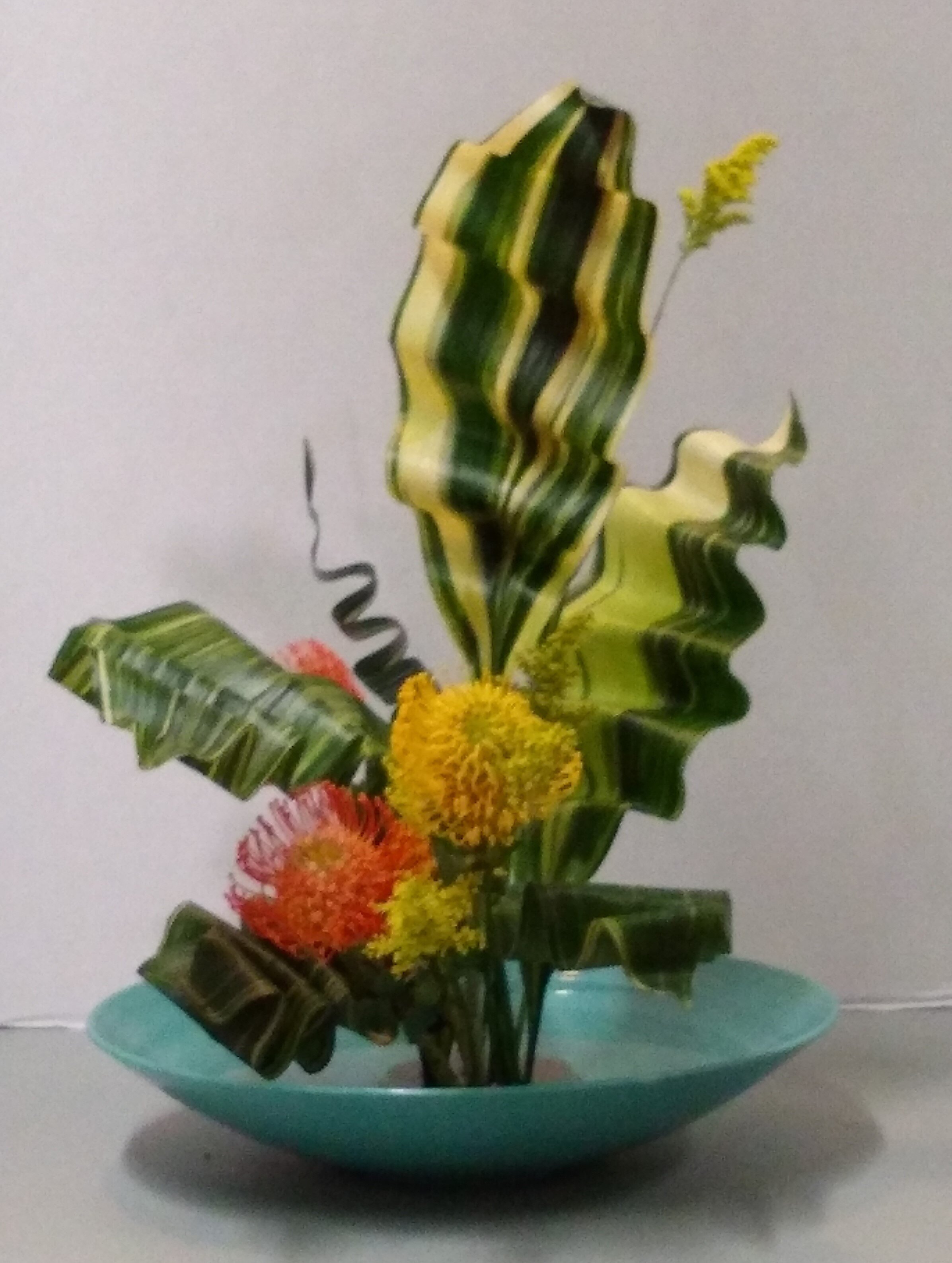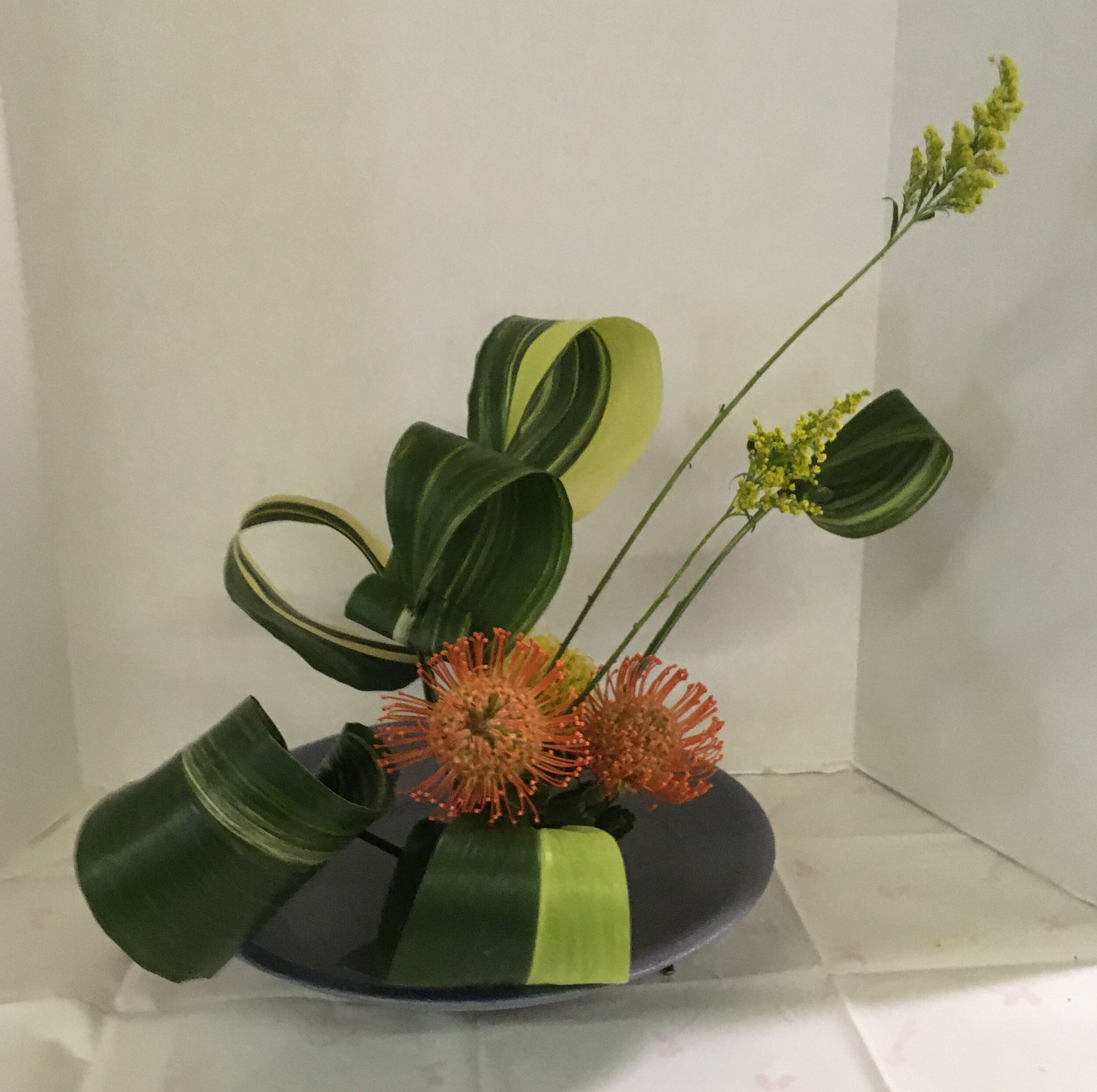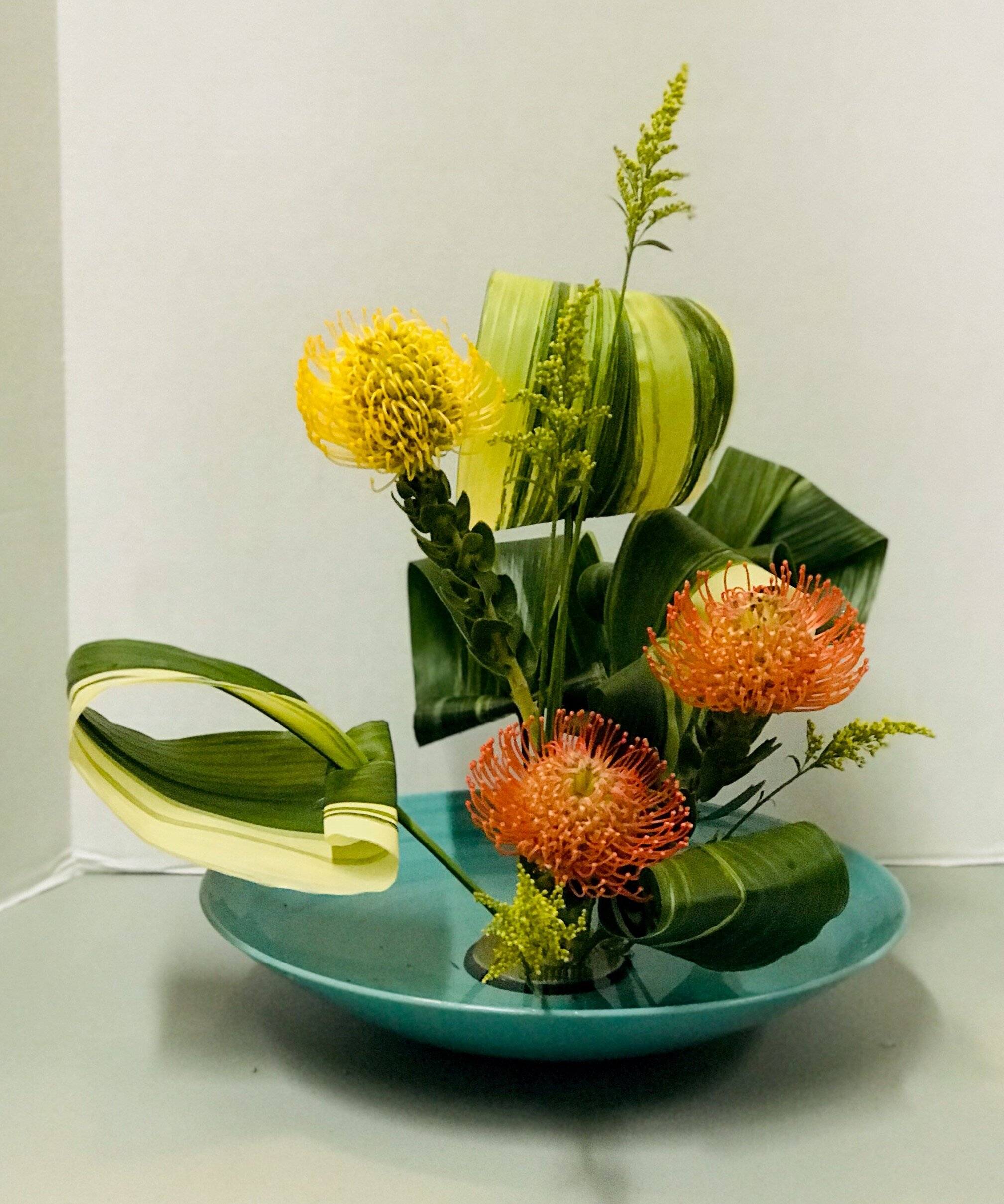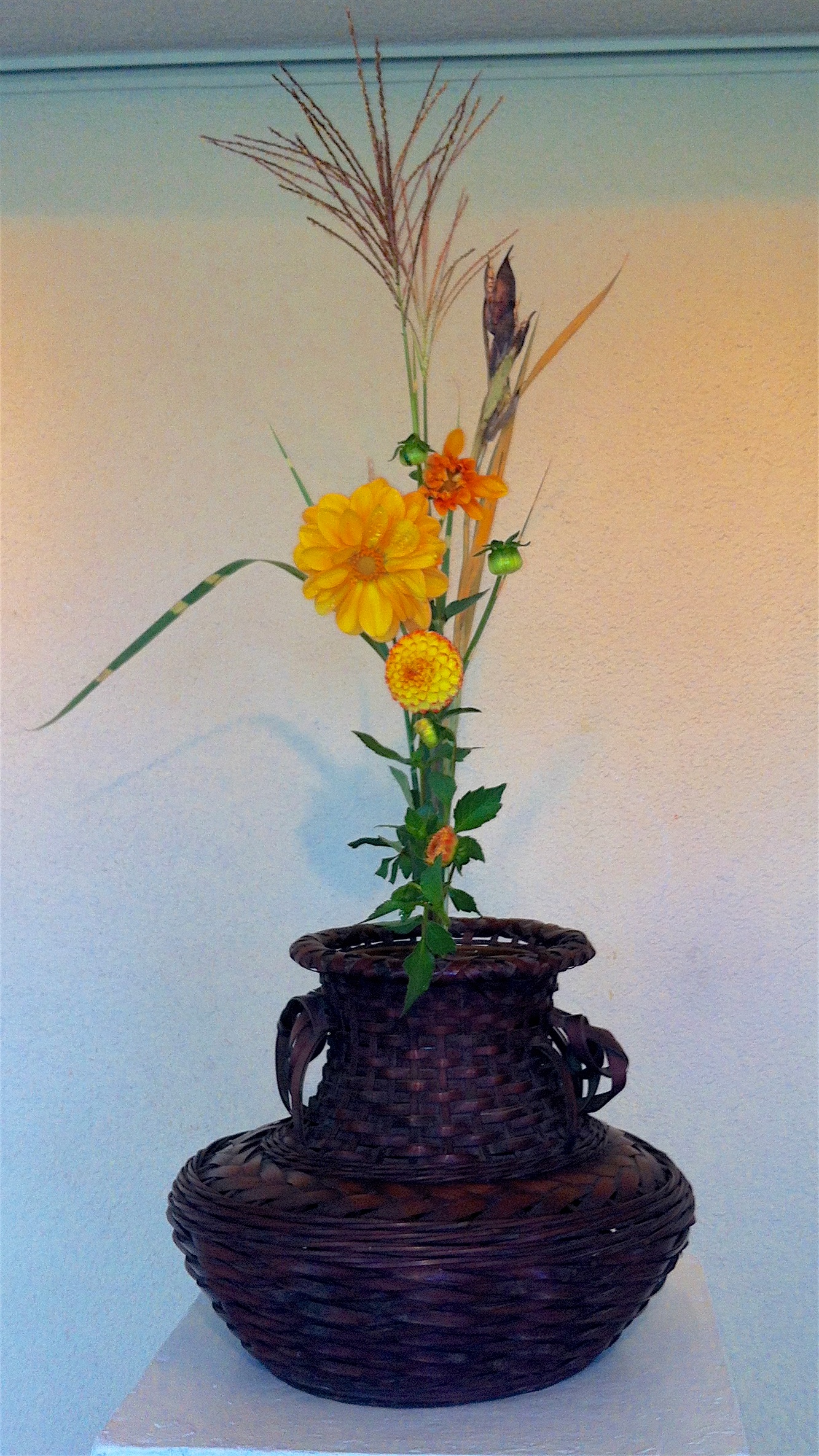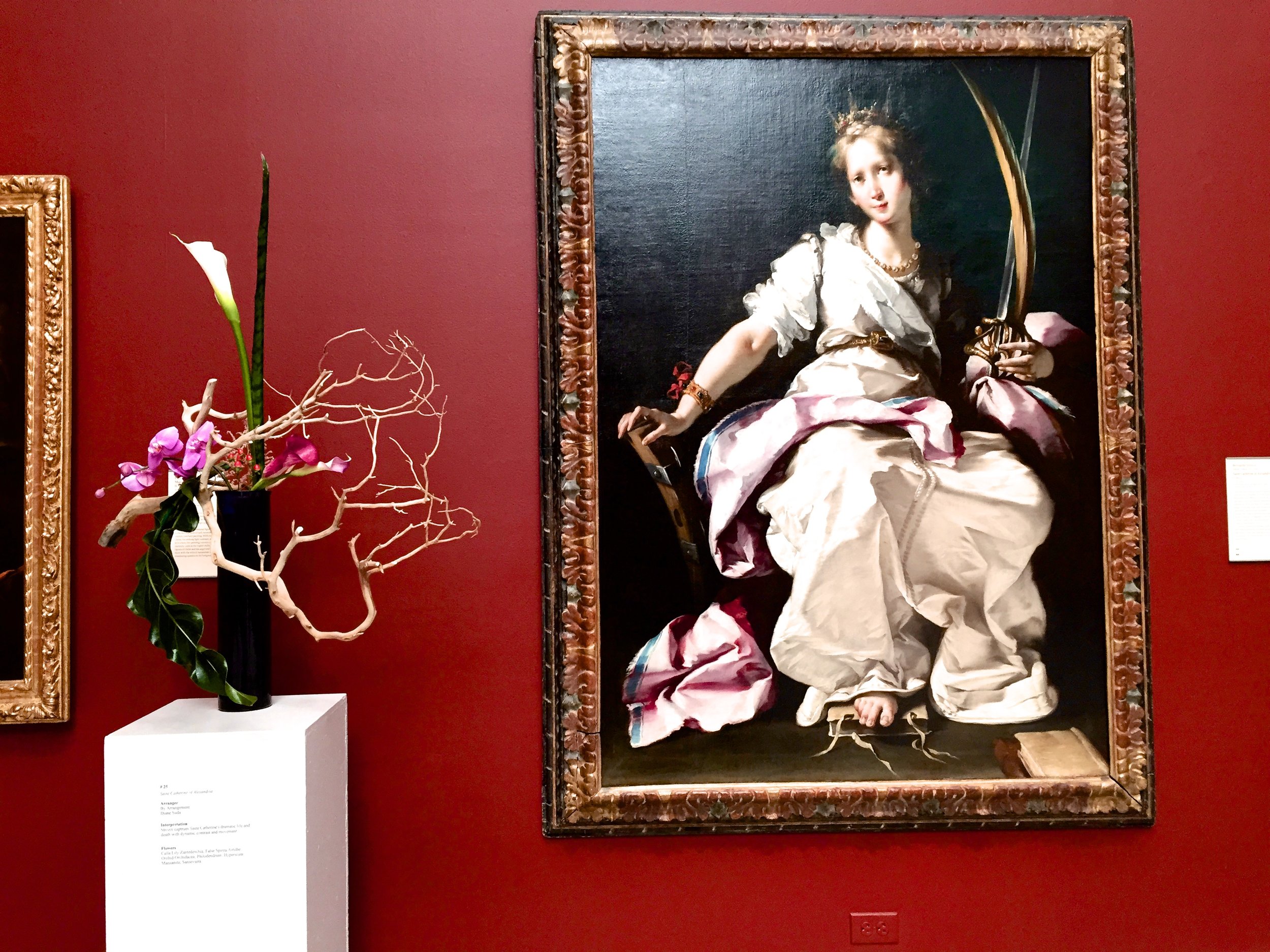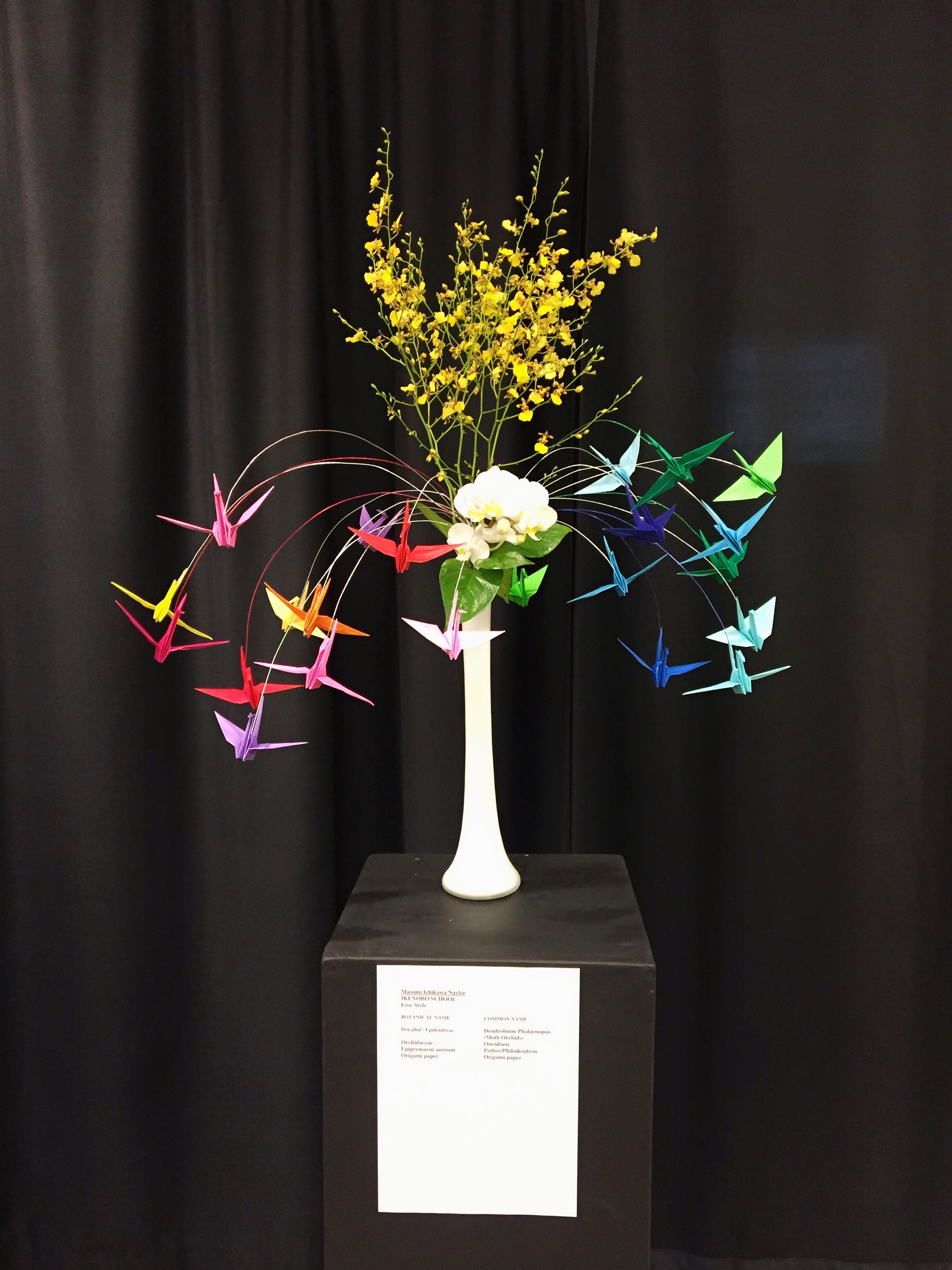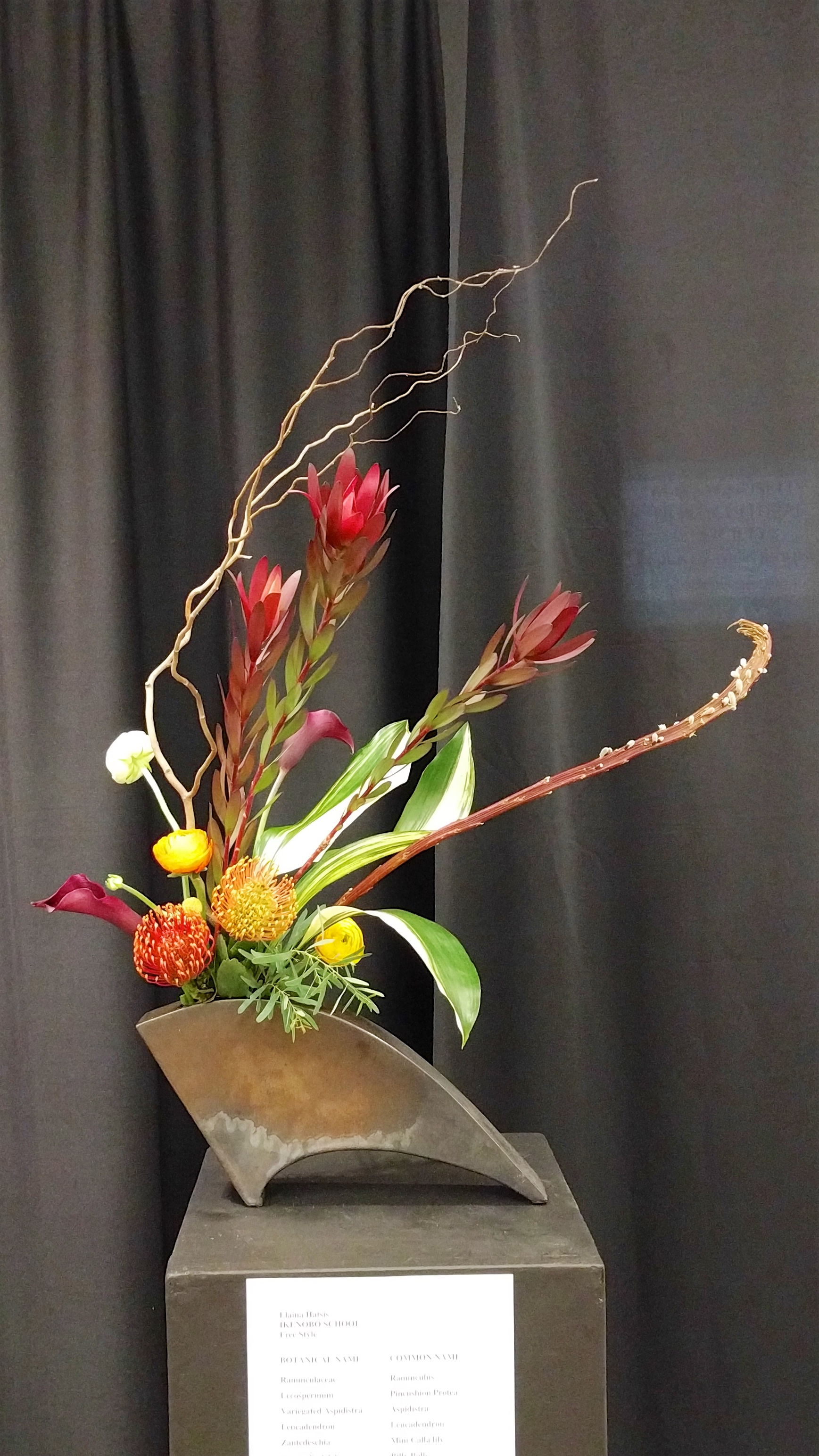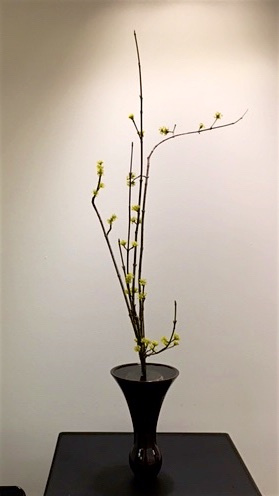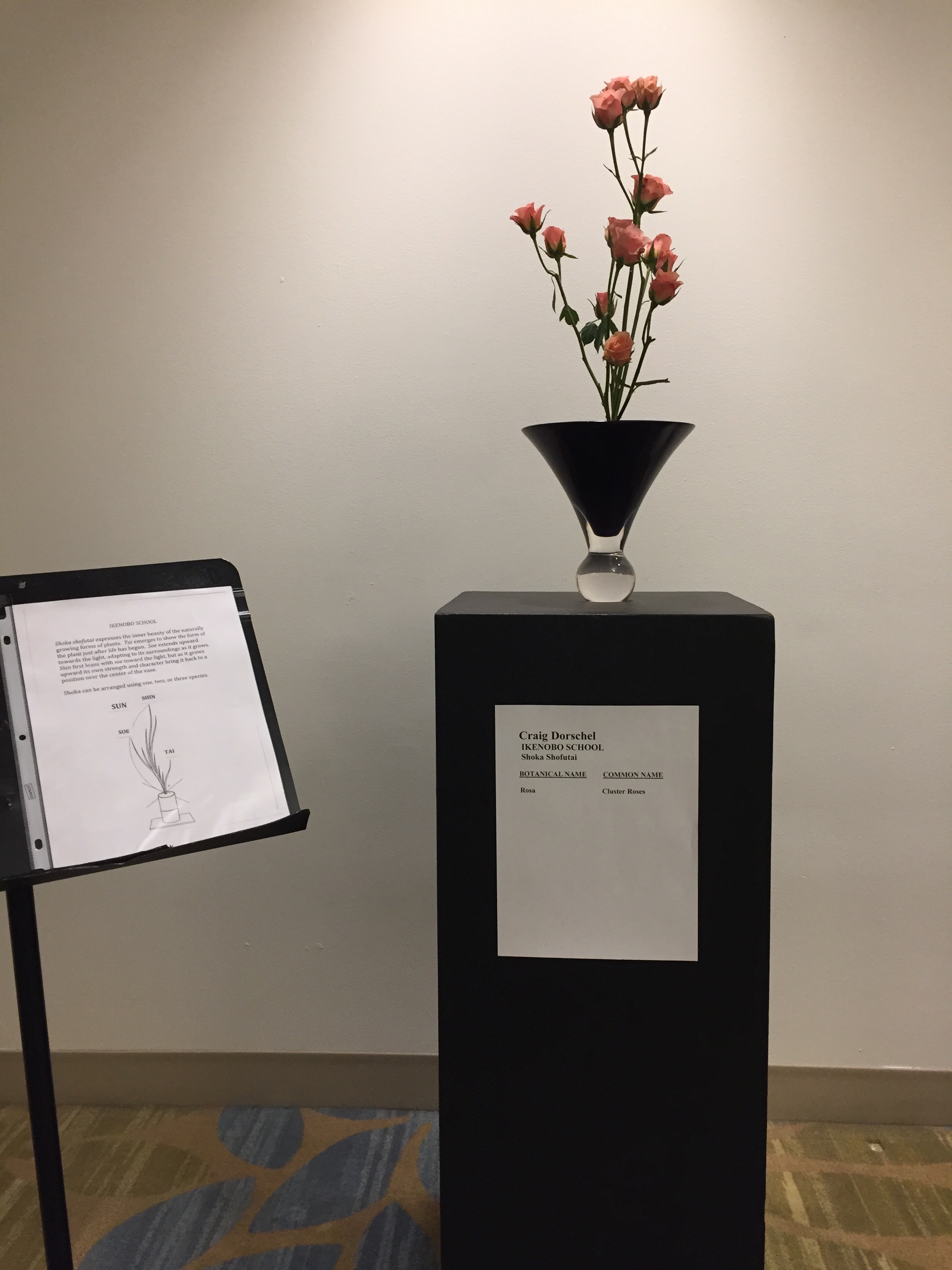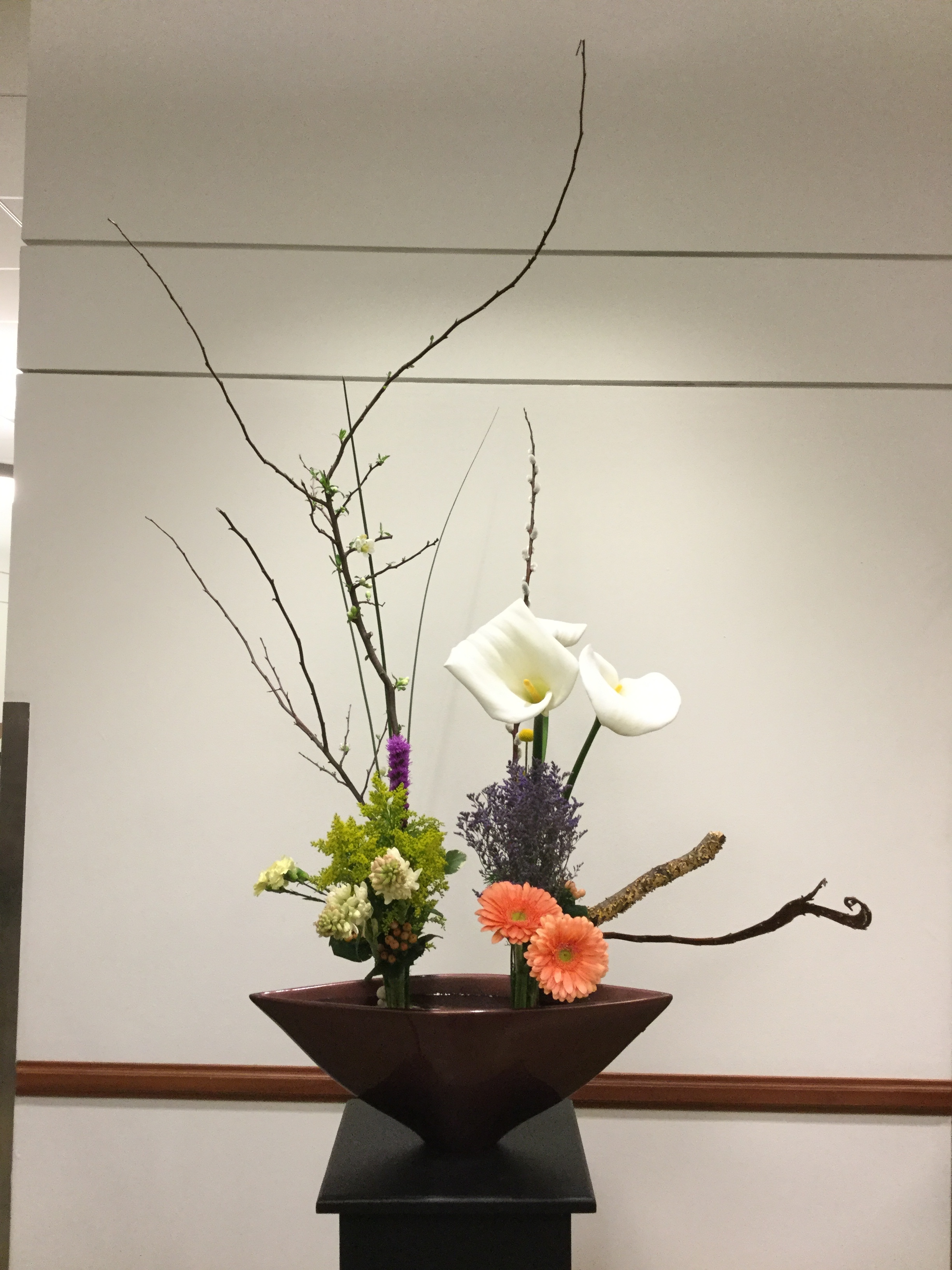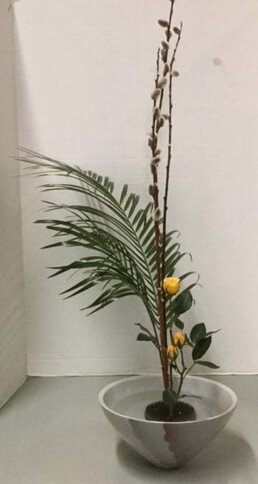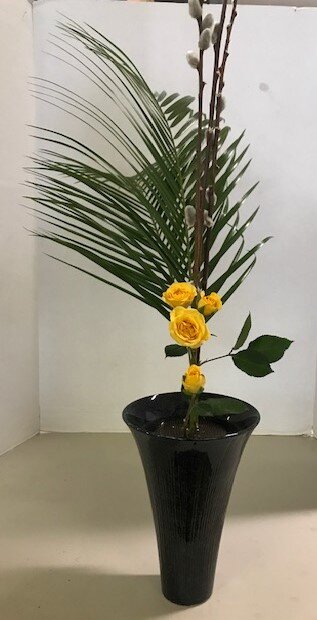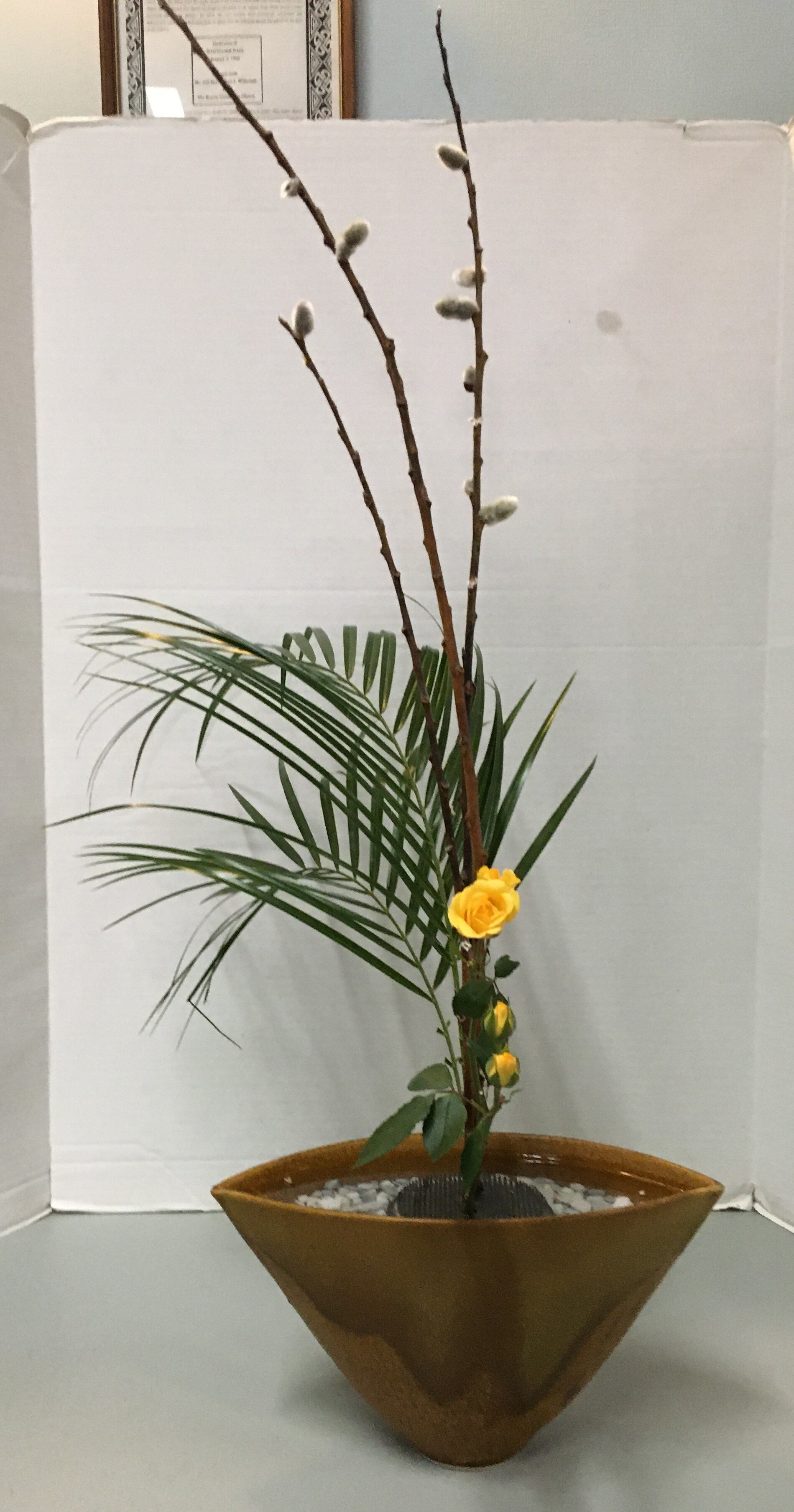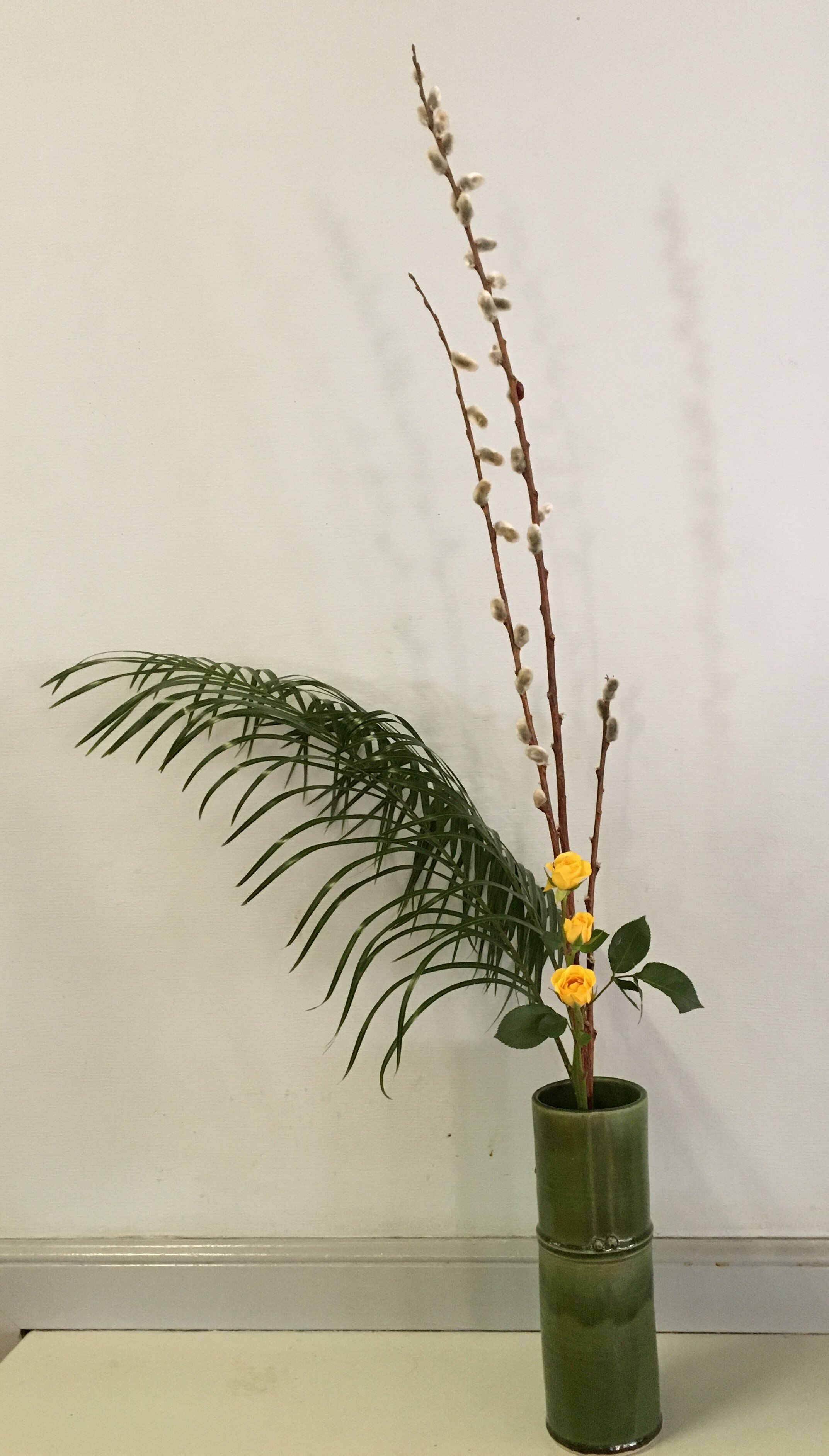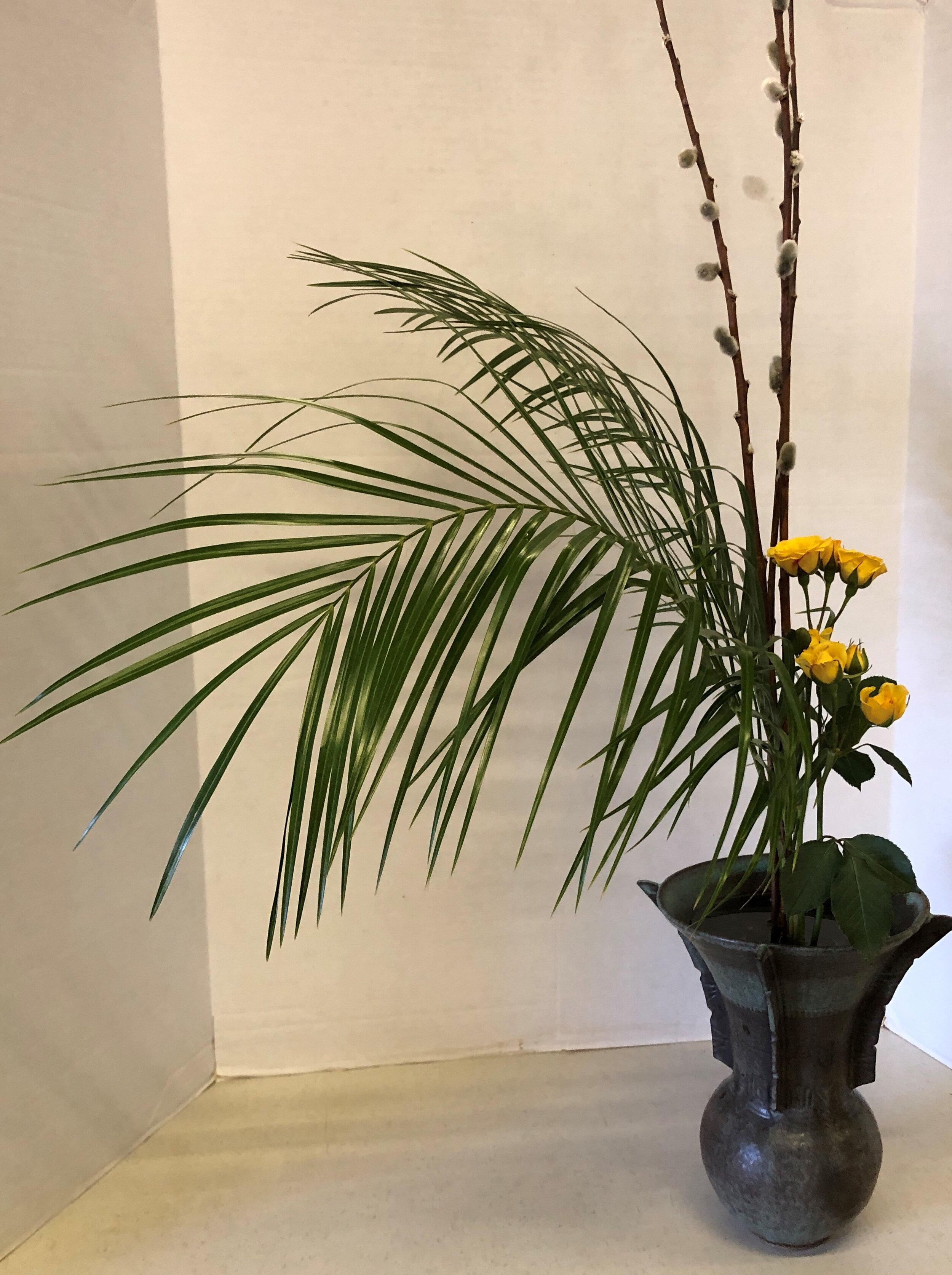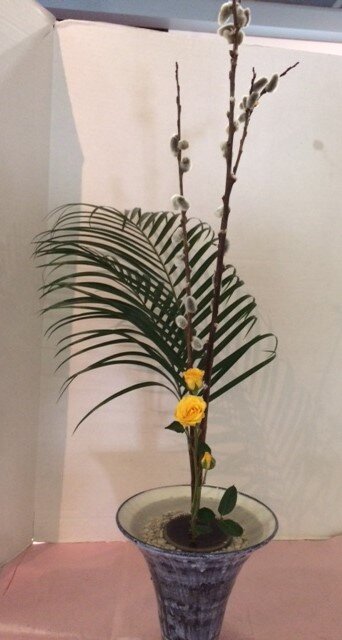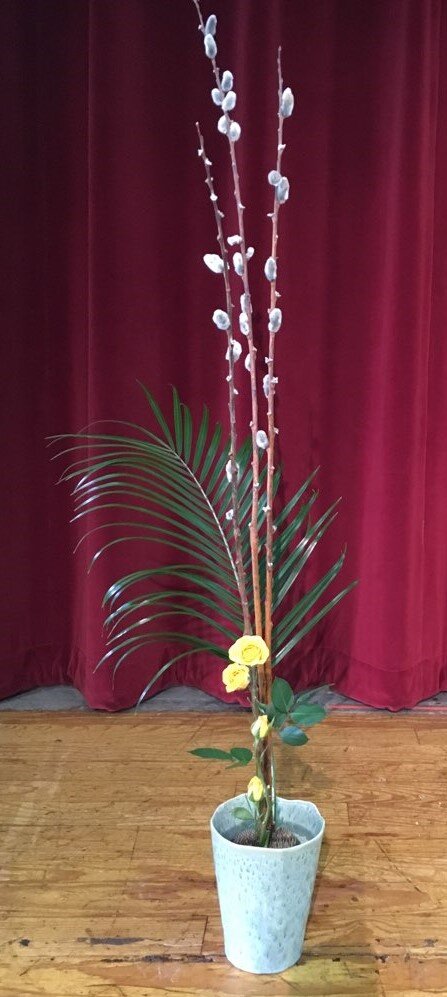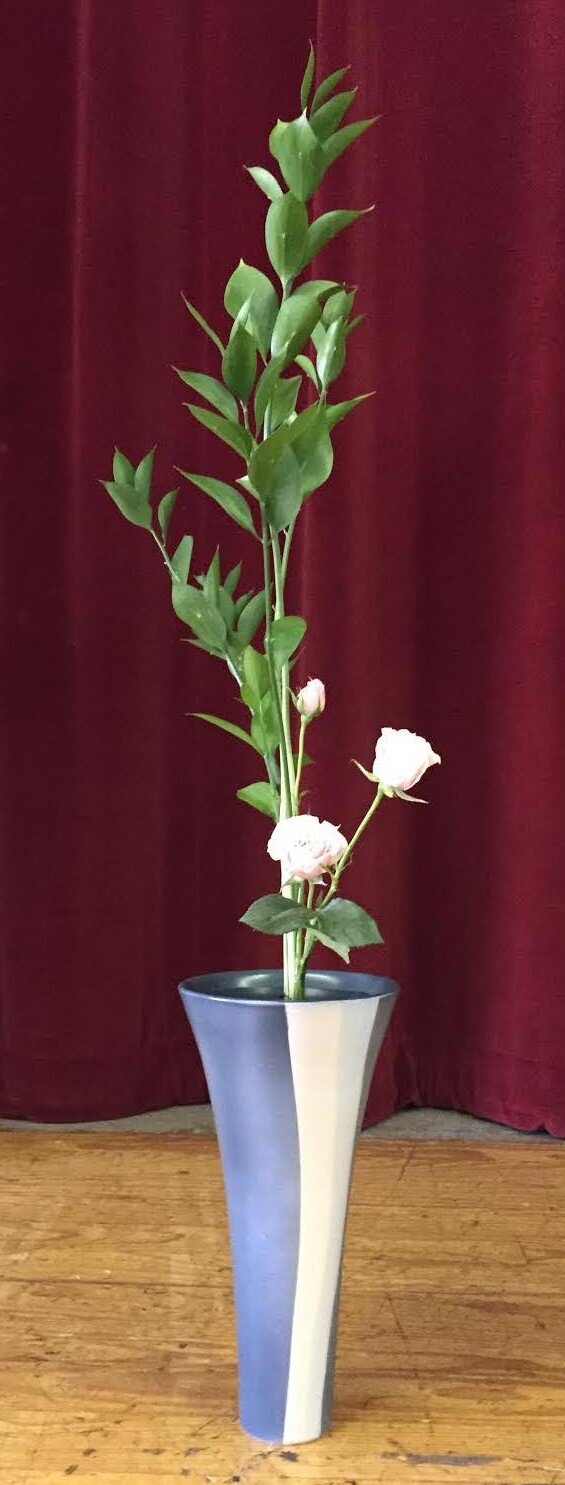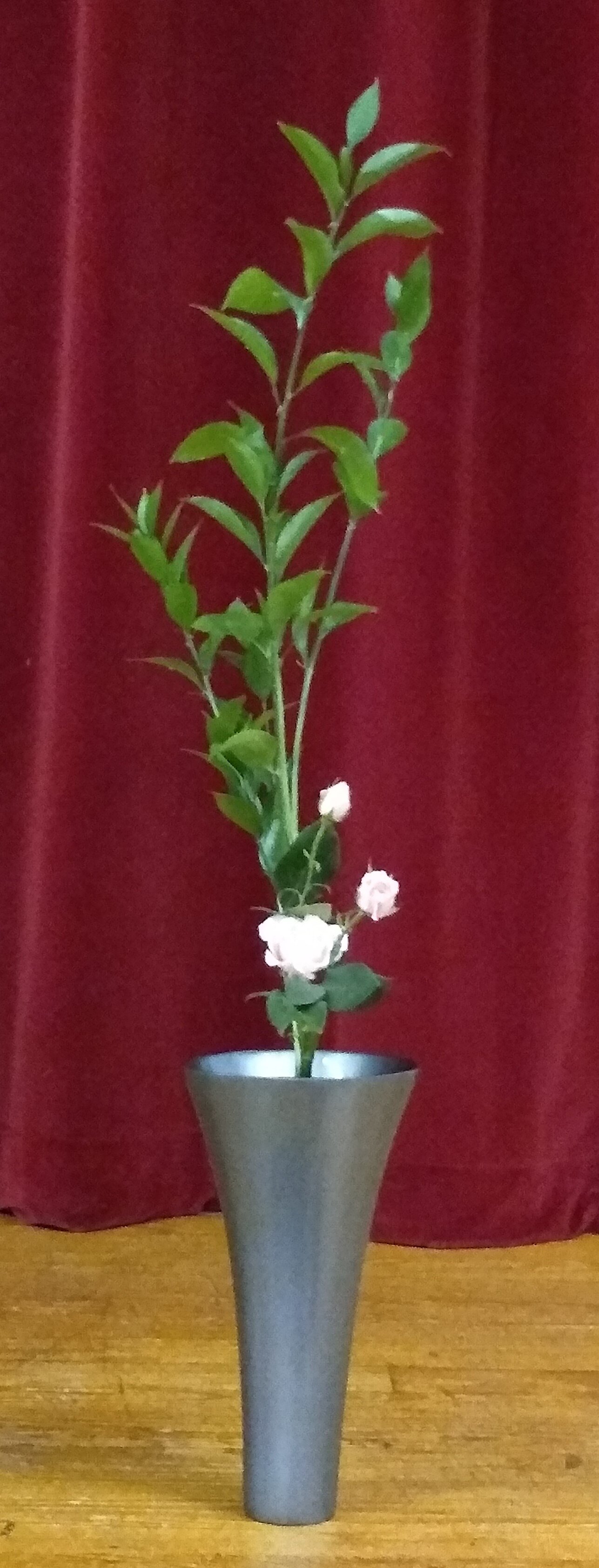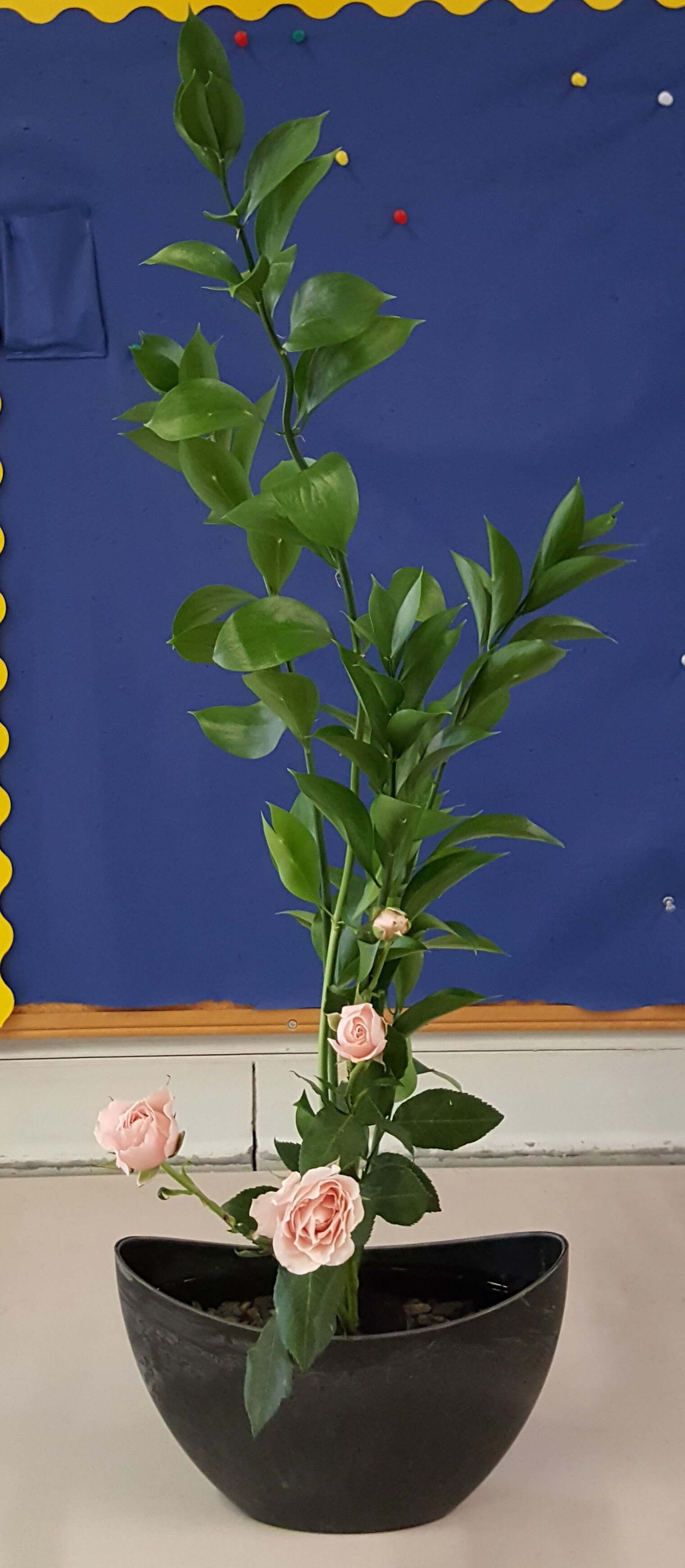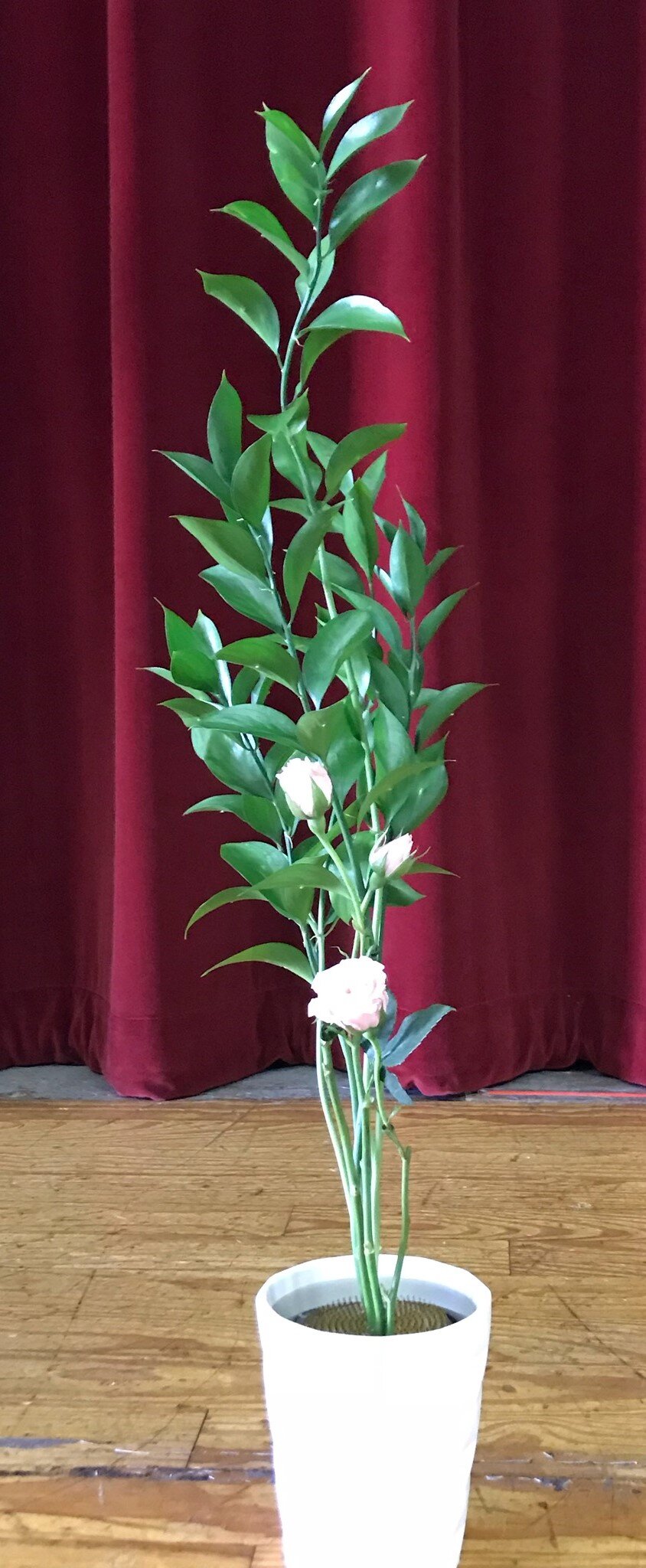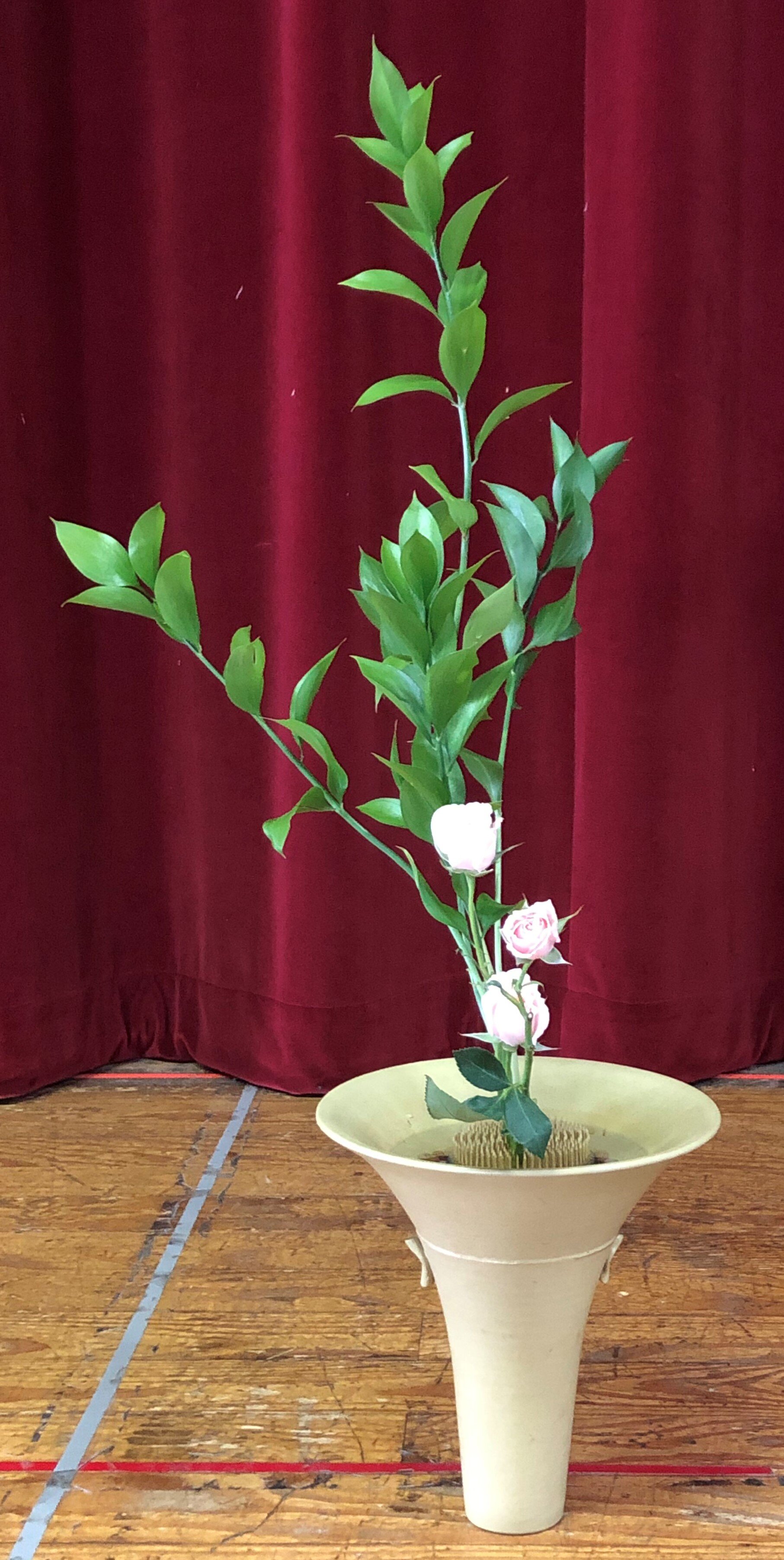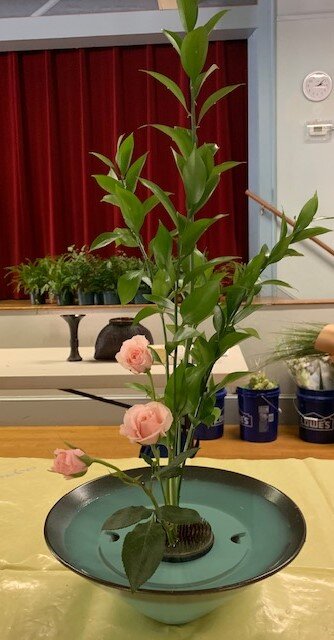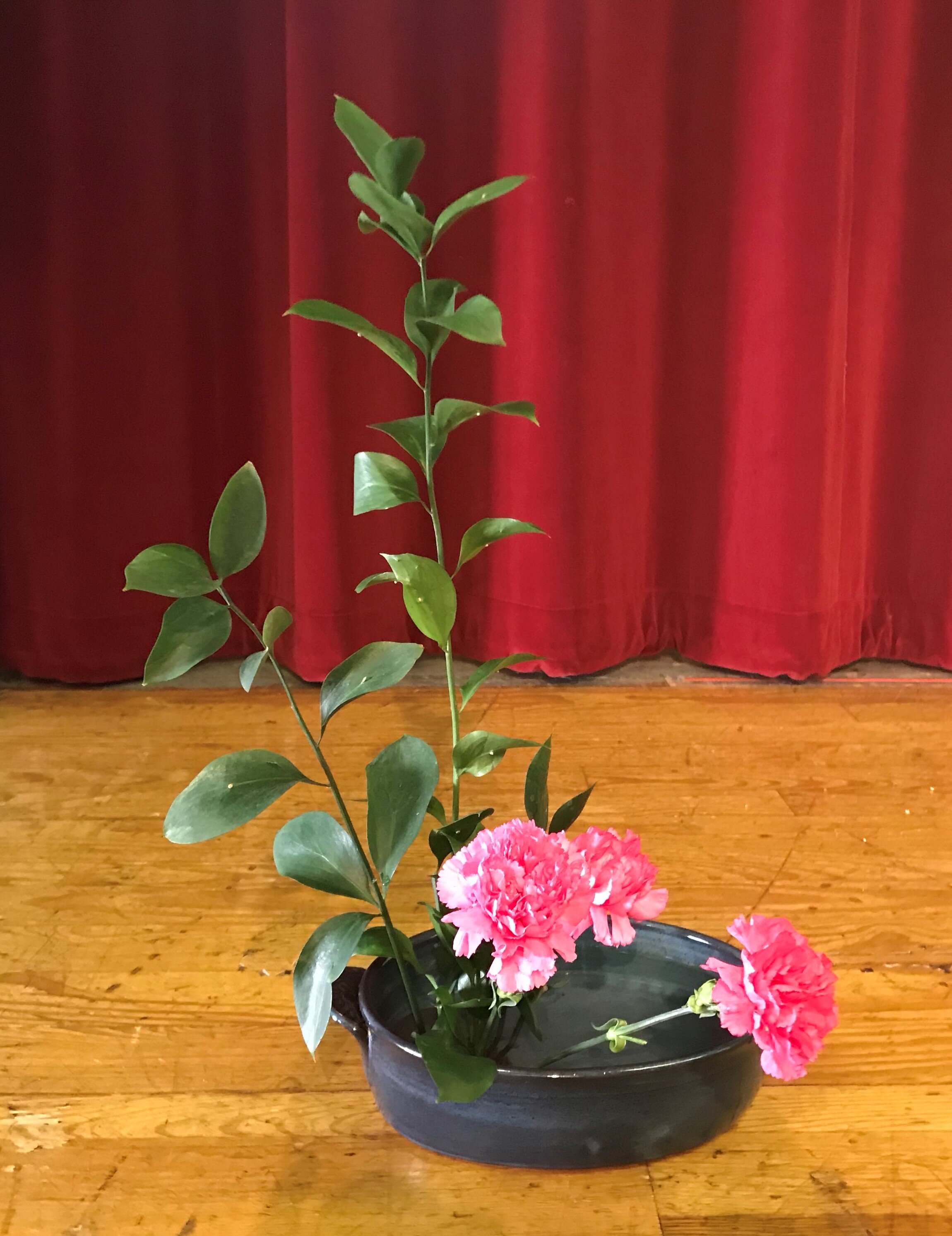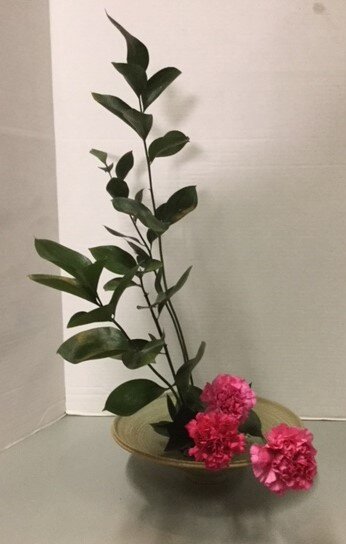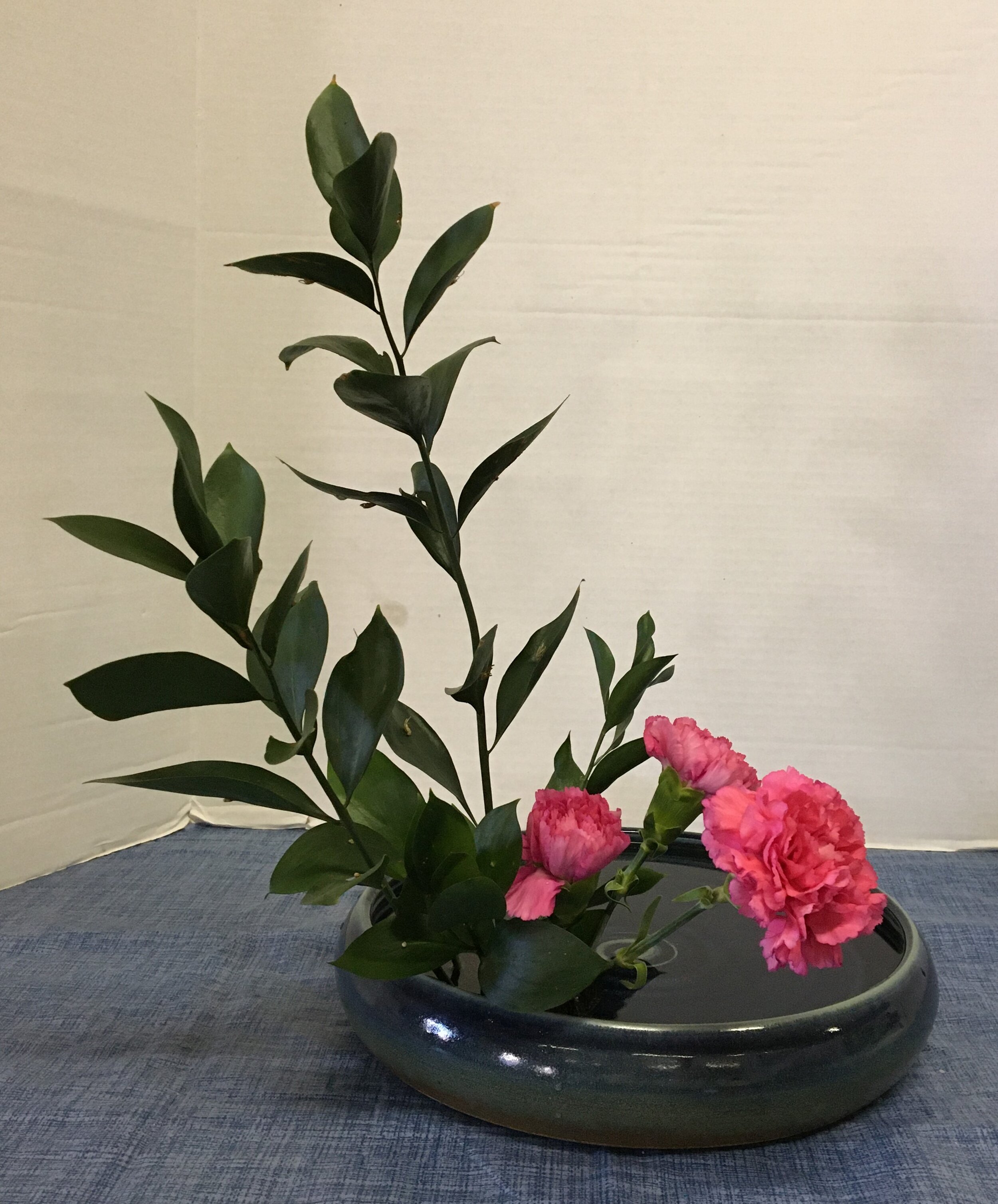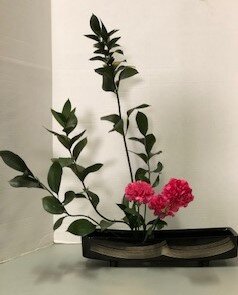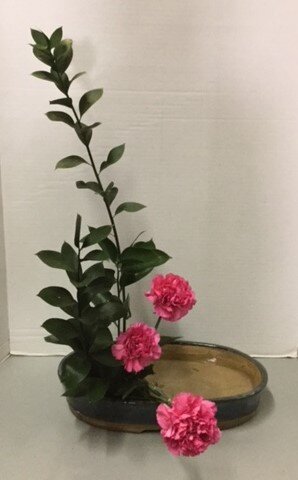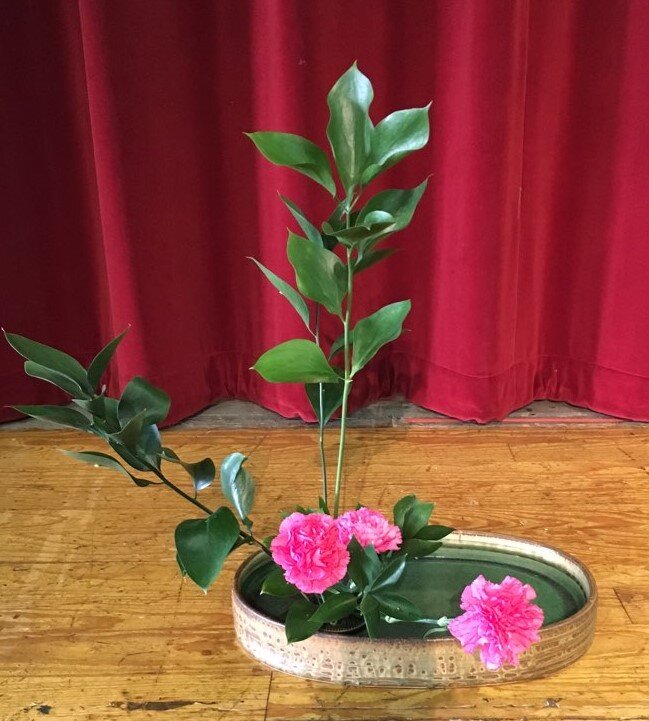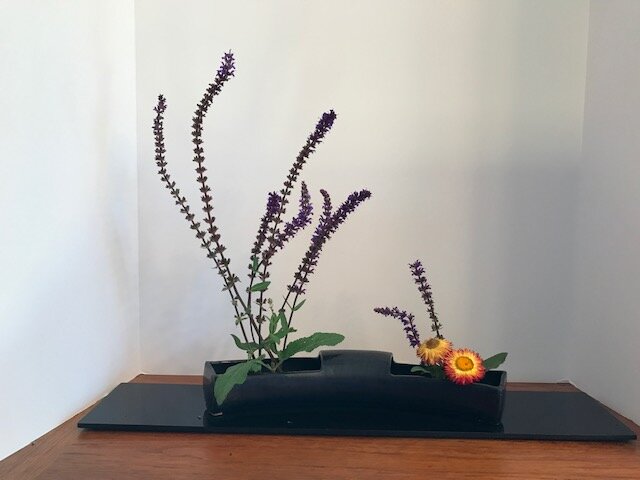Pre 2020 Workshops
1- Rikka Shimputai 2017
2- Shoka shofutai Isshuike
3- Visiting Professor - Tatehana
4- Freestyle
5- Visiting professor Hiramutsu -Suiriku futakabu-ike
6- Freestyle - Nori Noda
7-Members Gallery 2016
8- November 2019- sanshuike
9- Visiting Professor - Nishuike
10- Moribana
Rikka Shimputai 2017
Teresa Silverman
Rikka Shimputai was developed in the late 1990’s to address the need for Ikenobo to modernize. In the aftermath of World War II, traditional rikka, which dates from the 15th century, and the shoka arrangements, which date from the 18th century, were increasingly seen as out-dated and so rules-bound as to discourage new students. The challenge was to not throw out the baby for the bathwater. Meaning that the principles and practices of rikka and shoka could not be discarded. They form the foundation of Ikenobo and have stood the test of centuries. To modernize rikka, there needed to be a version that had fewer rules but still contained the essence of a traditional rikka. With fewer rules, it can be difficult to know how to get started. This workshop will present a creative and original method of translating the traditions of rikka shofutai to making a rikka shimputai arrangement. This method has been formulated by Senior Ikenobo Professor Manabu Nodaand was taught to advanced students in April 2017 at the Ikenobo headquarters in Kyoto.
Shoka Shofutai Isshike
Mimi Santini-Ritt
Shoka celebrates the vitality and cyclical nature of plants through an understanding of shussho, the inner beauty of plants. Traditional shoka shofutai consists of three yakueda: shin, soe, and tai, supported by ashirai adding depth and substance to the yakueda. Although shin, soe, and tai have individual functions, their relationship to one another is what creates harmony and balance within the shoka as a whole. Shin is central, tall, expressing upward movement, reaching toward the sun. Soe, usually 2/3 the height of shin, is positioned to the rear of shin, moving toward the yo or sunny side, with its front surface facing shin, expressing the passage of time in its life cycle. Tai, usually 1/3 the height of shin, is positioned to the front of shin, moving toward the in or shady side, with its front surface facing up toward shin and back toward soe, representing new growth.
A strong, distinct mizugiwa is essential in shoka as it represents the growth of plants from the earth. The mizugiwa is the straight rise of stems, without leaves, from the center of the container, approximately 8 cm (3 inches) in height in a classical arrangement, before the stems bend into their relative positions for soe, tai, and various ashirai. Viewed from the front, a correct mizugiwa will appear to be a single stem growing straight up out of the water.
Shoka shofutai may be isshuike, using only one type of floral material; nishuike, using two types of floral materials; or sanshuike, using three types of floral materials.
Jiyuka
Teacher: Gail Bartlett
Free style (jiyuka) in the Ikenobo tradition is meant to be a truly creative endeavor to express the arranger’s feelings without hard, fast rules. However, guidelines were developed to assist in the creative process. A wonderful aspect of freestyle is the unlimited choice of containers that are allowed and, in fact, encouraged, to enhance creative expression. Basic free style composition can be upright to evoke vitality, slanting to demonstrate movement, or horizontal to express peacefulness, with an emphasis on line, surface, points, or mass. This workshop emphasizes surface, with a summer theme
The free style curriculum teaches that surface character expresses strength, boldness, volume, and humor. Insertion points may be focalized in one area or spread out, with no requirement for a mizugiwa. Also evident is the natural beauty of the arrangements.
Tatehana
Teacher: Professor Hiroko Kawai, Ikenobo Headquarters, Kyoto, Japan
Tatehana (546-1300) was considered a sacred arrangement used as a flower offering on the altar of Buddha alongside an incense burner and candlestick. Tatehana predated the more structured and larger rikka style with its stricter rules. The tatehana design included a main center stem, motoki, usually of pine, considered the object of prayers, and flowers at the bottom of the motoki surrounding its base, shita-kusa. Tatehana had no strict shape and there are no written records to document for arranging since the earliest records for flower arranging date from the late 15th century. Prior to written records, early forms of arrangements were described in maki-e (picture scrolls), illustrated sutras, embroideries, and poems. There is a resurgence of interest in tatehana, understandable since the form is traditionally simple and small, and very beautiful.
Professor Kumi Hiramatsu: suiriku futakabu-ike
Arrangements made during the workshop taught by visiting Professor Kumi Hiramatsu.
We were fortunate to welcome Professor Hiramatsu from Ikenobo headquarters to Boston in October. She taught a workshop on suiriku futakabu-ike, a two-group arrangement reminiscent of a water scene by a pond. Land-based plants are placed in shin and soe to form the rear o-kabu group, and water-based plants form tai in a separate me-kabu group to the front. A rock placed in front of o-kabu emphasizes this difference. Professor Hiramatsu also gave a demonstration to Ikebana International members on freestyle arrangements and rikka shofutai.
October 2019 Free Style
The October Workshop in Free Style was taught by Professor Noritake Noda of New York City who teaches both Ikenobo Ikebana and New York Style Flower Arrangement classes. Professor Noda stressed the importance of space and sense of movement in free style as with other types of Ikenobo Ikebana designs. He discussed the use of a single element or group structure as a focal point. Using variegated aspidistra as one of the floral materials, Professor Noda demonstrated three techniques for creating patterns in the leaf. Students were allowed to select any of the techniques to create their own designs. Curving the leaf created a ‘bow’ pattern; splitting the leaf along its veins created a ‘torn’ or ‘shredded’ pattern; folding the leaf created a ‘wave’ pattern. All of these techniques enhanced creativity of the design as demonstrated in the workshop photos.
Members’ Gallery 2016
Sanshuike
Teacher: Teresa Silverman
Sanshuike is a modern shoka style which uses three kinds of floral material in its arrangement. It is brighter, more colorful, with a greater sense of space and volume, than either isshuike (one material) or nishuike (two materials). Whereas isshuike and nishuike emphasize the beauty of natural order, sanshuike does not require that same focus, e.g. tree material may be inserted in front of grass material. And, whereas land and water materials are not mixed together in nishuike, they may be used together in sanshuike. Shoka containers should have an opening at the top that is wider than the base, and the top rim should be flat and even.
Nishuike
Teacher: Professor Hiroko Kawai, Ikenobo Headquarters, Kyoto, Japan
Shoka shofutai may be isshuike (one floral material), nishuike (two materials), or sanshuike (three materials). Visiting Professor Hiroko Kawai from Ikenobo Headquarters, Kyoto, explained that shoka can be classified into shin, gyo, and so styles, reflecting the difference in character of plants, e.g. are materials straight (shin), or more branching and relaxed (gyo), or cascading and weeping (so)? Understanding these styles is important for selecting the appropriate vase for a shoka arrangement and an appropriate arrangement for a space to display it. Professor Kawai demonstrated by creating a shin, a gyo, and a so style nishuike using ruscus and small roses.
Moribana November 2019
Lotus Workshop - Mimi Santini Ritt
Program included a brief slide presentation on the special lotus shoka (shichi-shuden) and rikka (isshiki-mono) arrangements and on handling lotus, followed by video clips taken at the Boston Chapter's 25th anniversary celebration. The celebration was held at the home of Verda Dale in Amherst, MA. Verda had a lotus pond on her property and the video features Verda talking about lotus, followed by Ritsuko Chojin, Sue Stockwell, and Masako Yatsuhashi making arrangements (shoka shofutai, freestyle, and shoka shimputai). Portions of the video were shown. Verda, Sue, and Masako are former Presidents of the Boston Ikenobo Chapter. The video is interesting from both Boston Chapter history and lotus-arranging points of view. Thank you Becky Olofsson for supplying the video.

